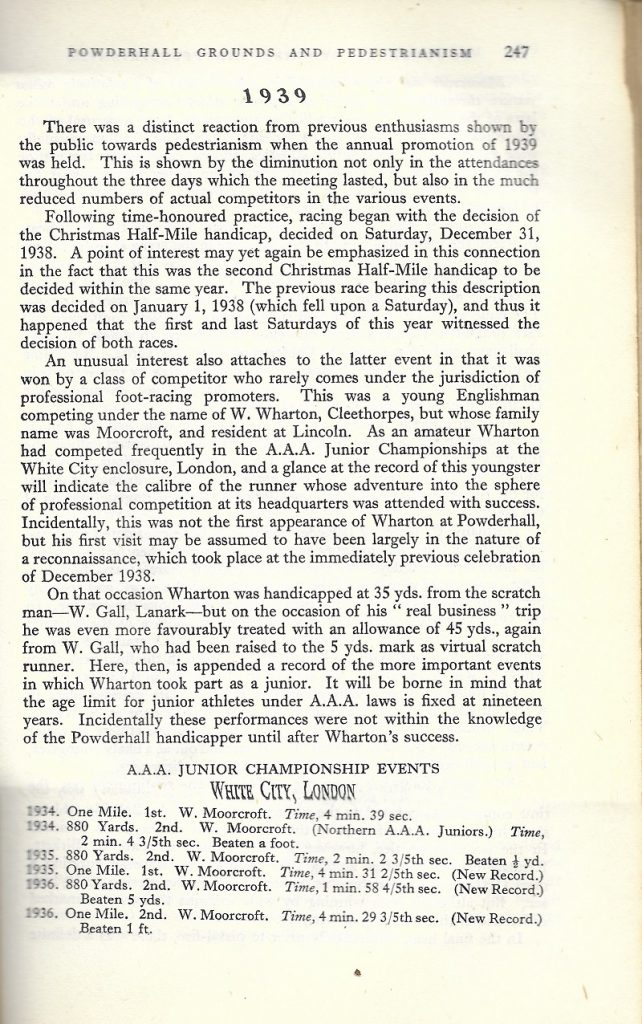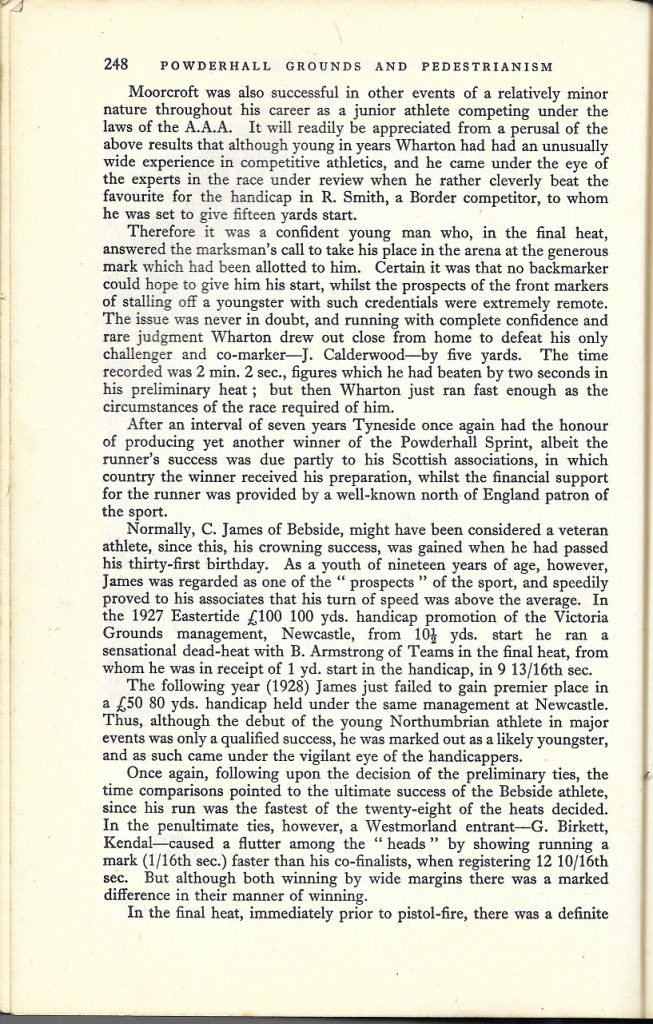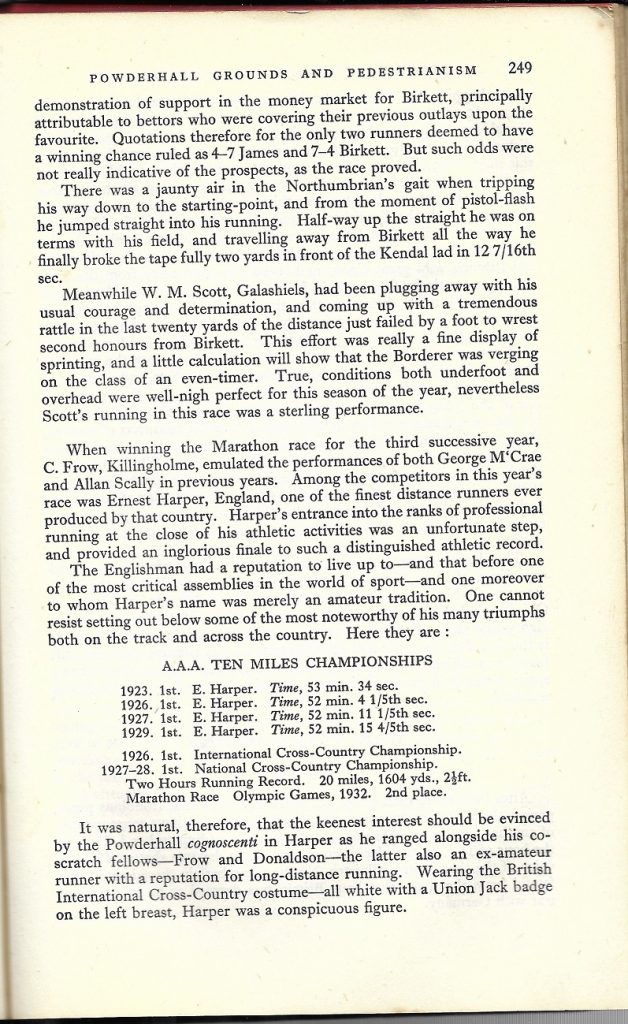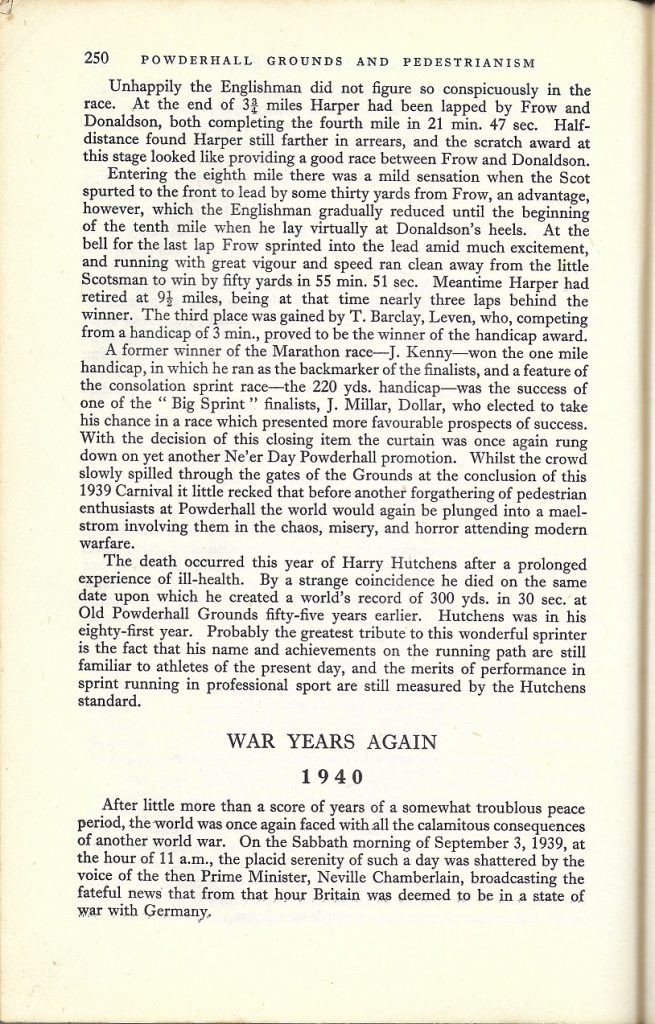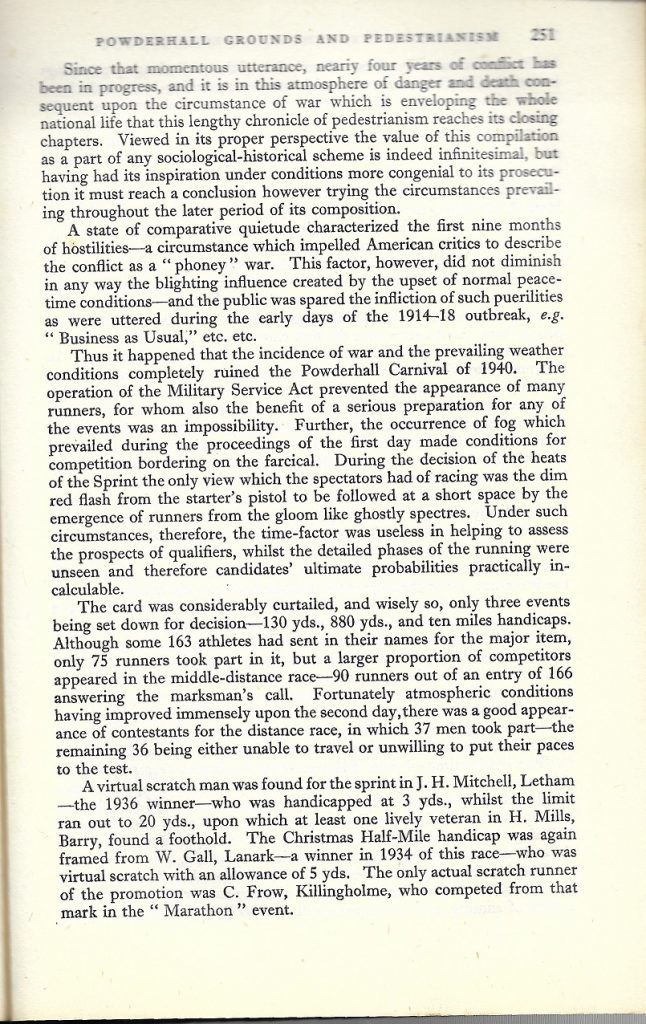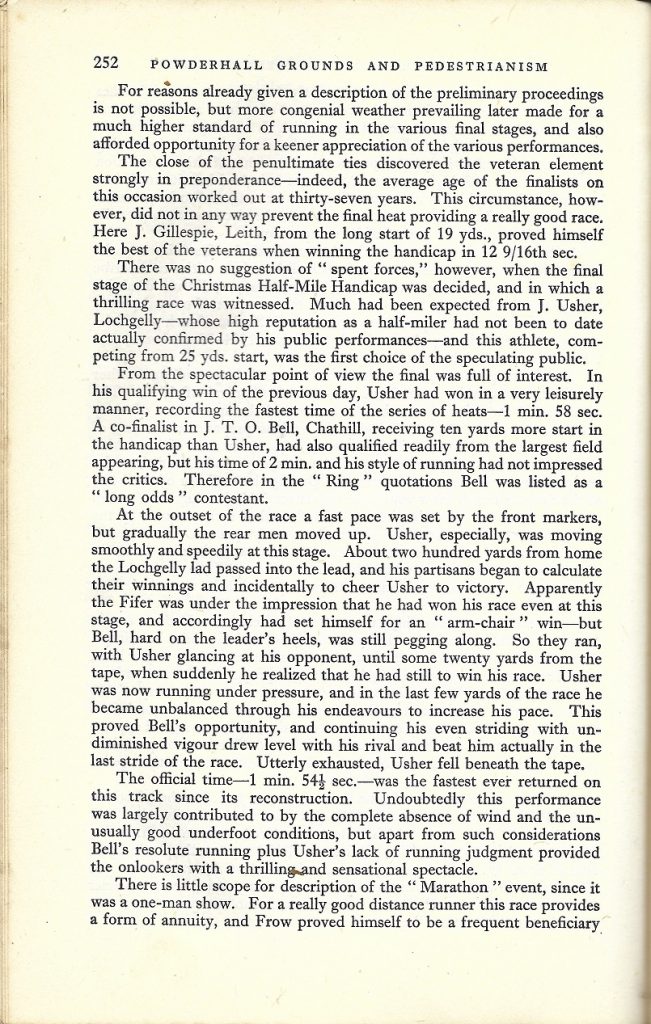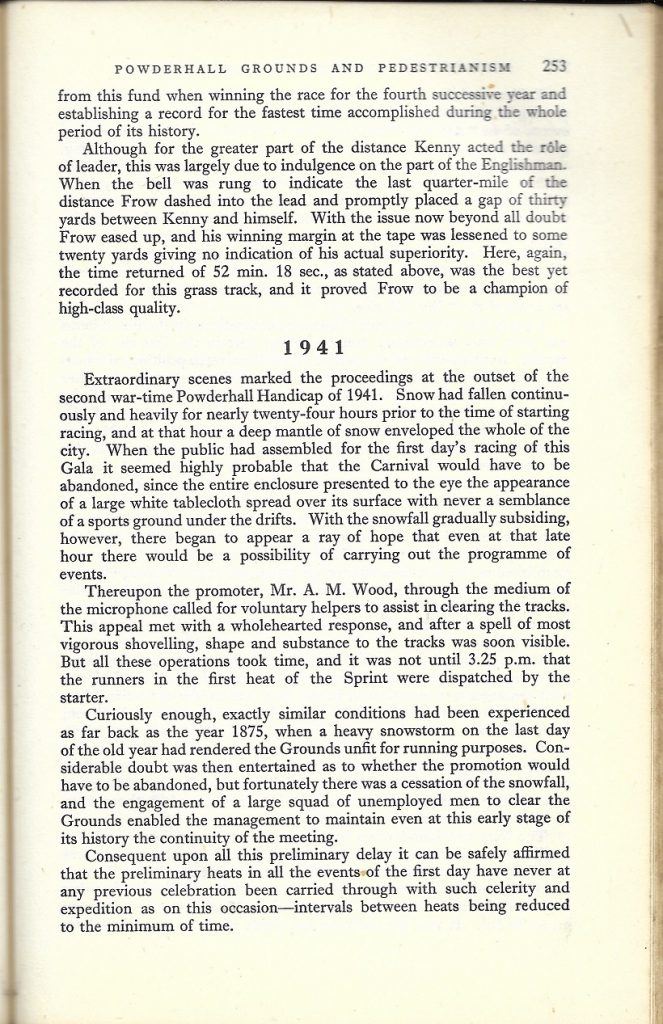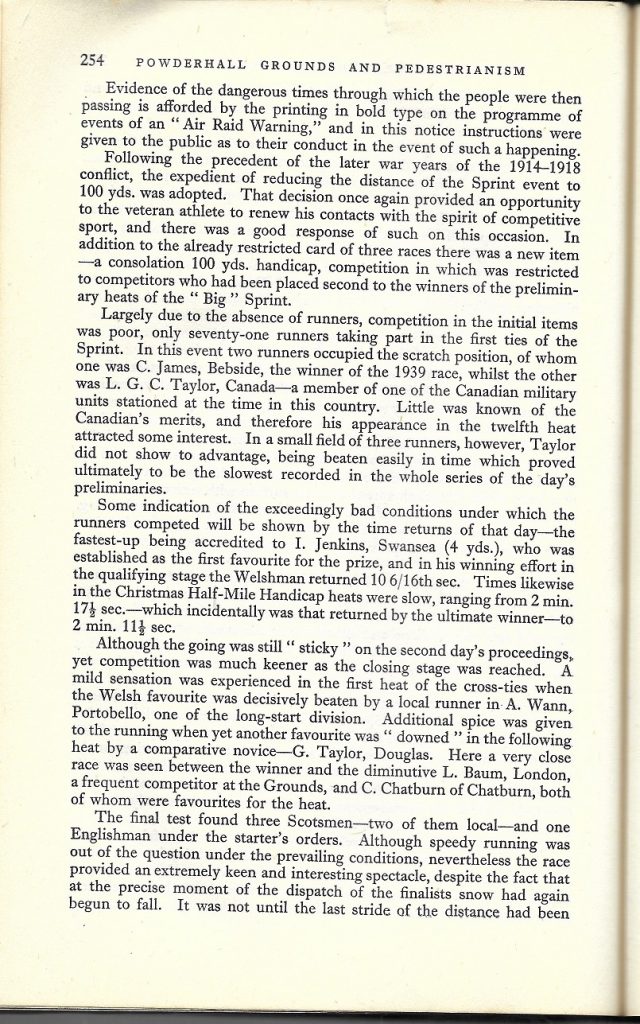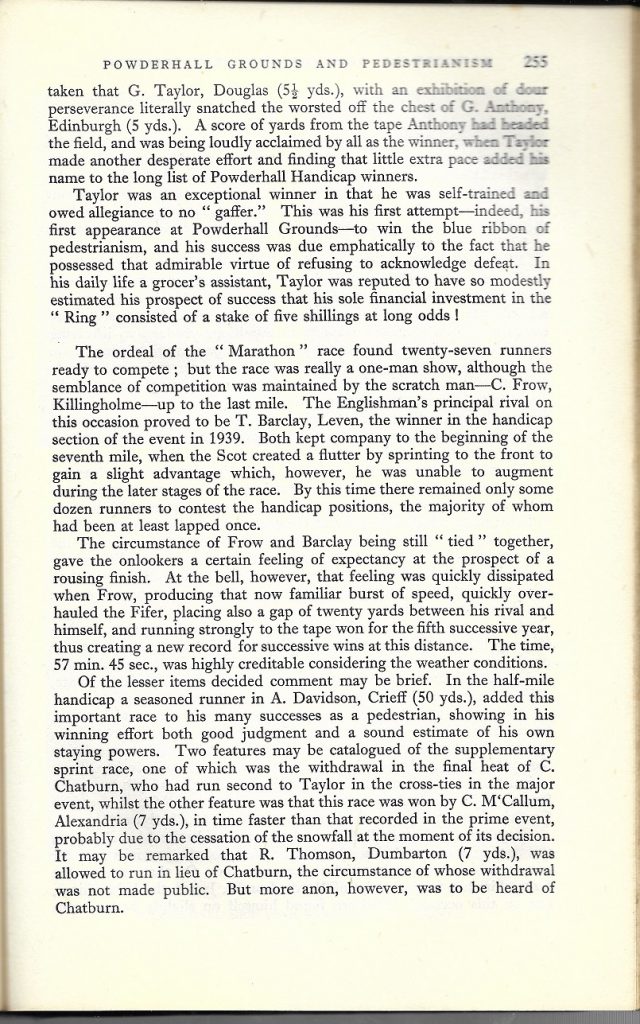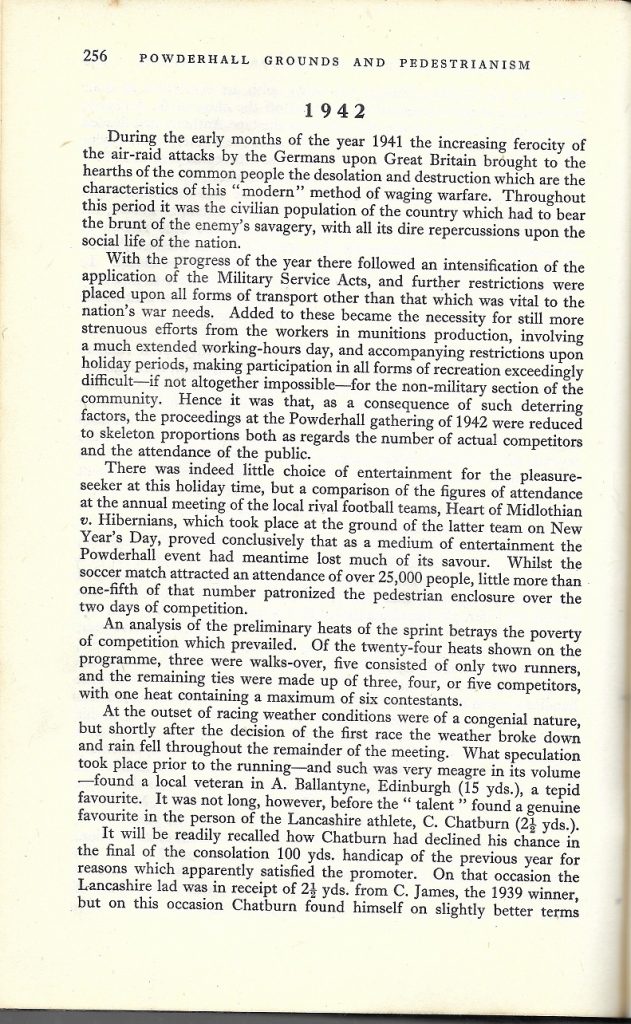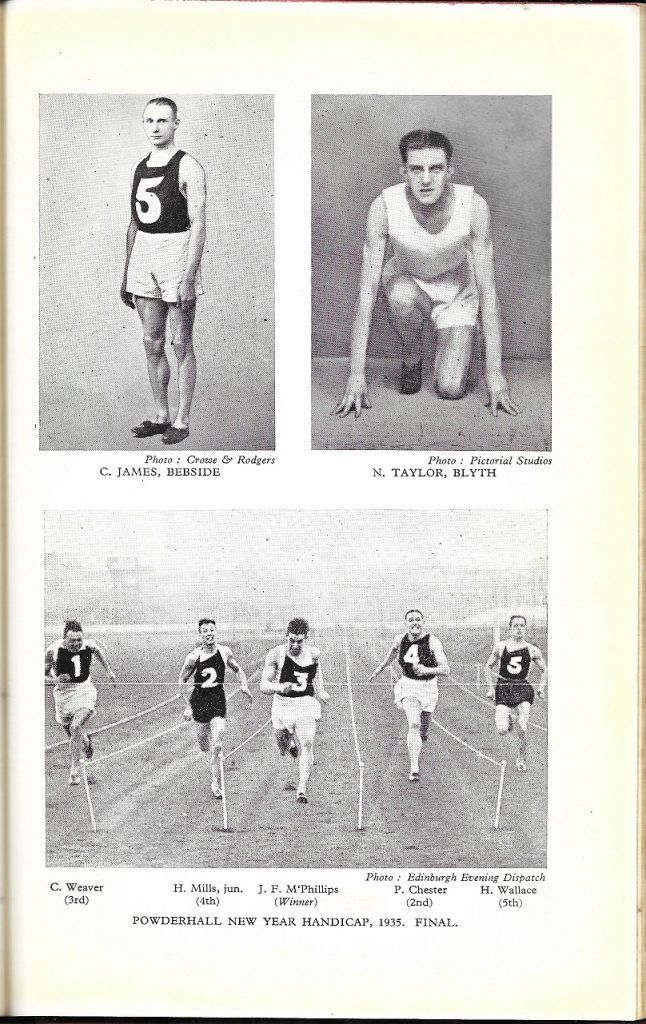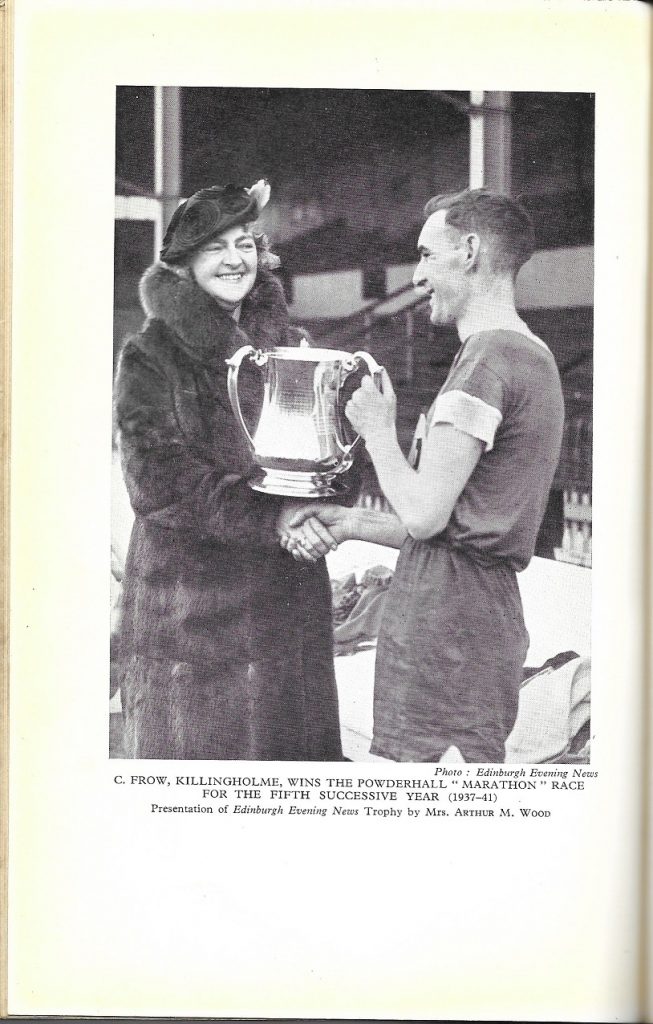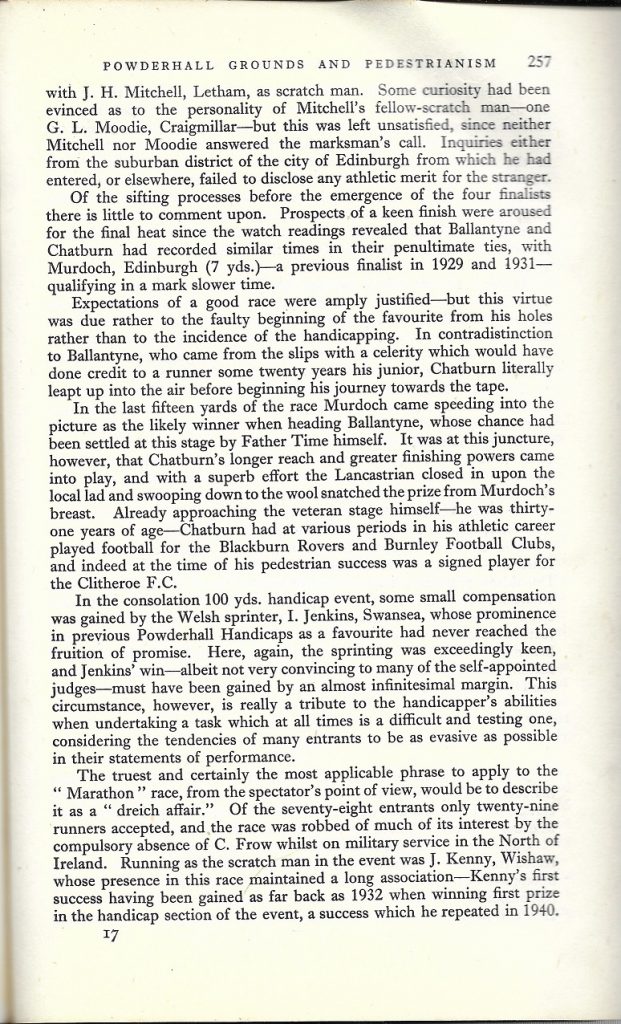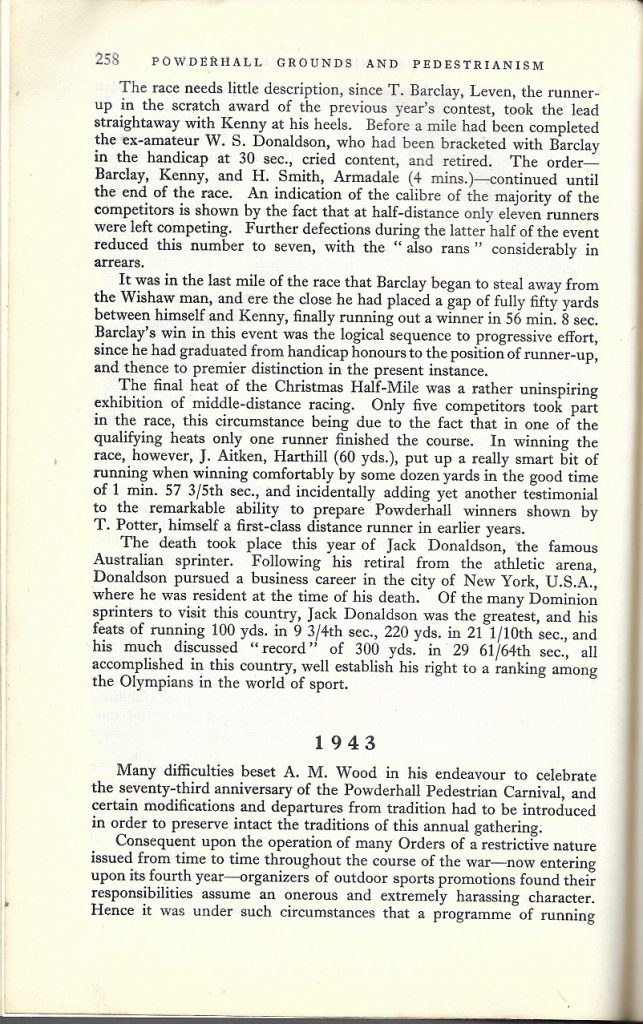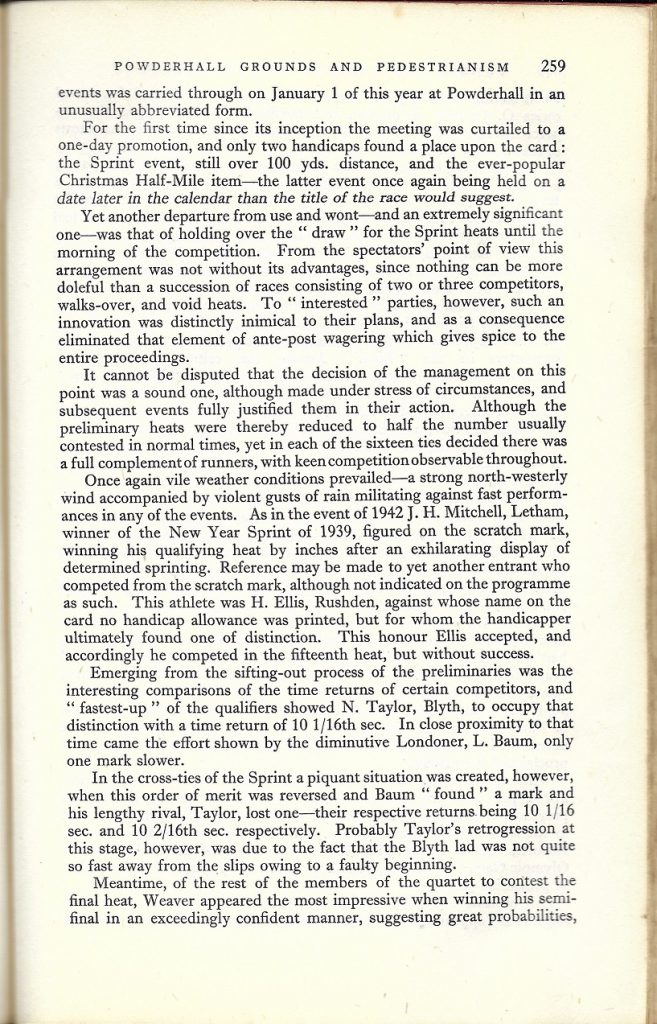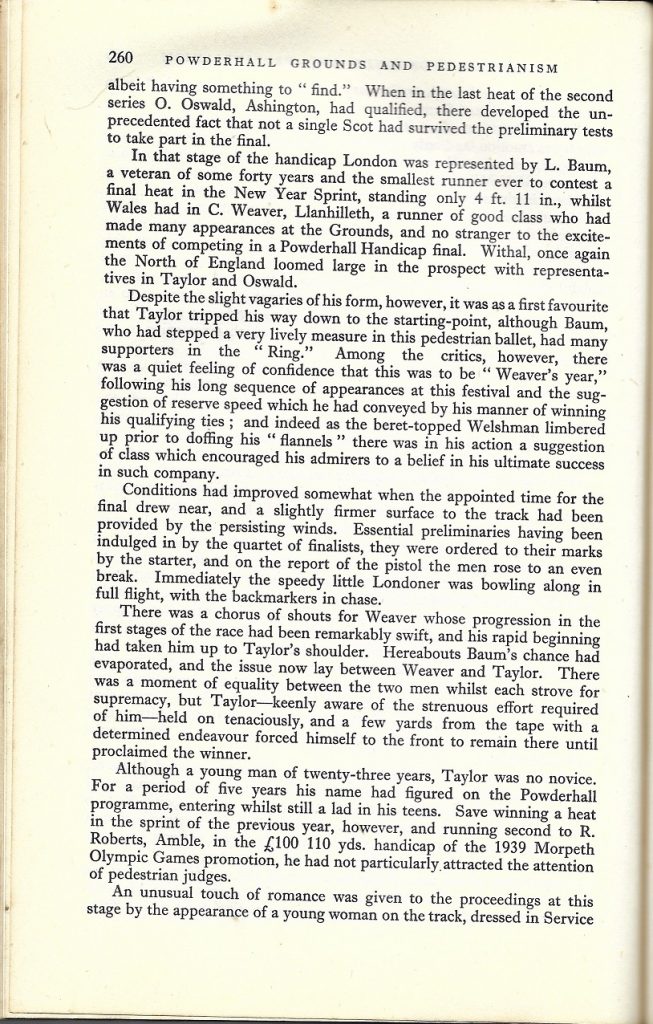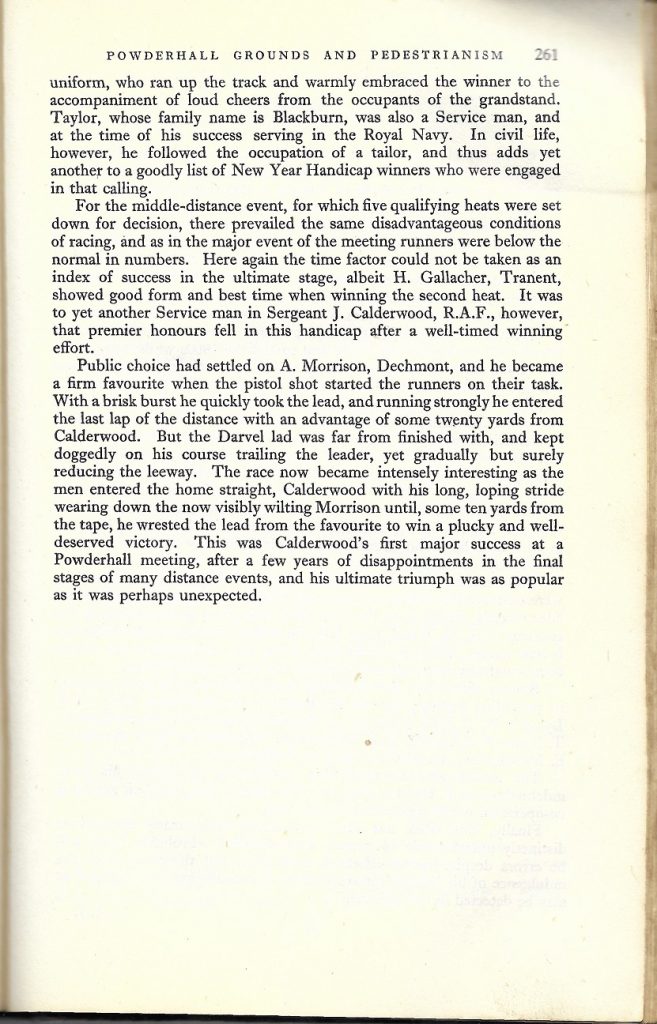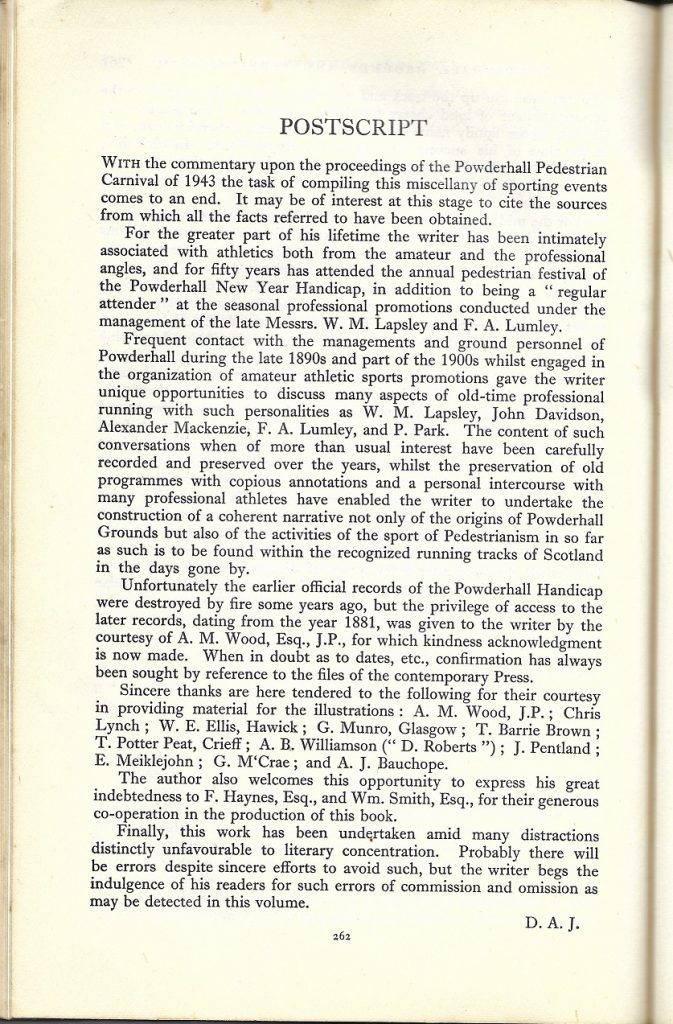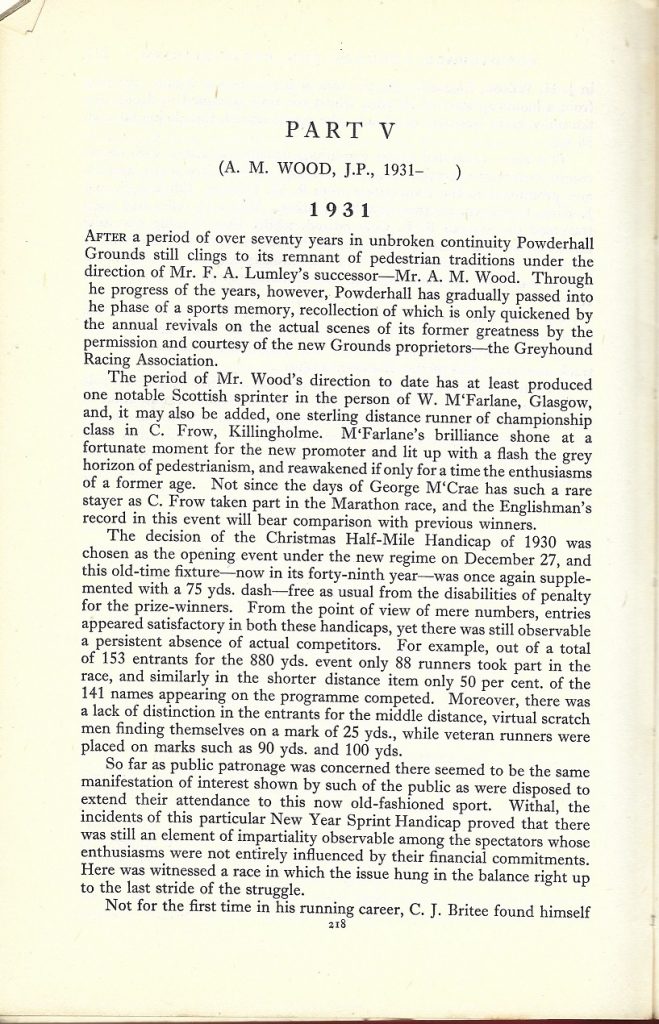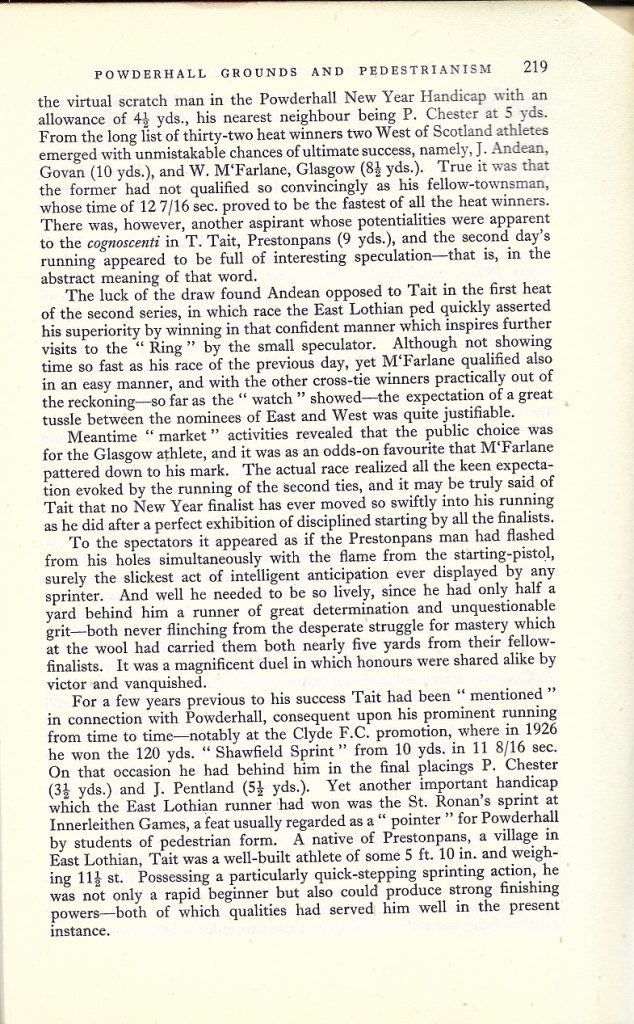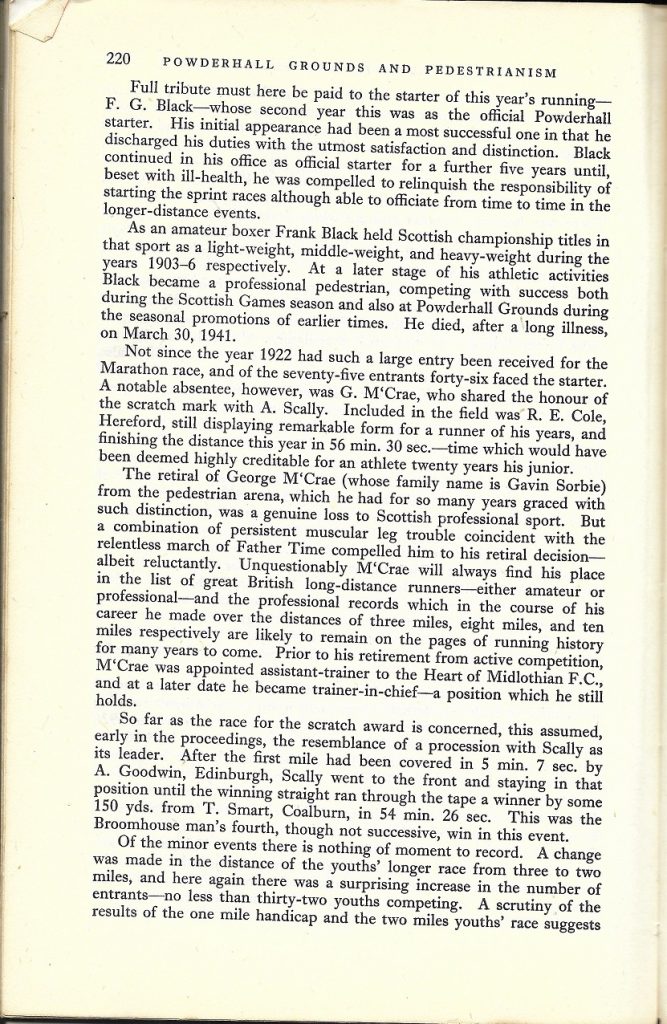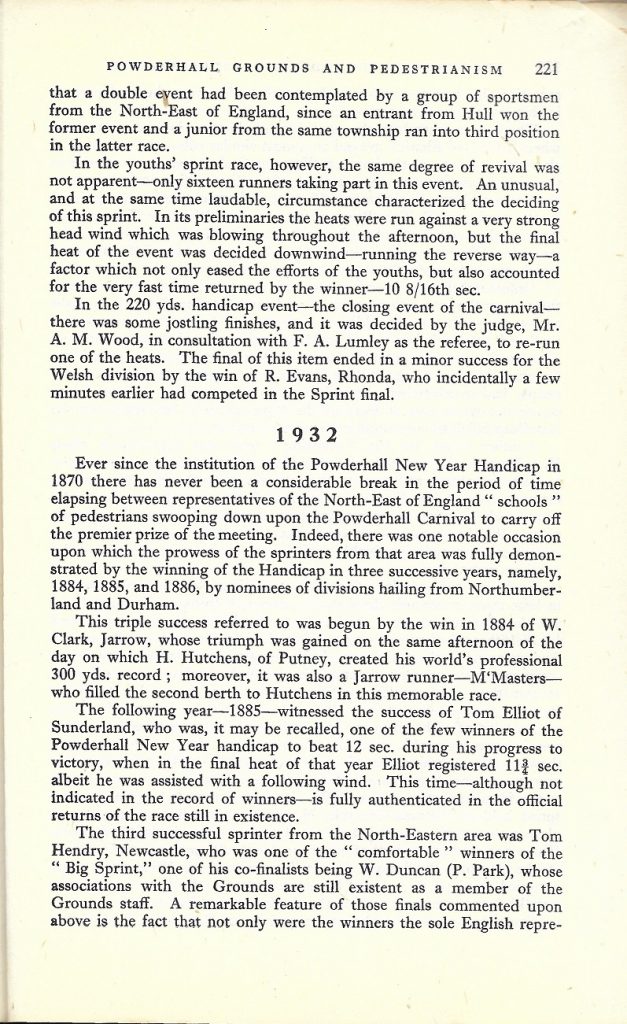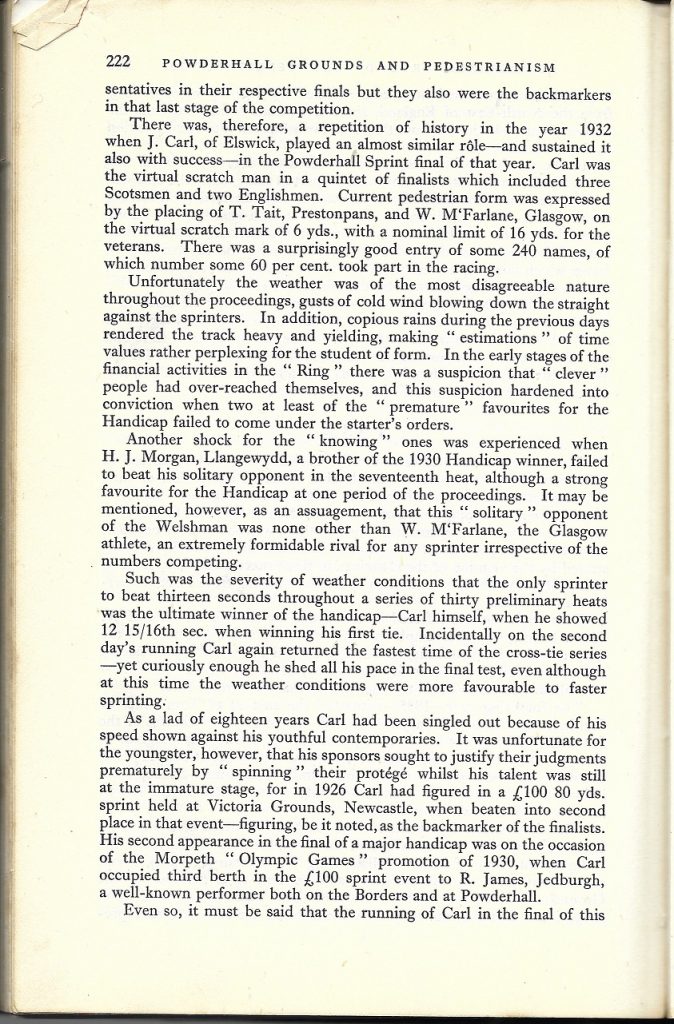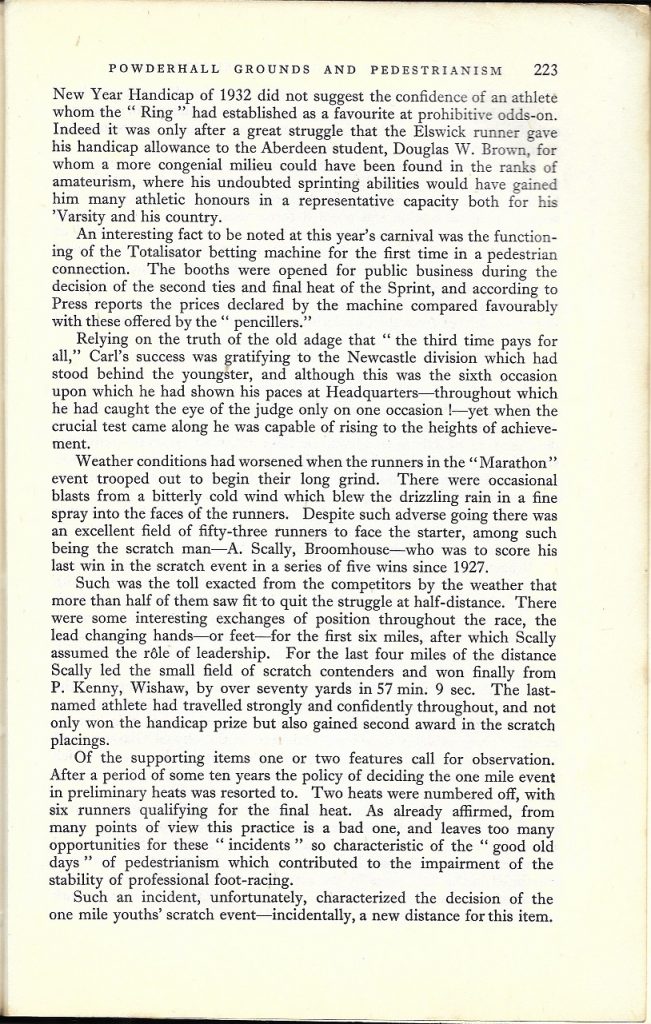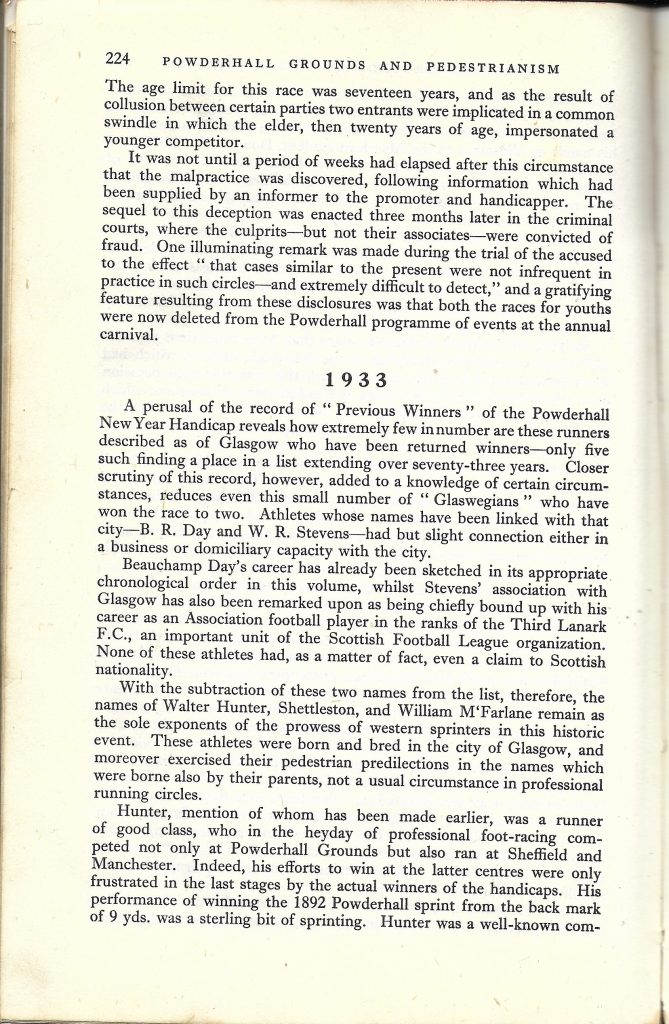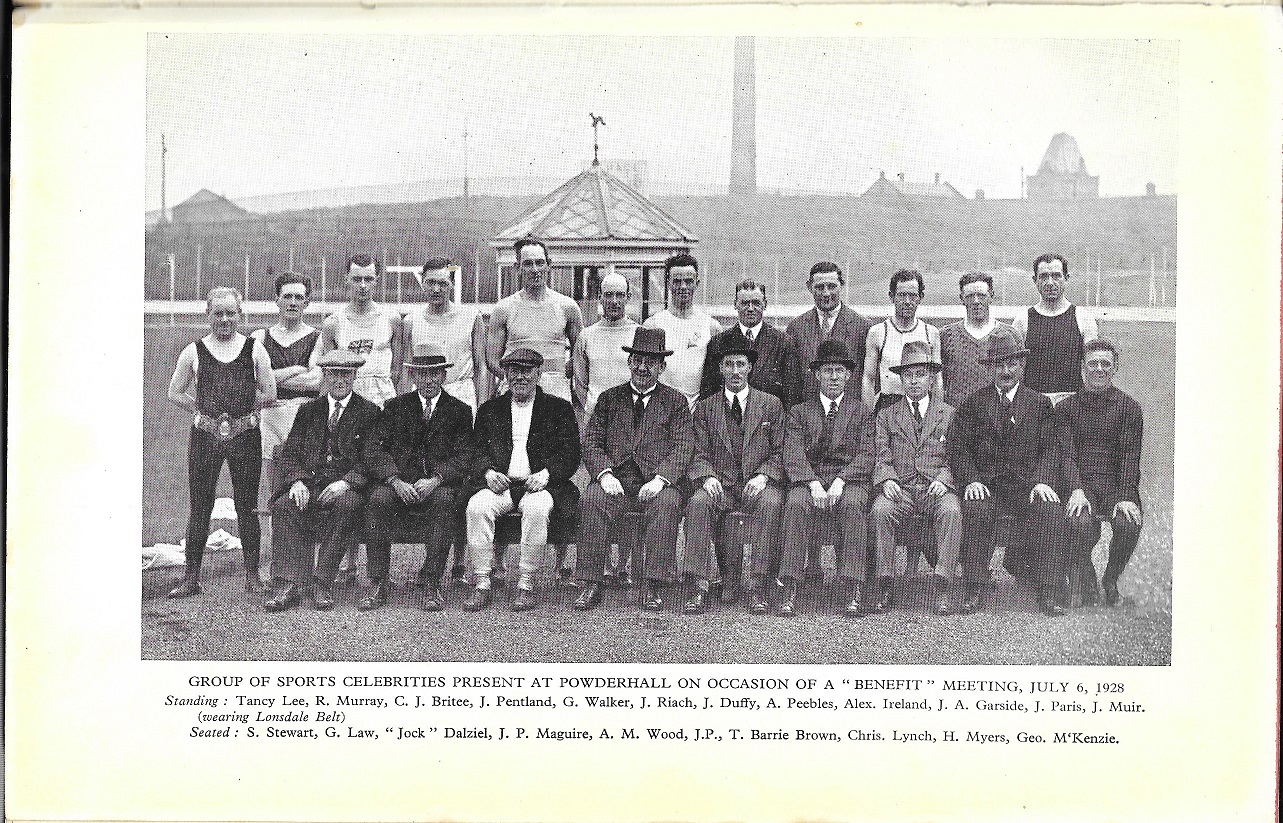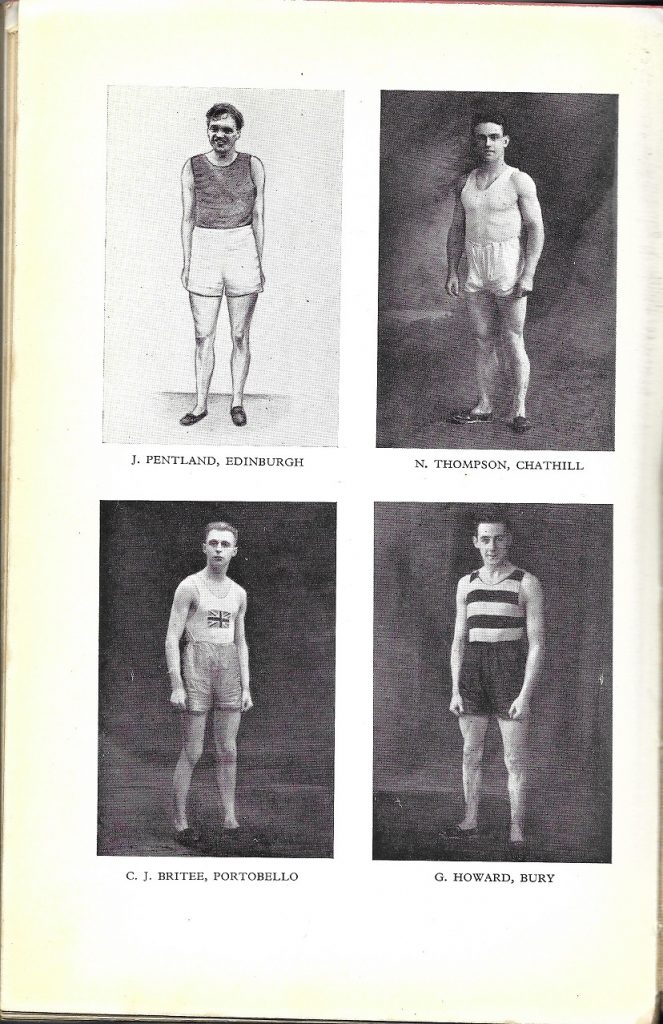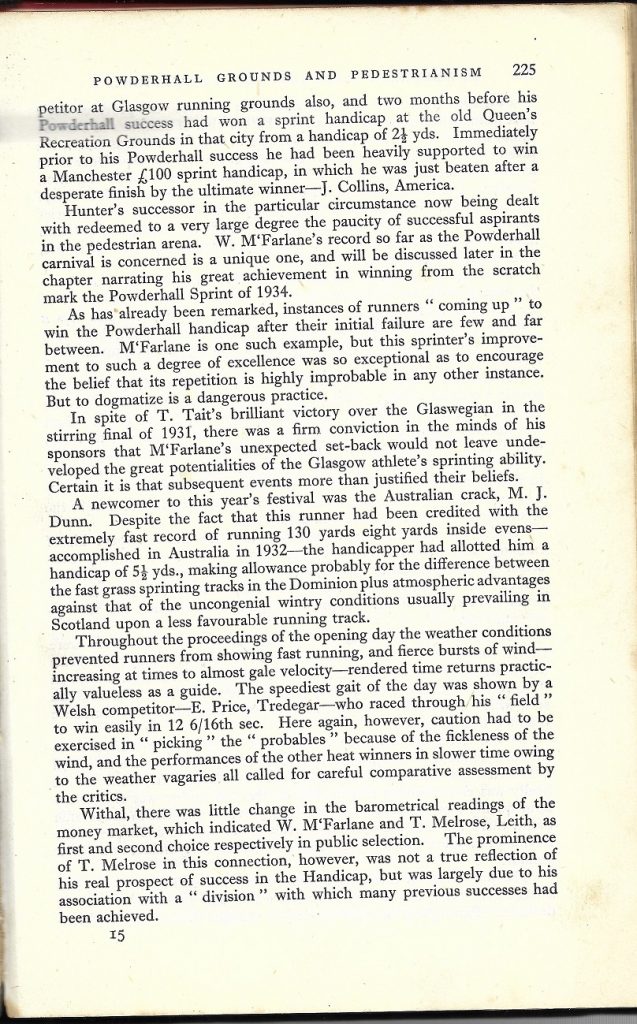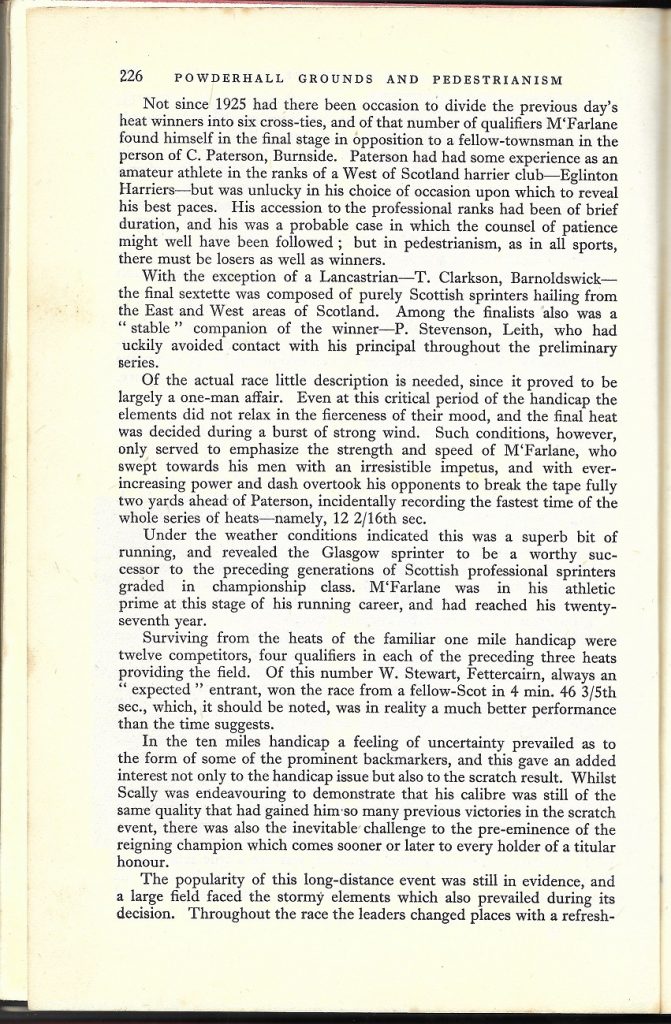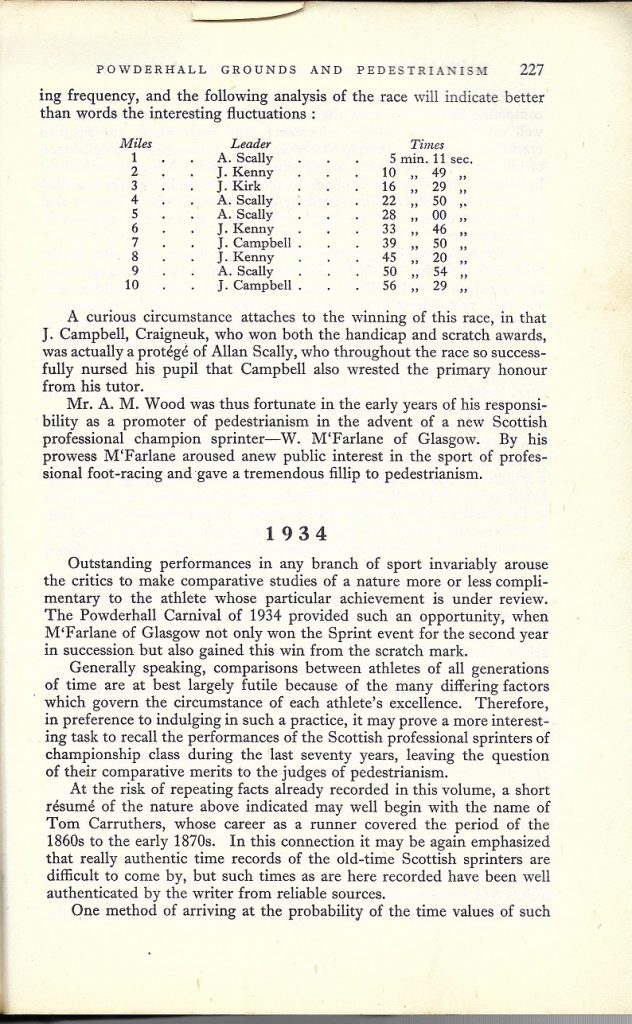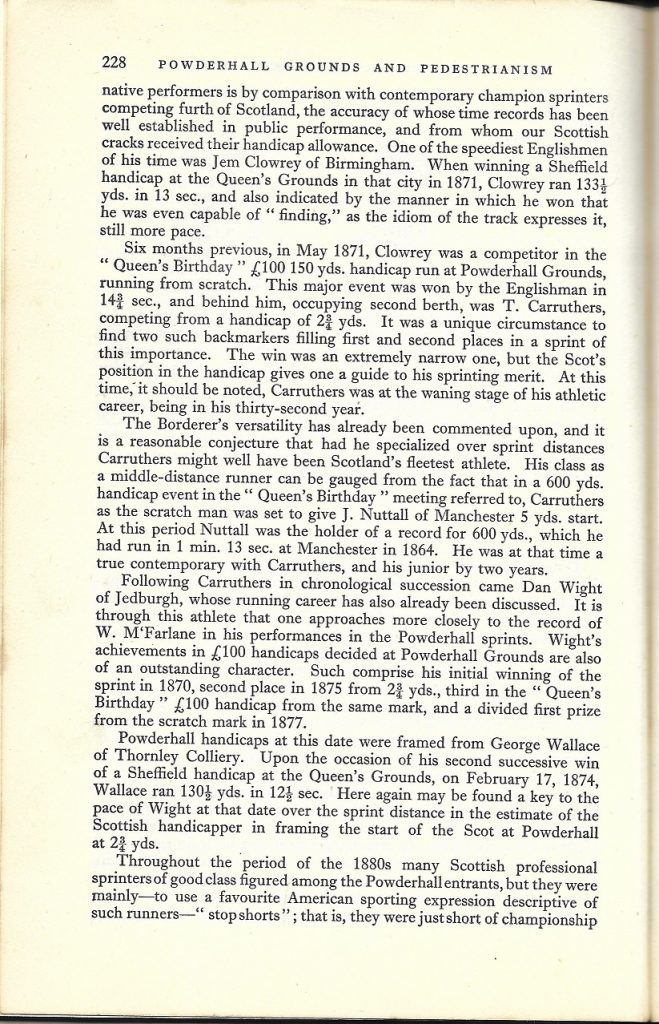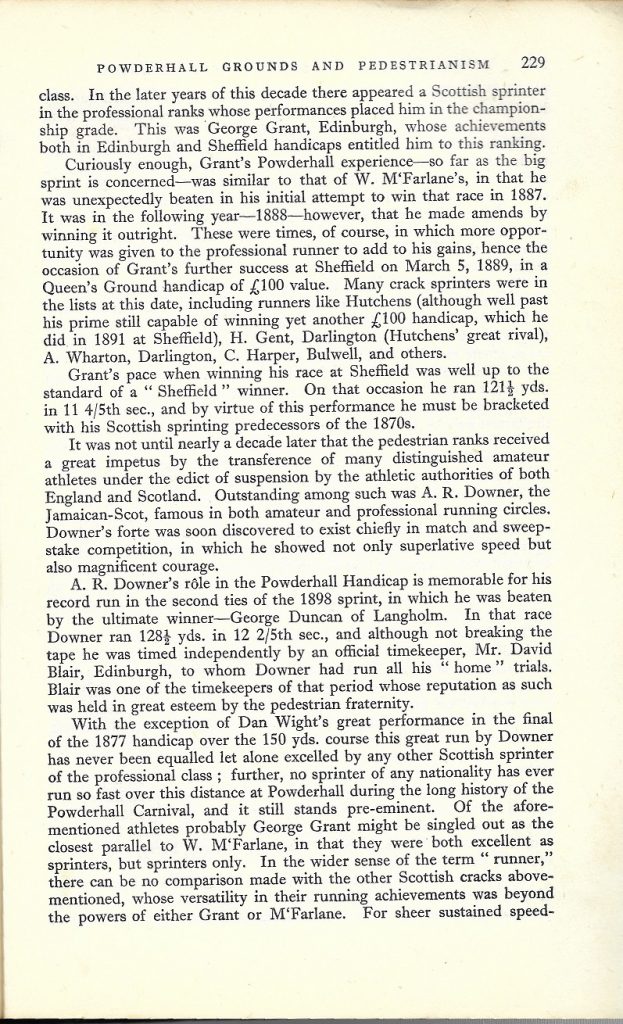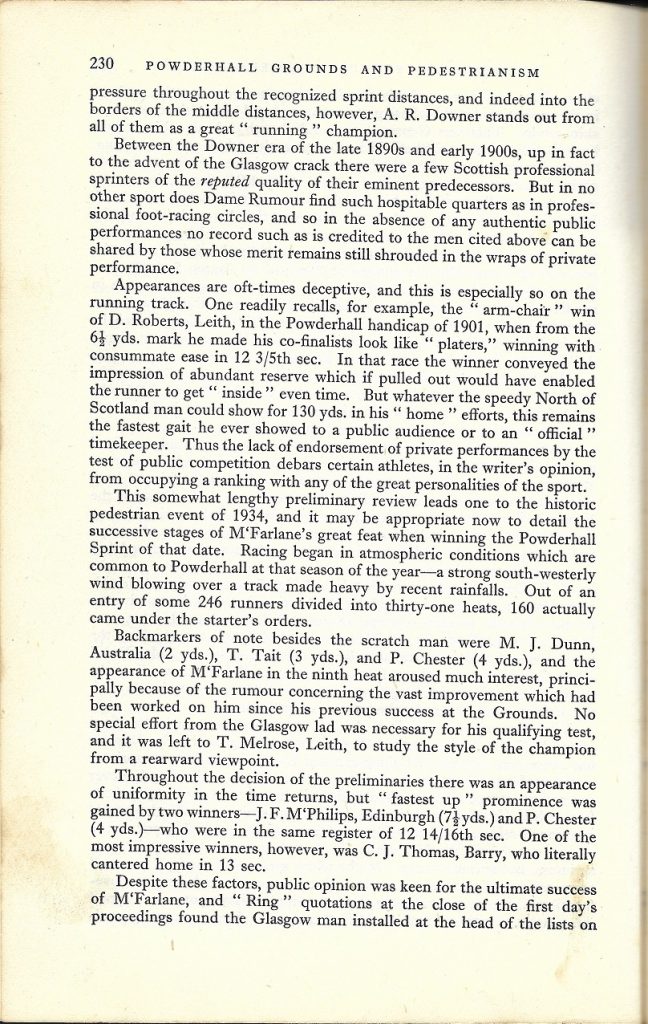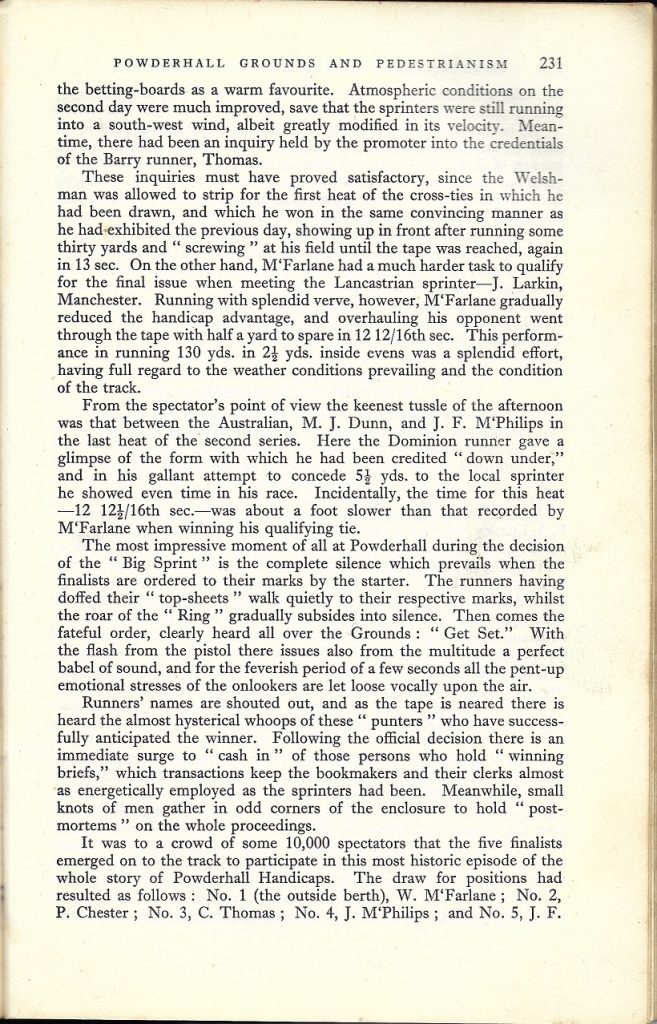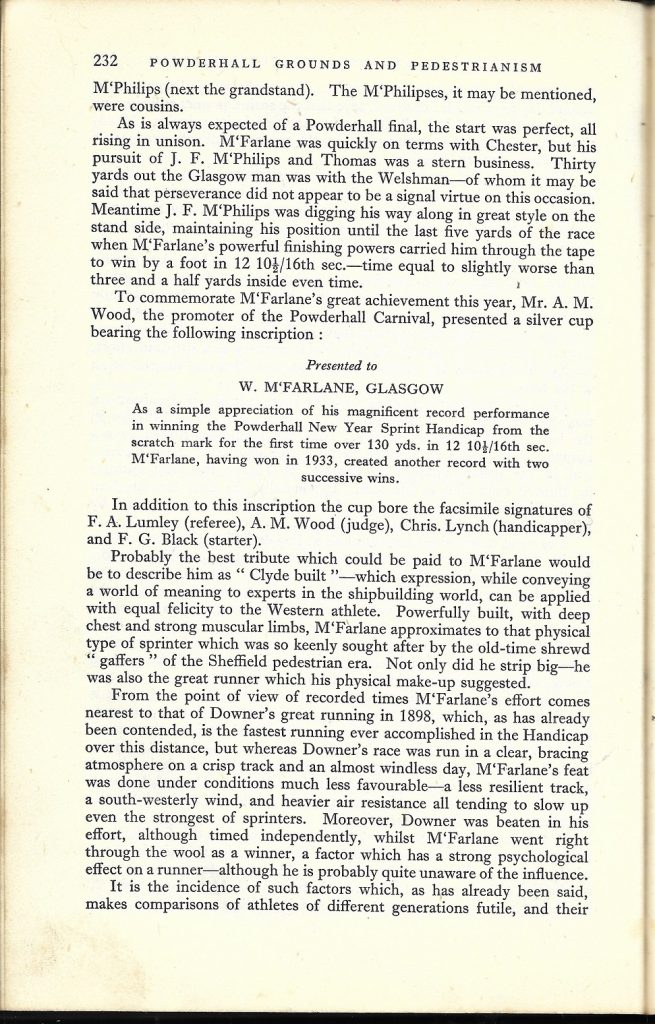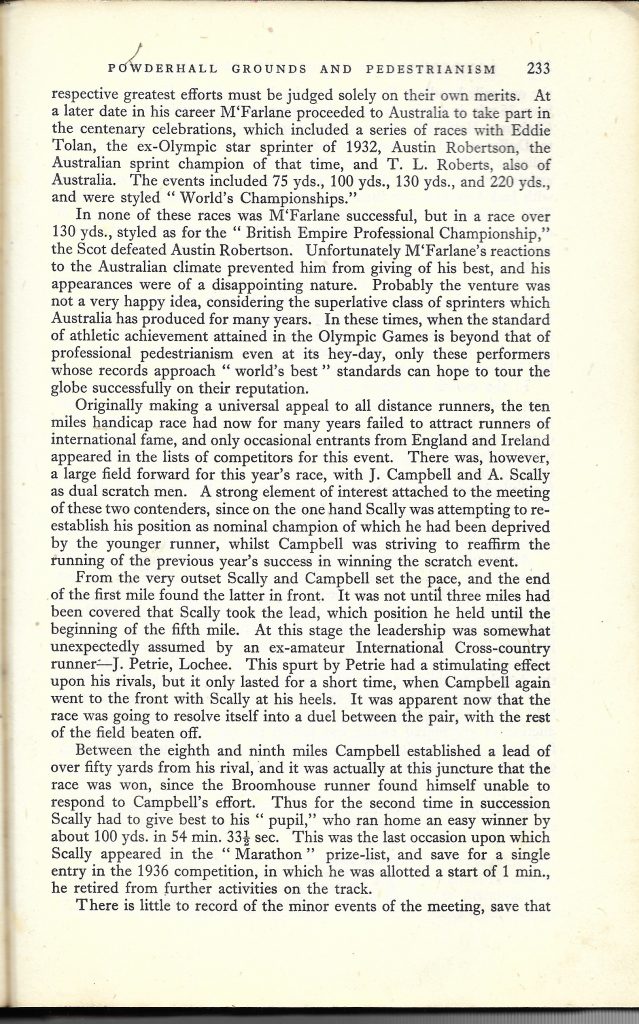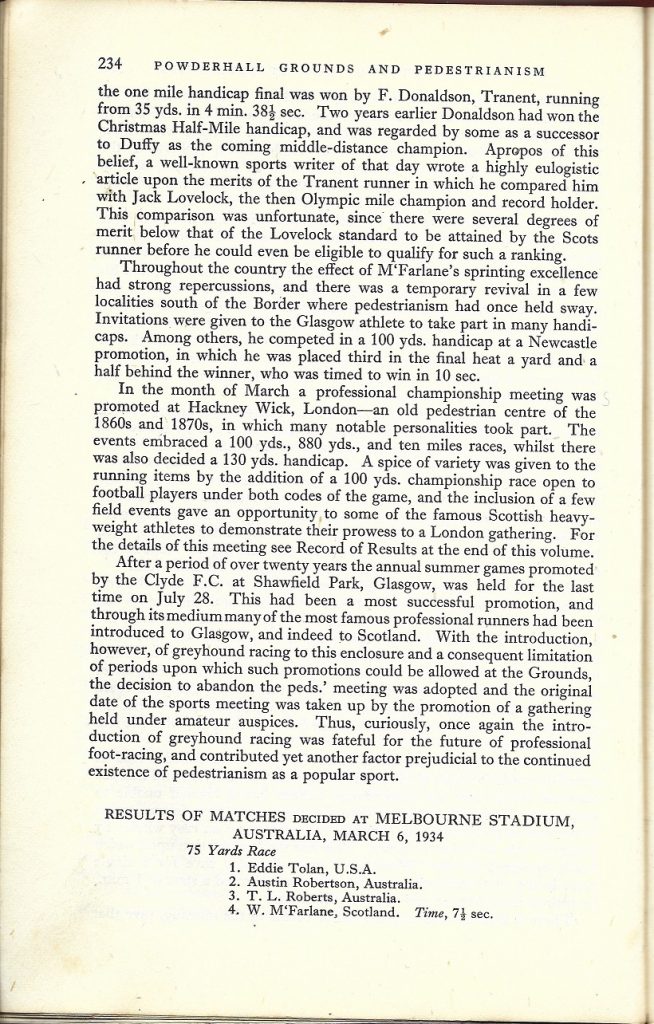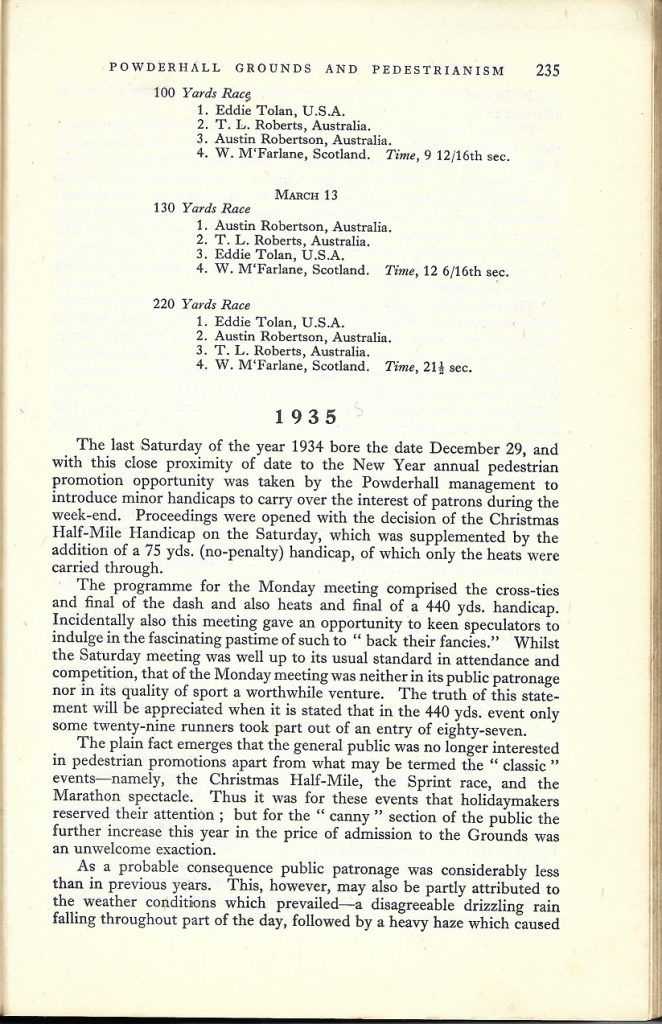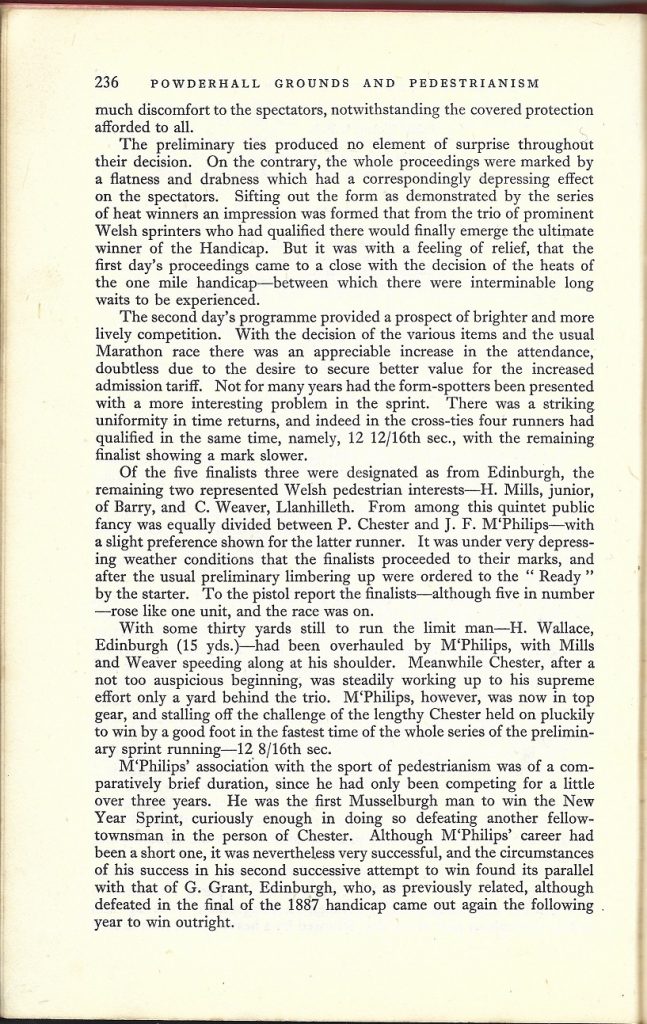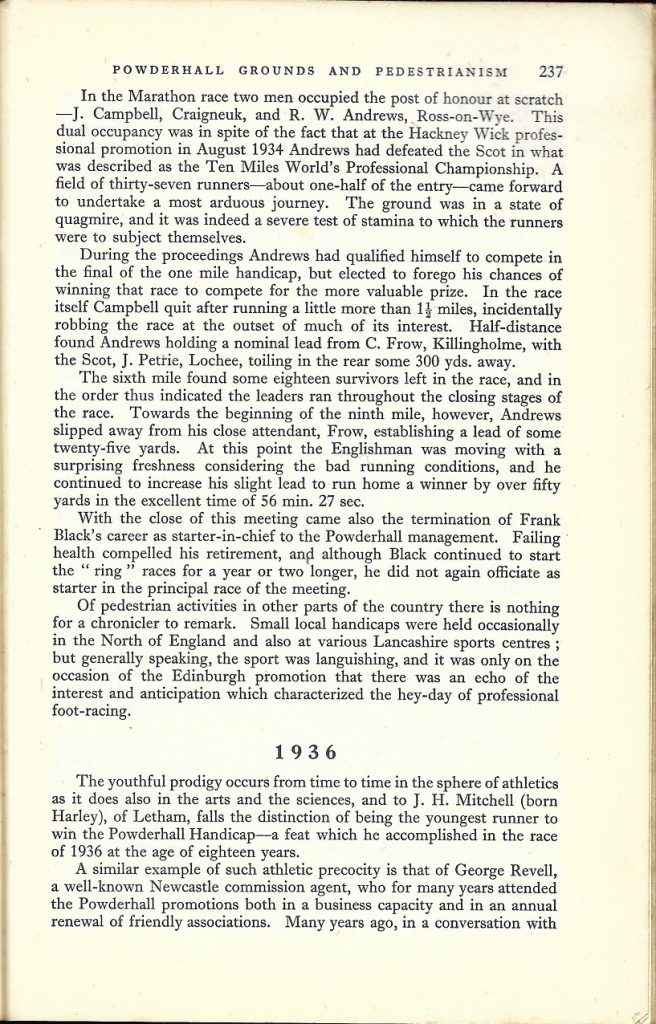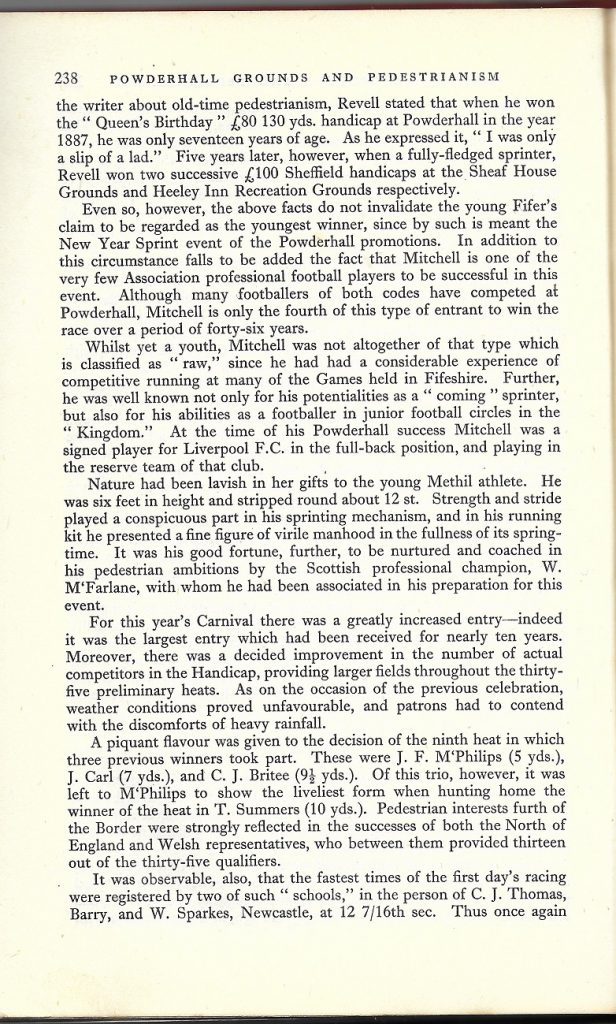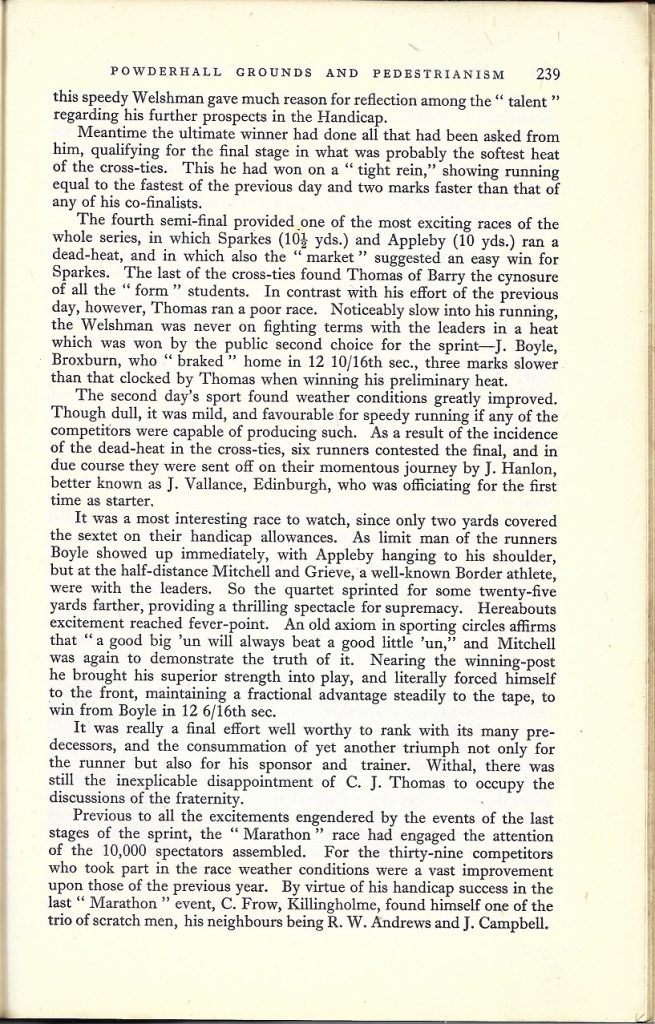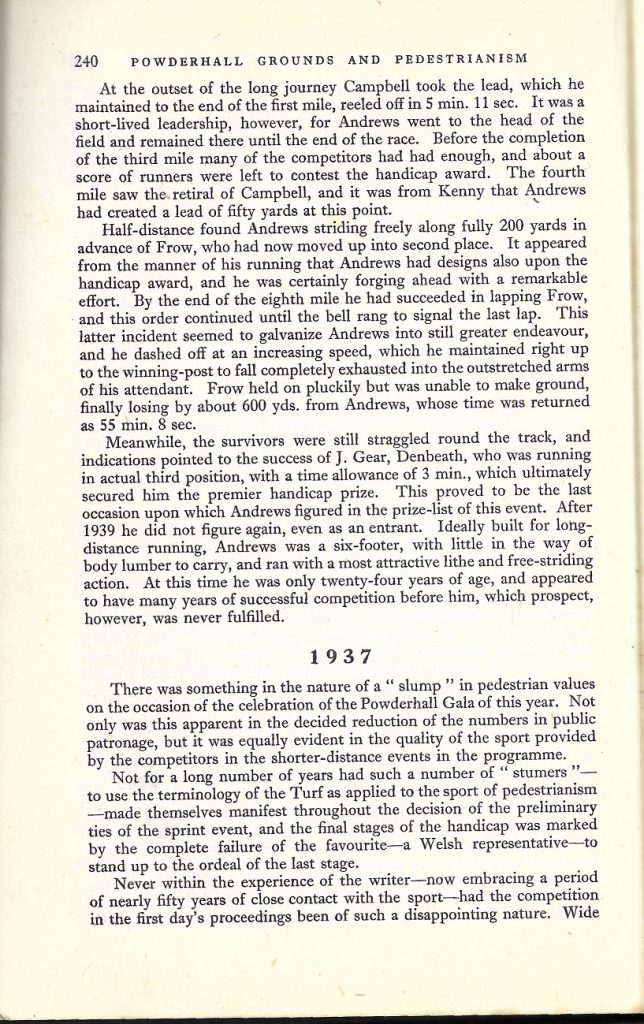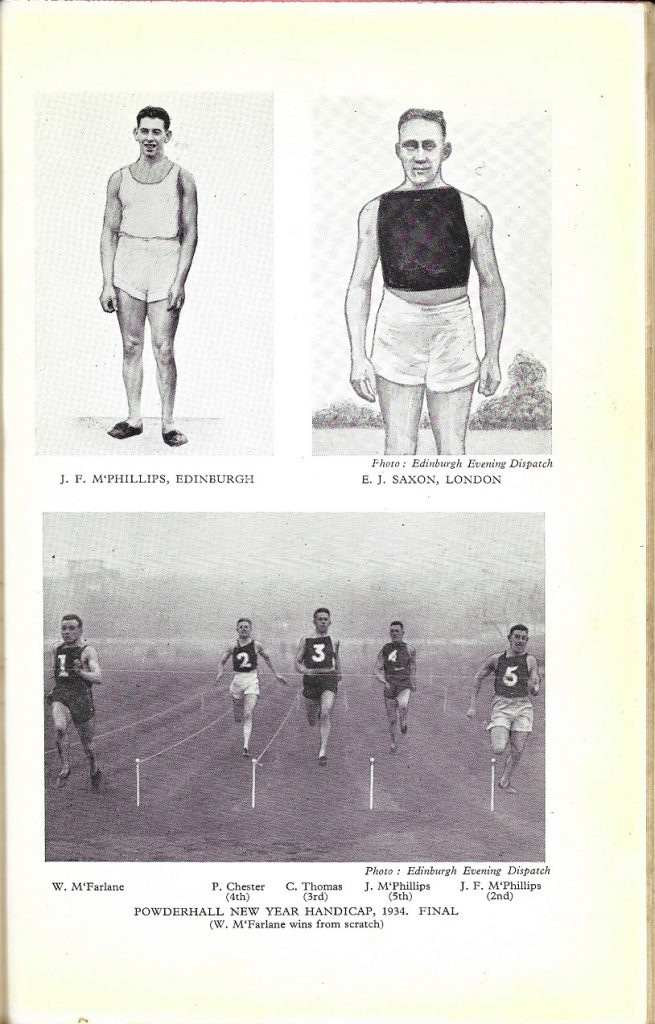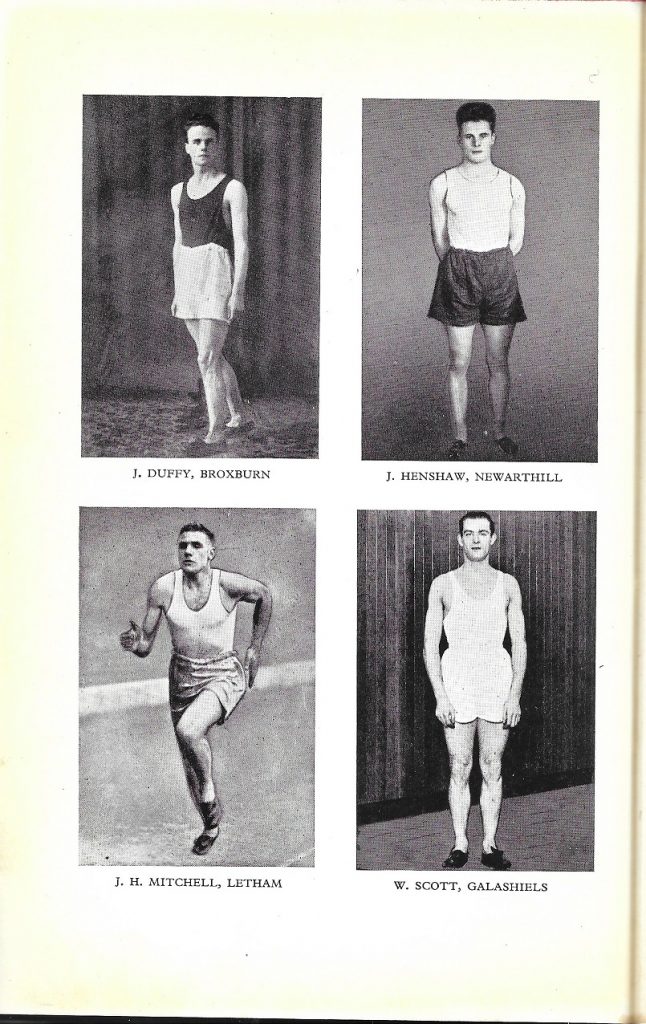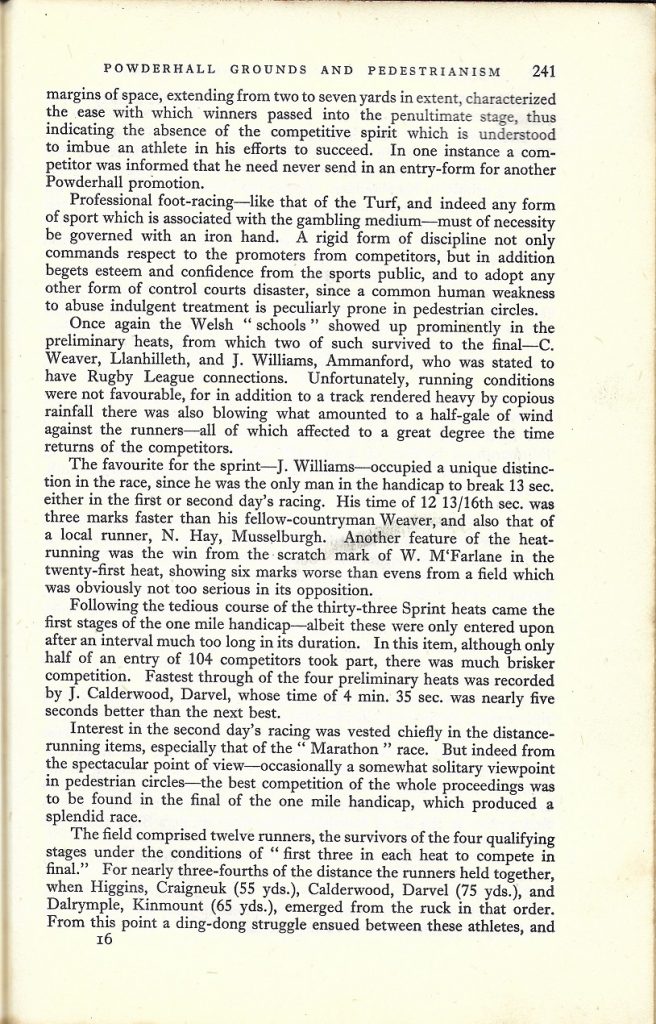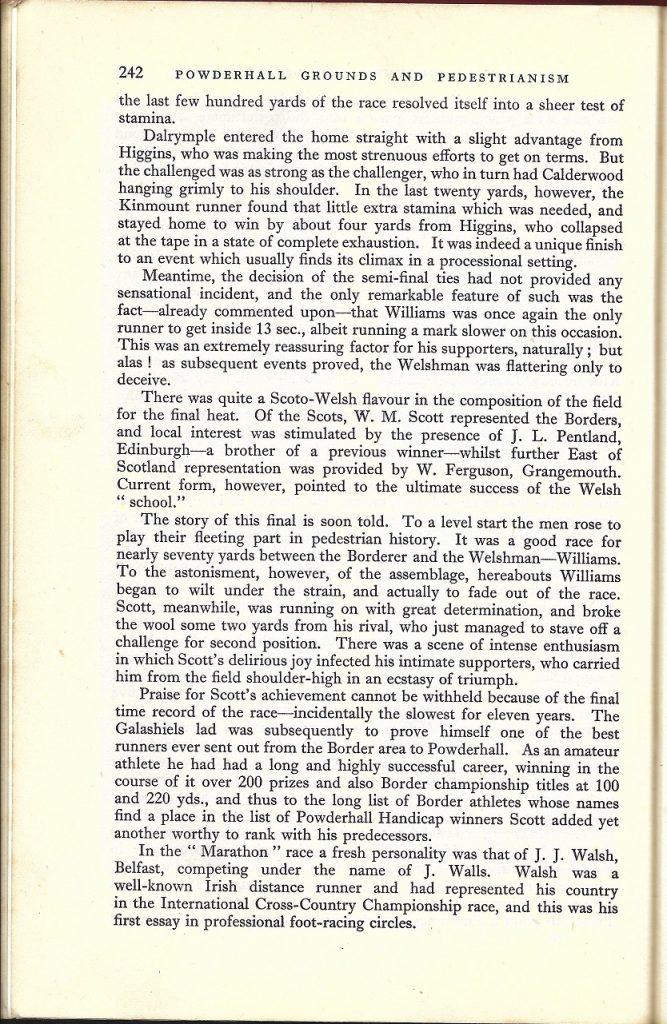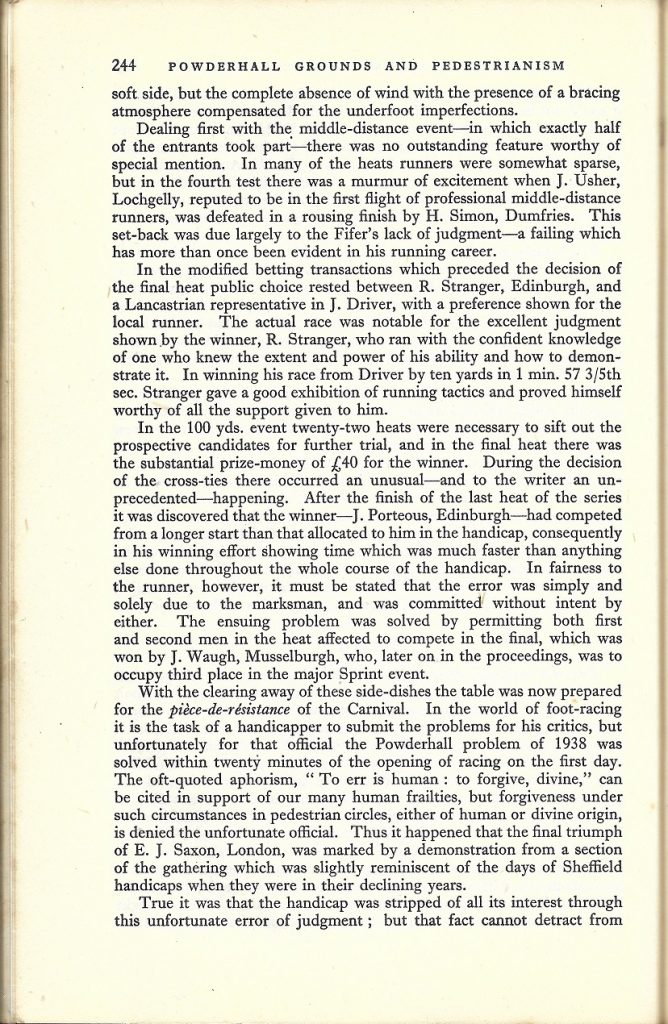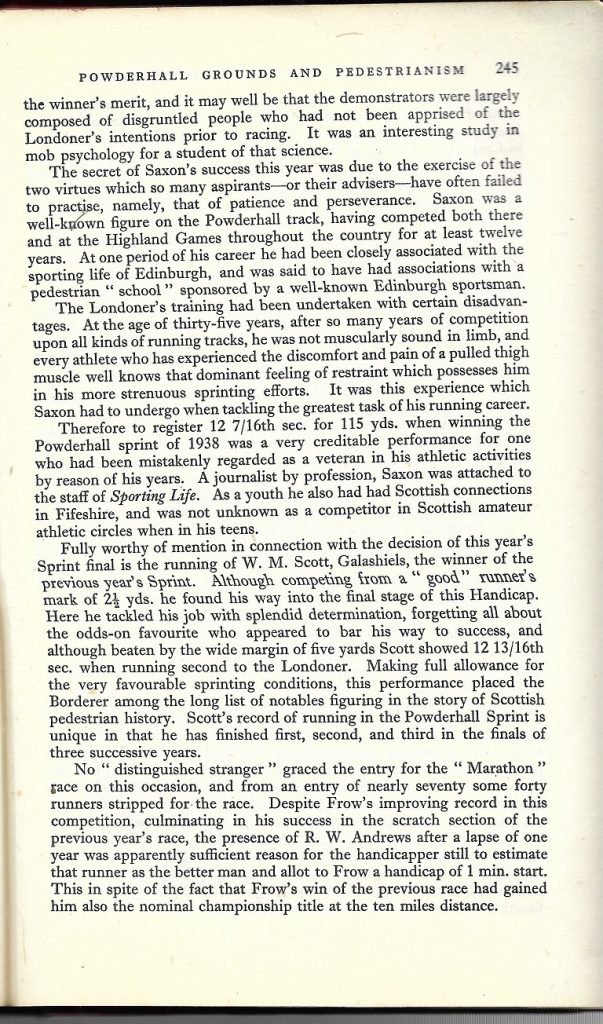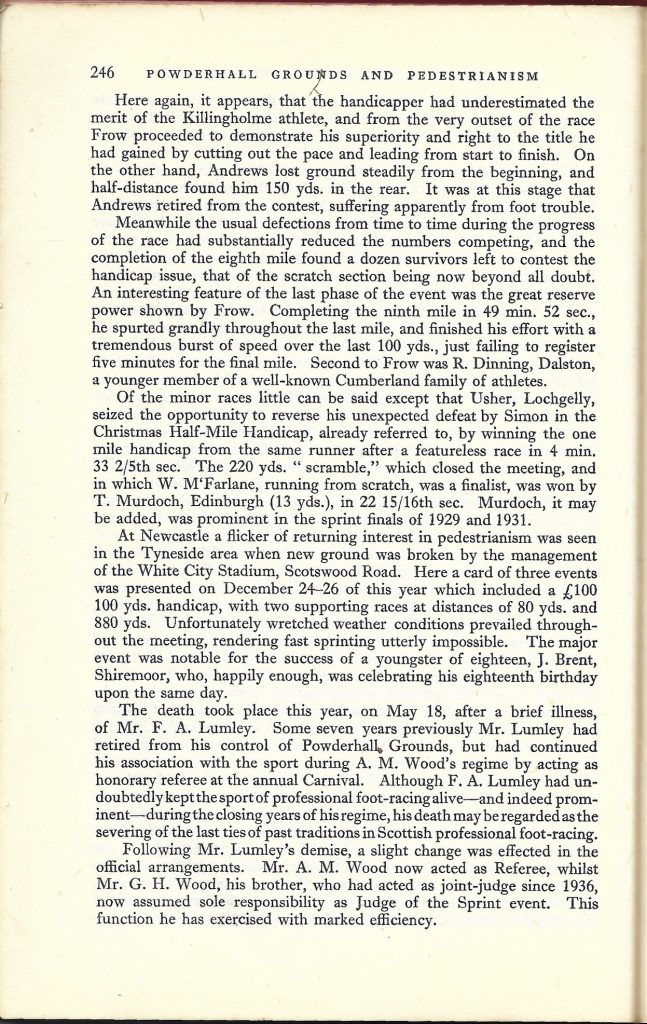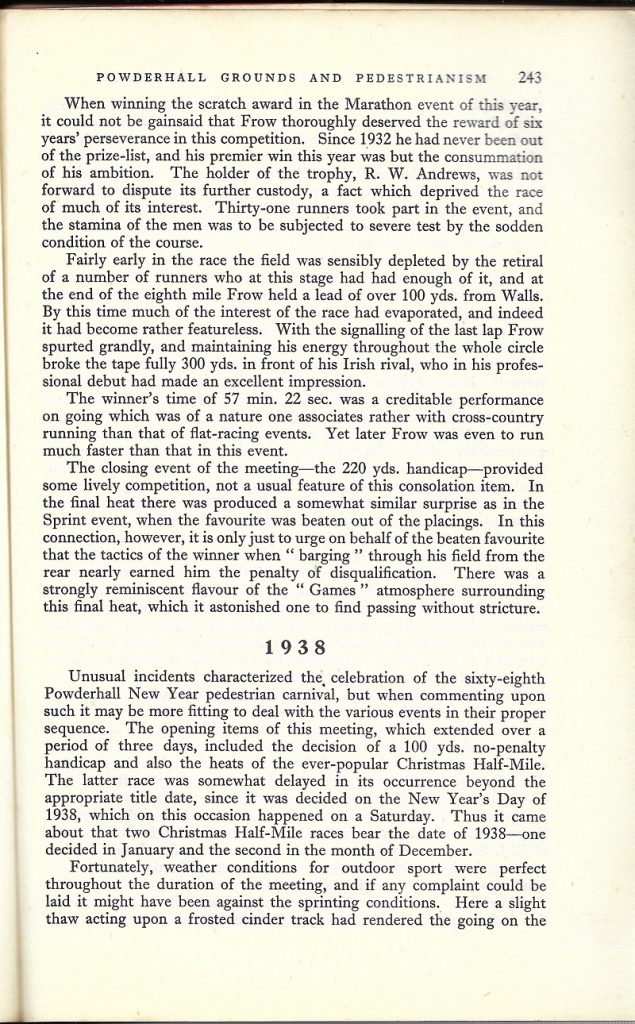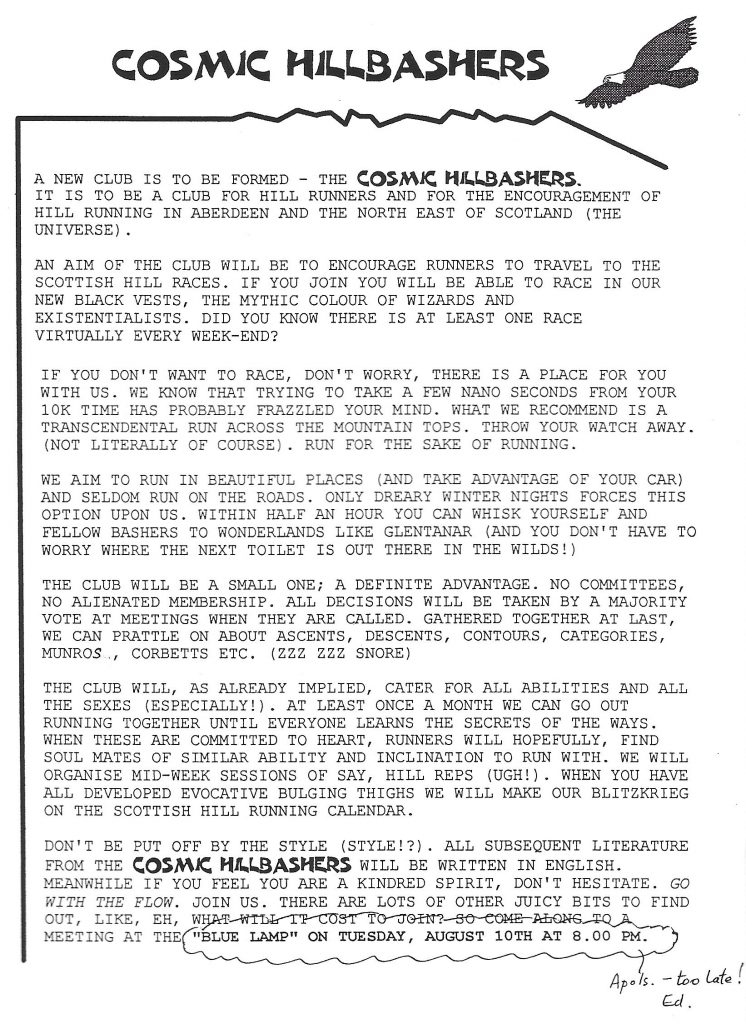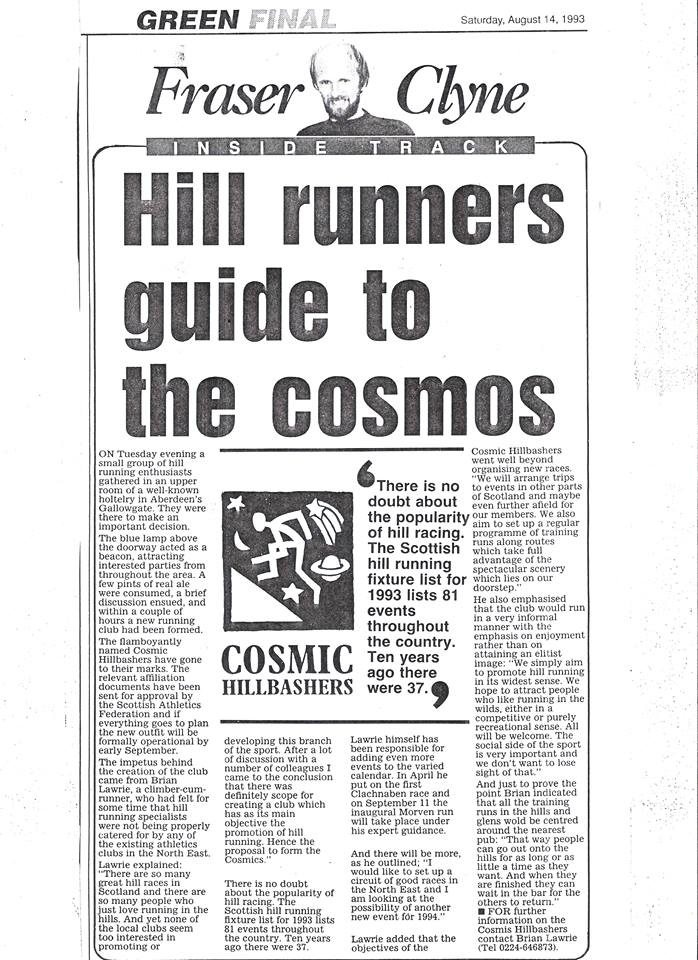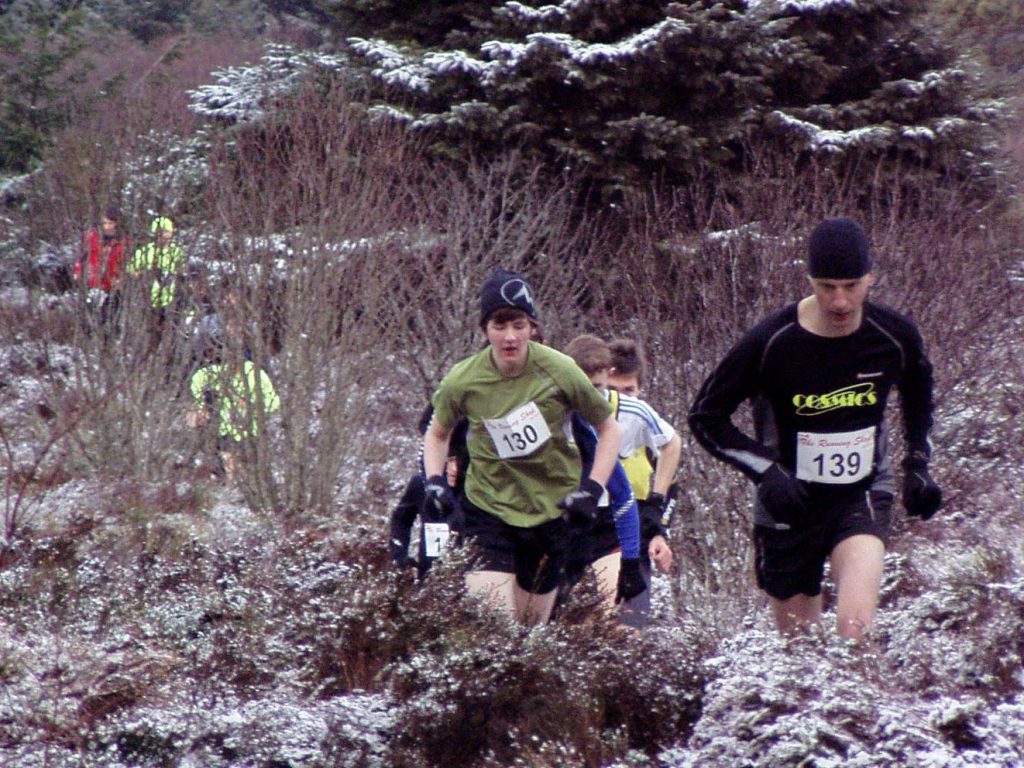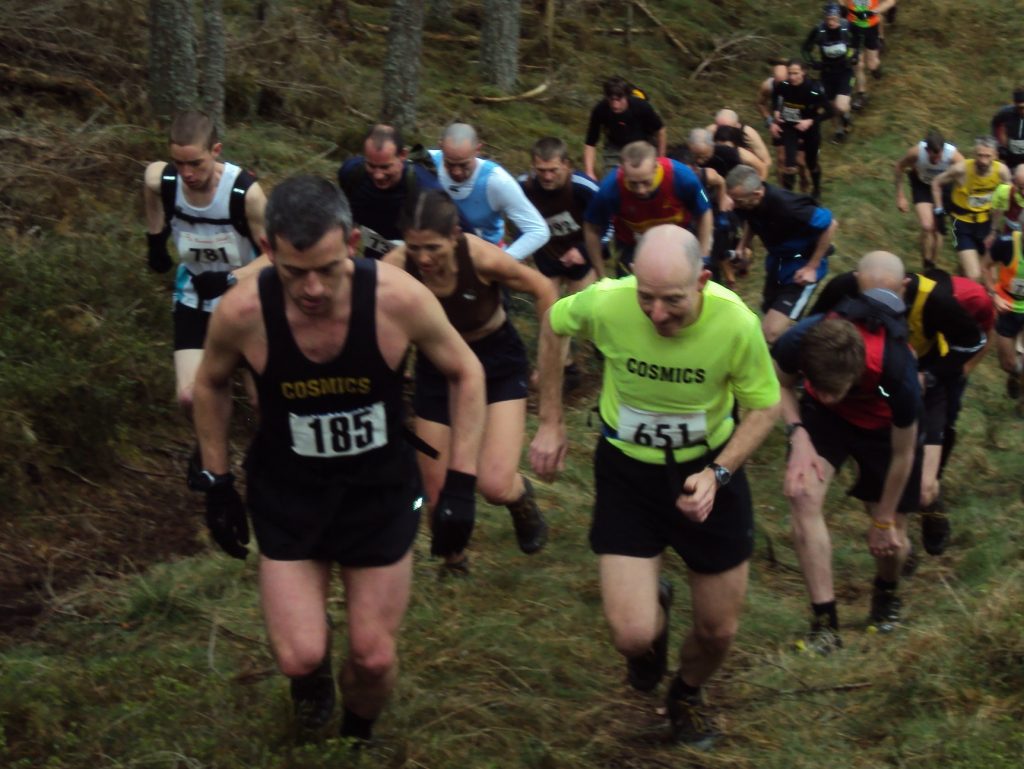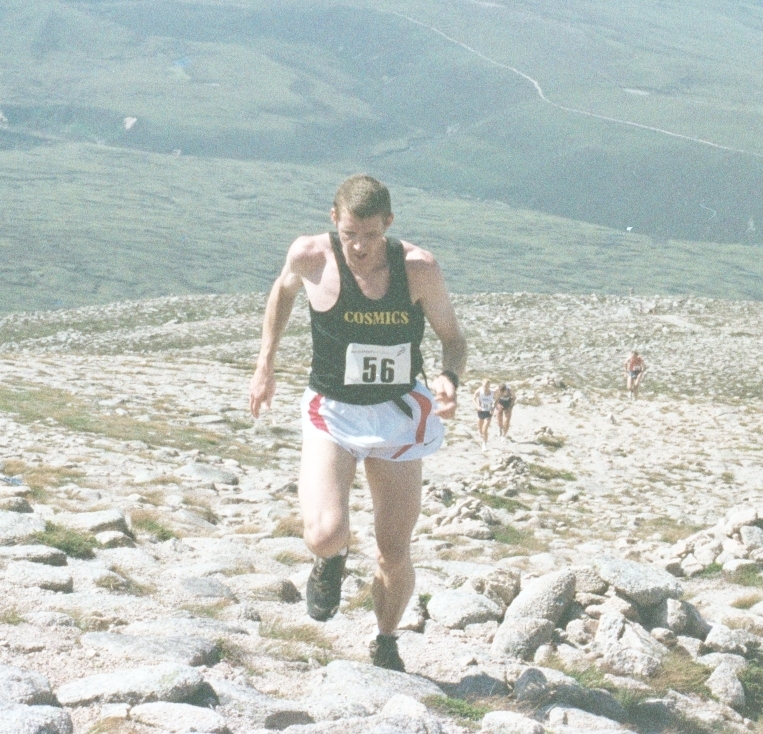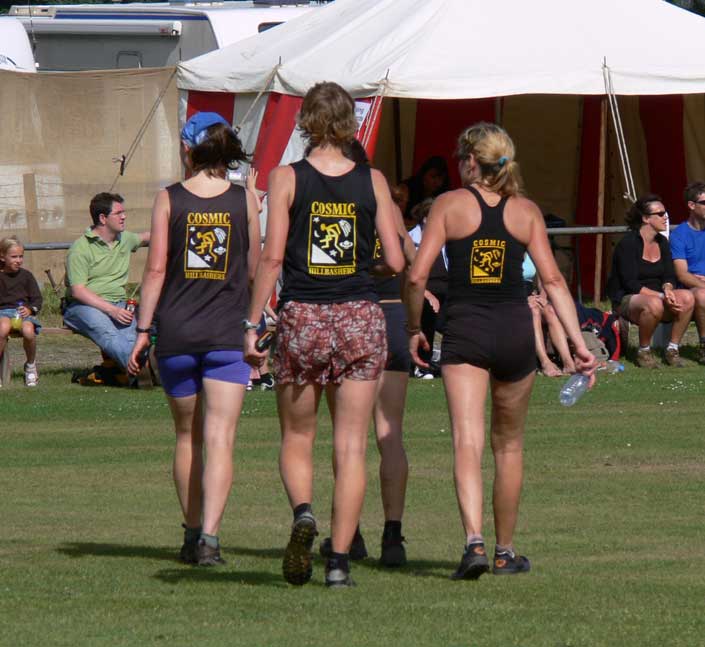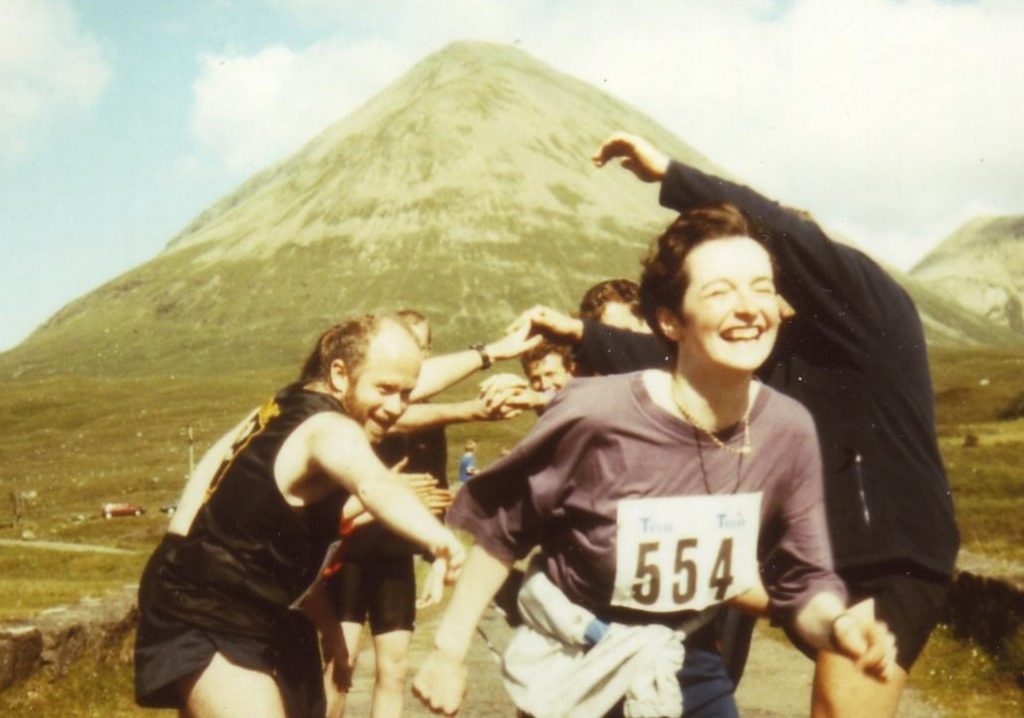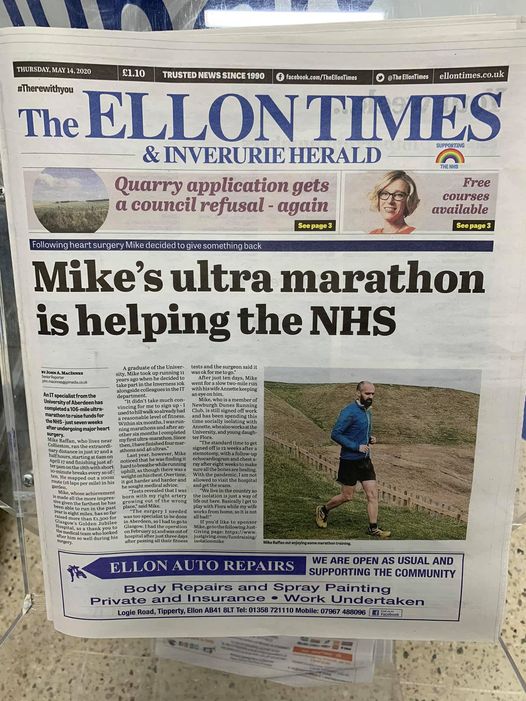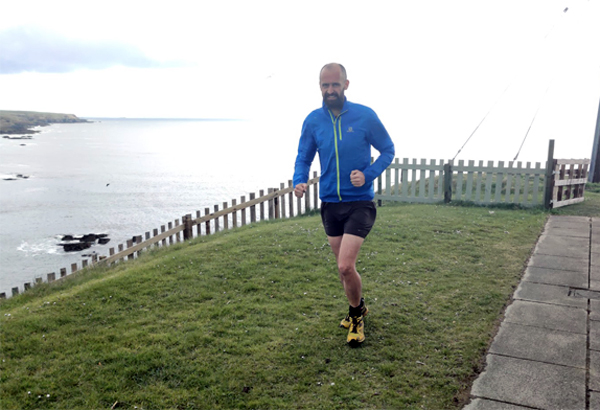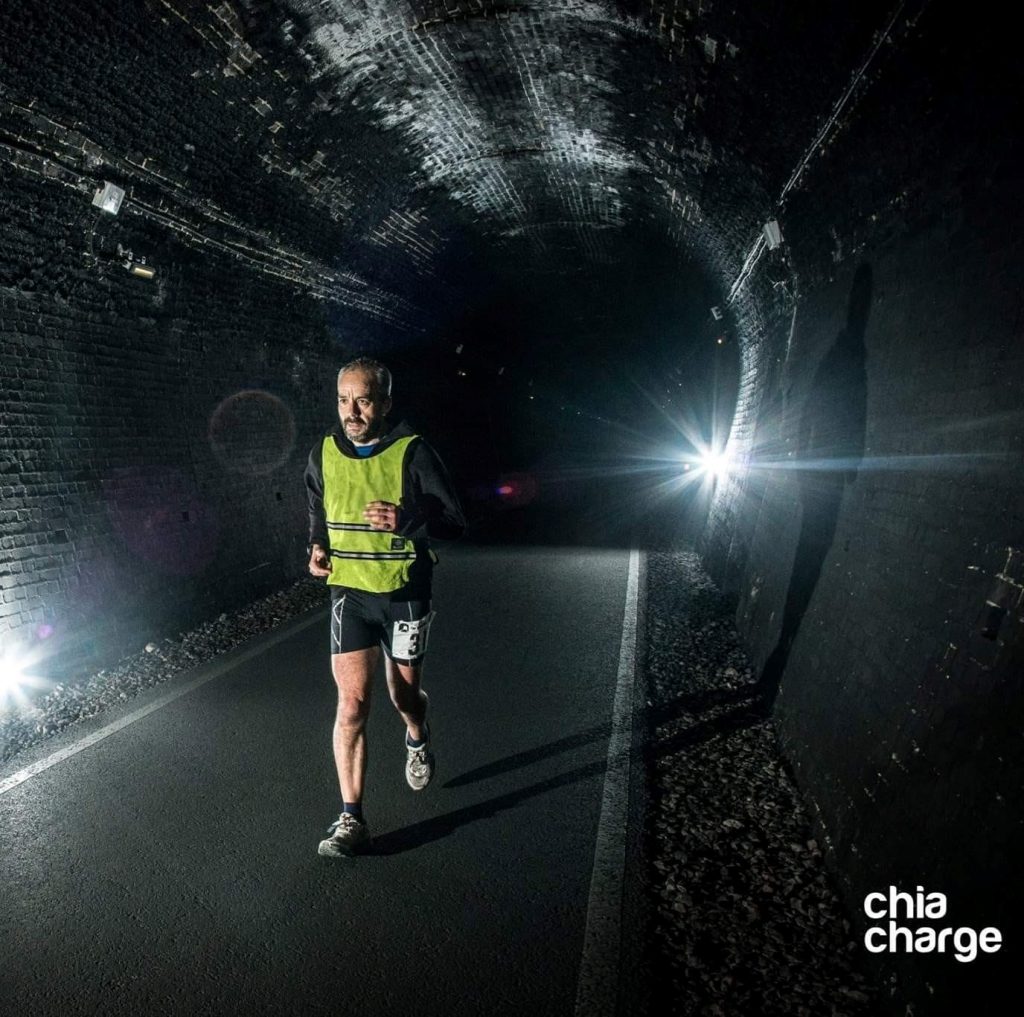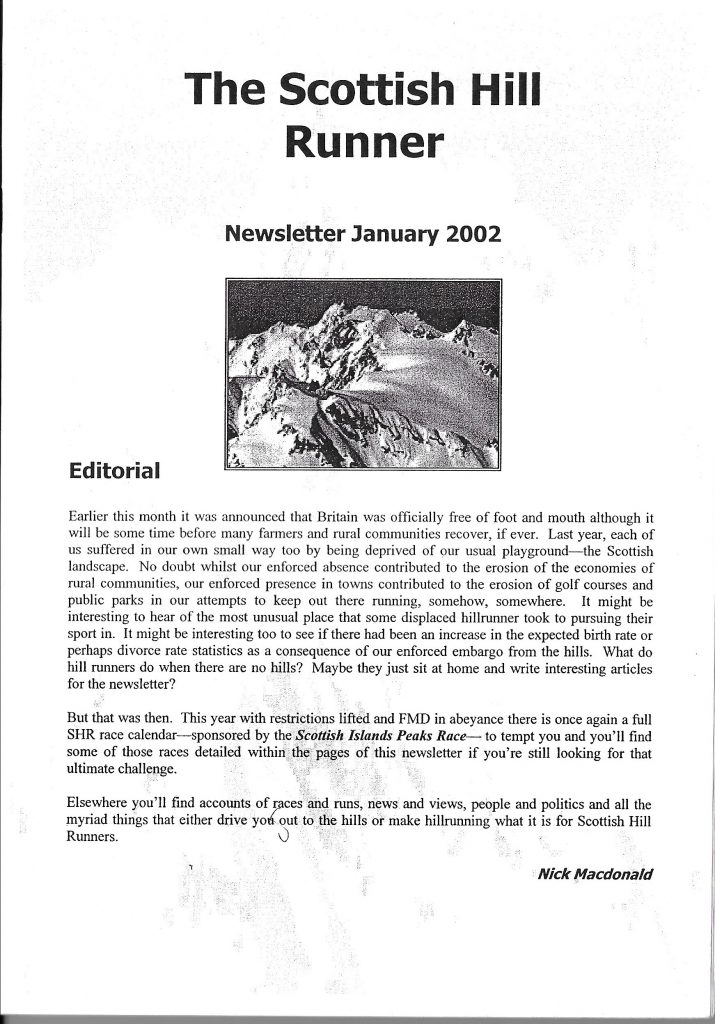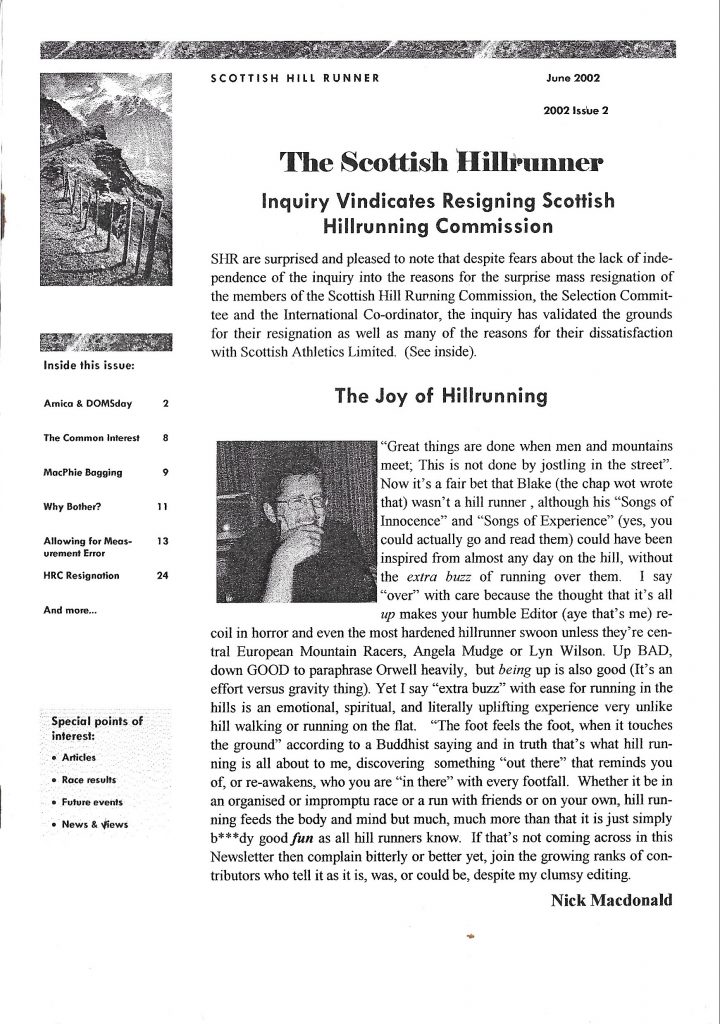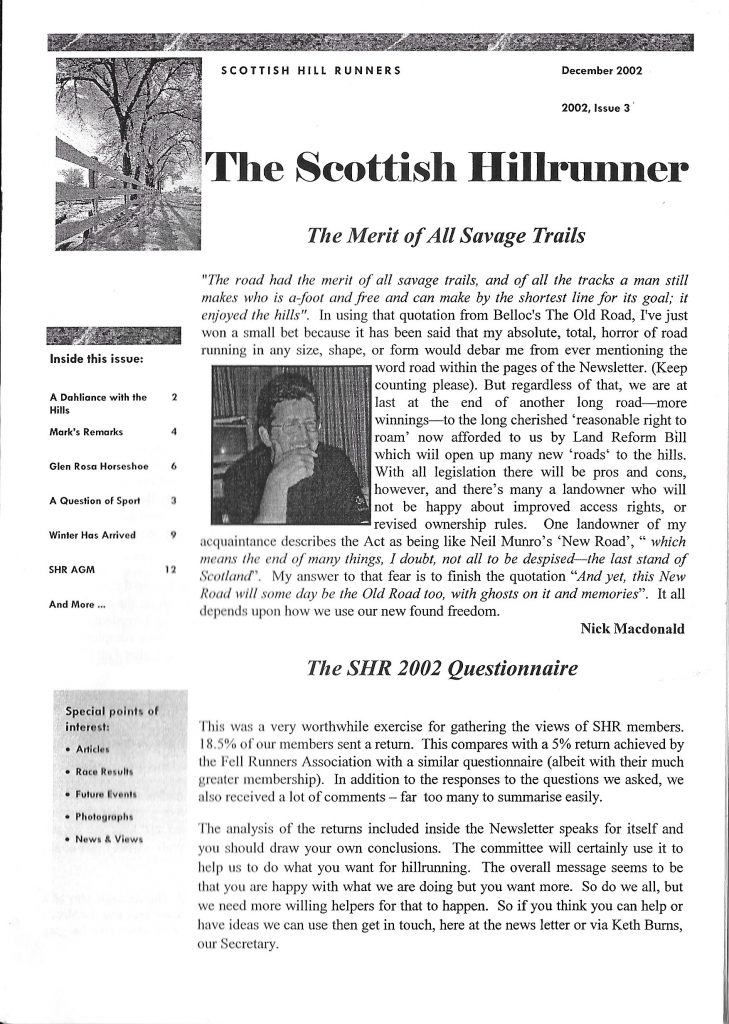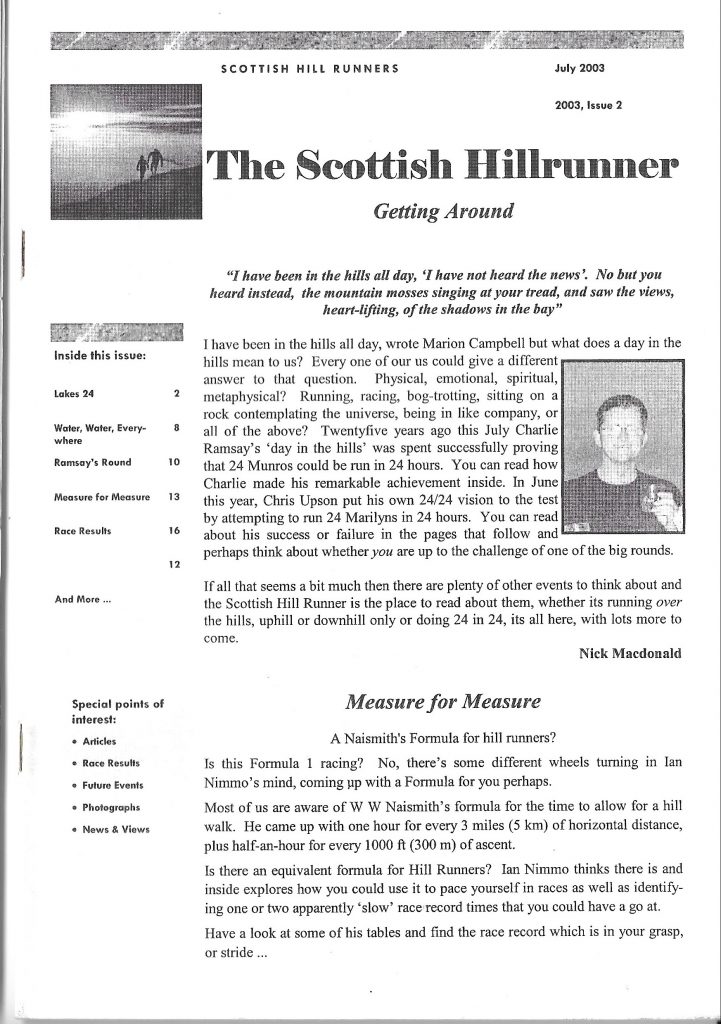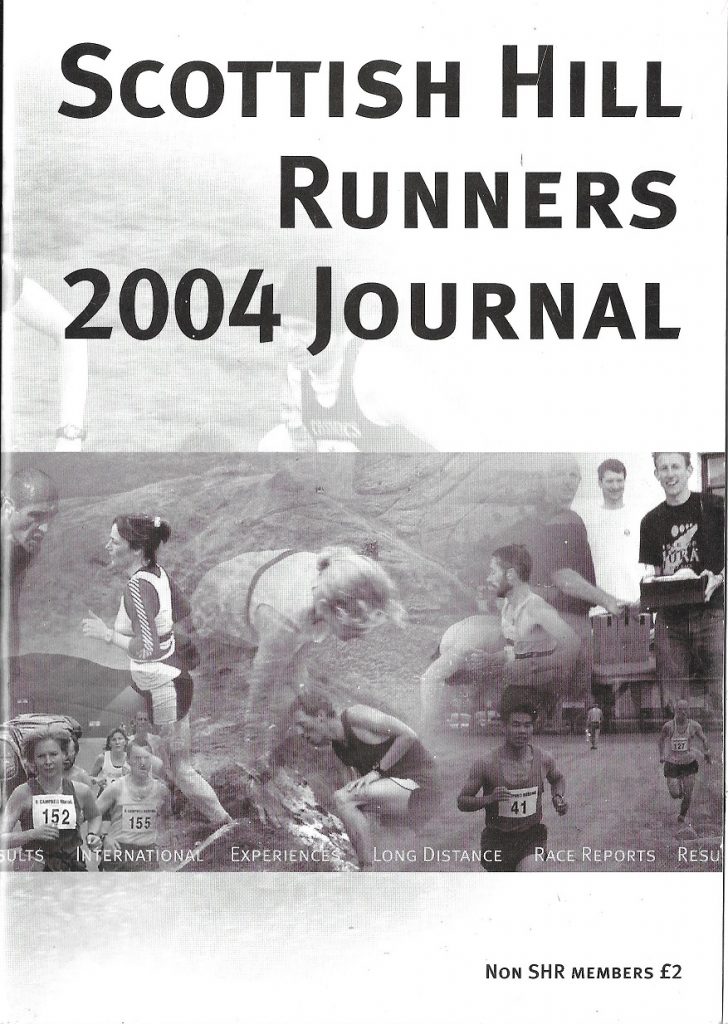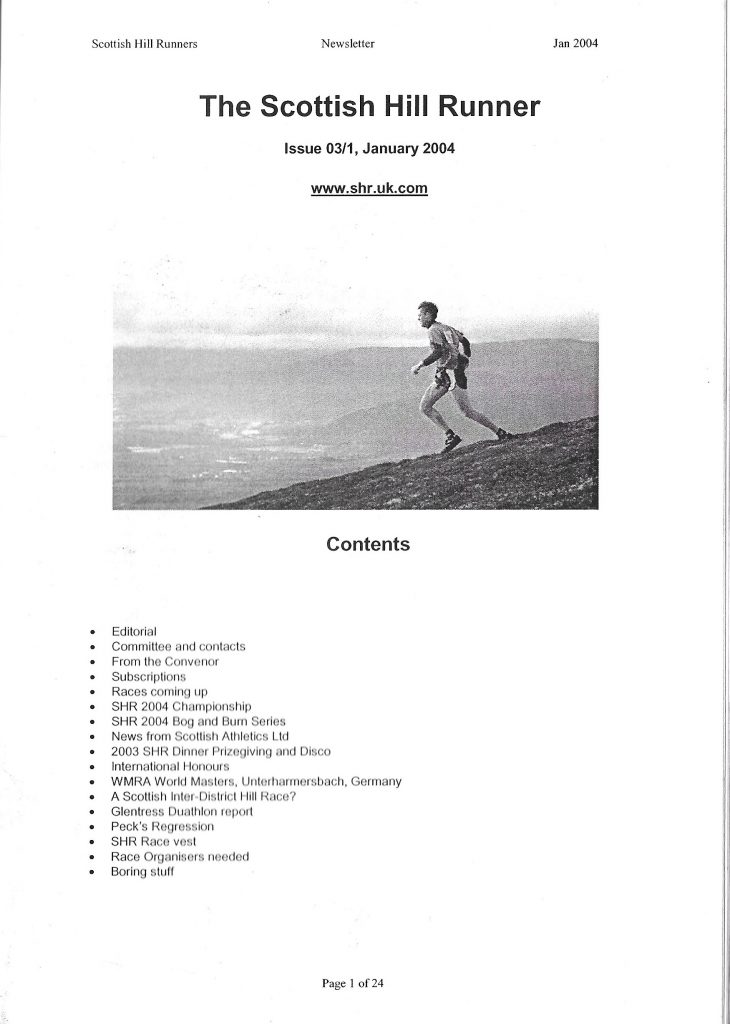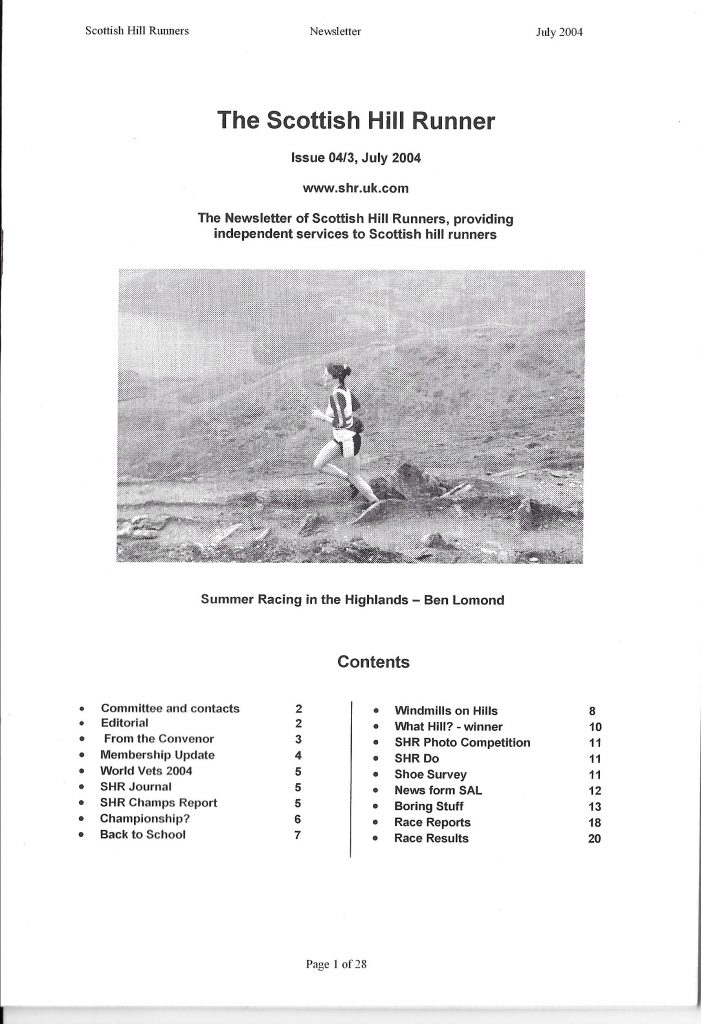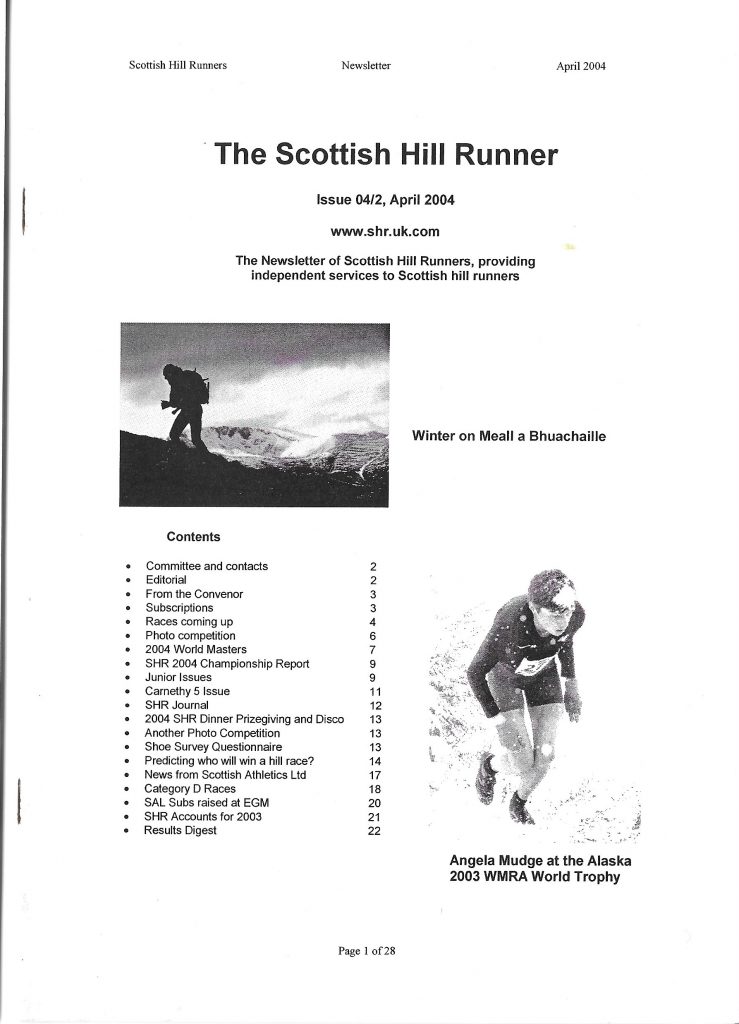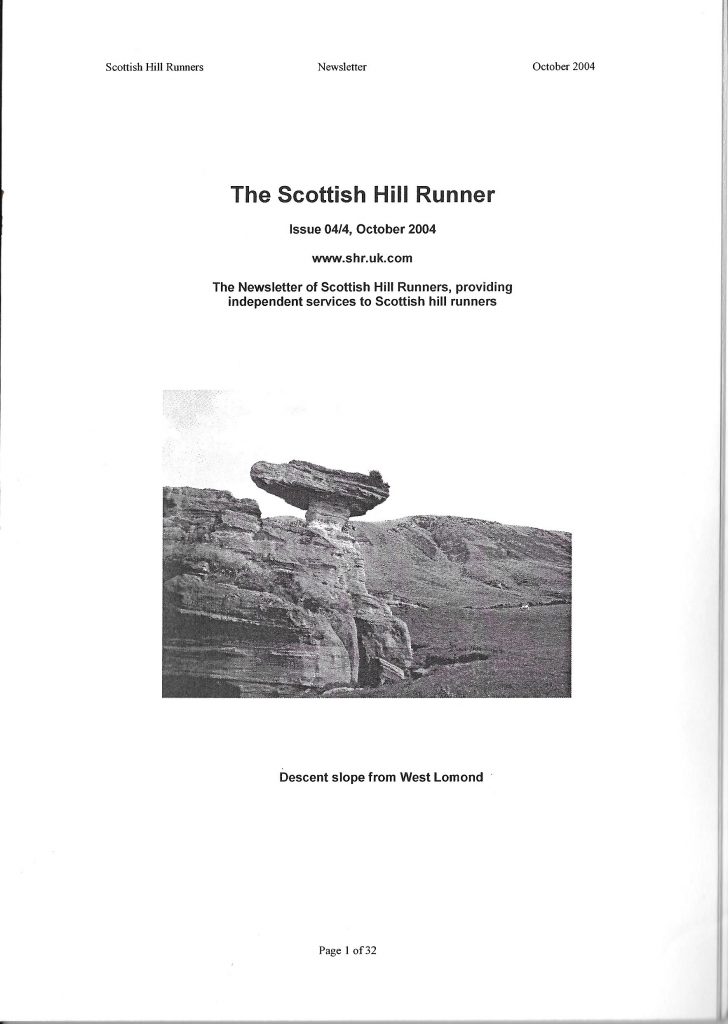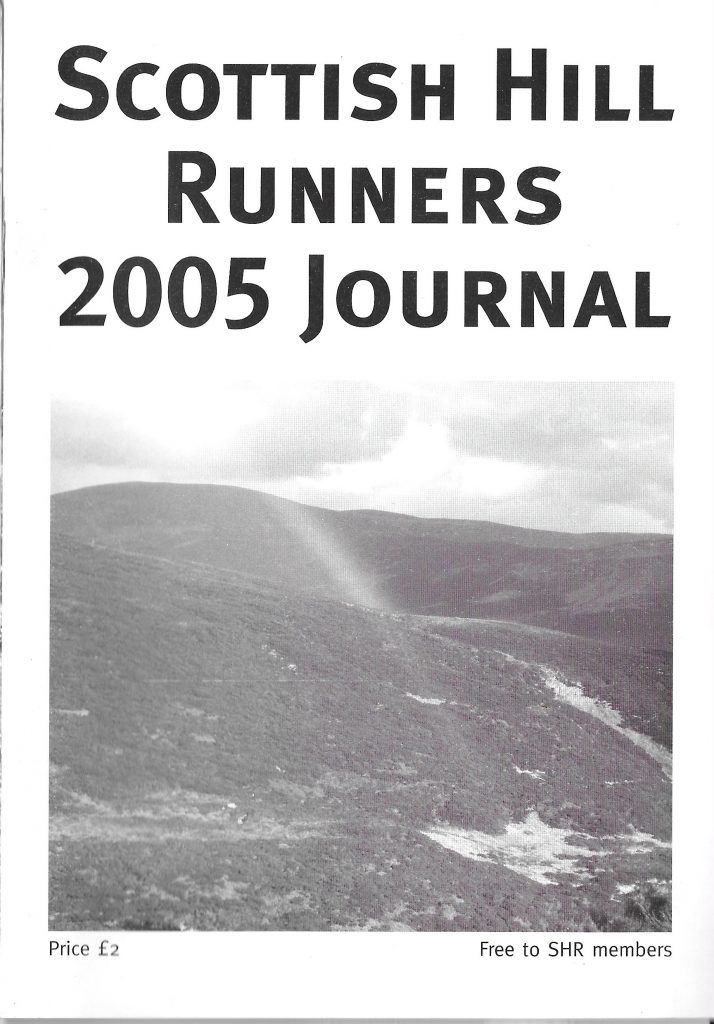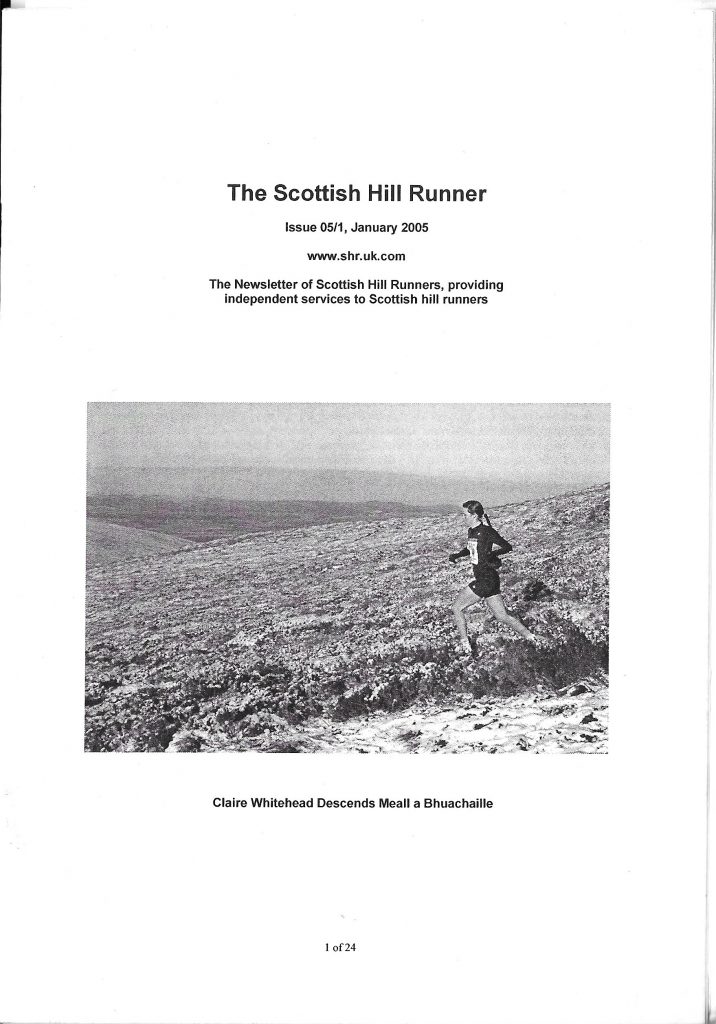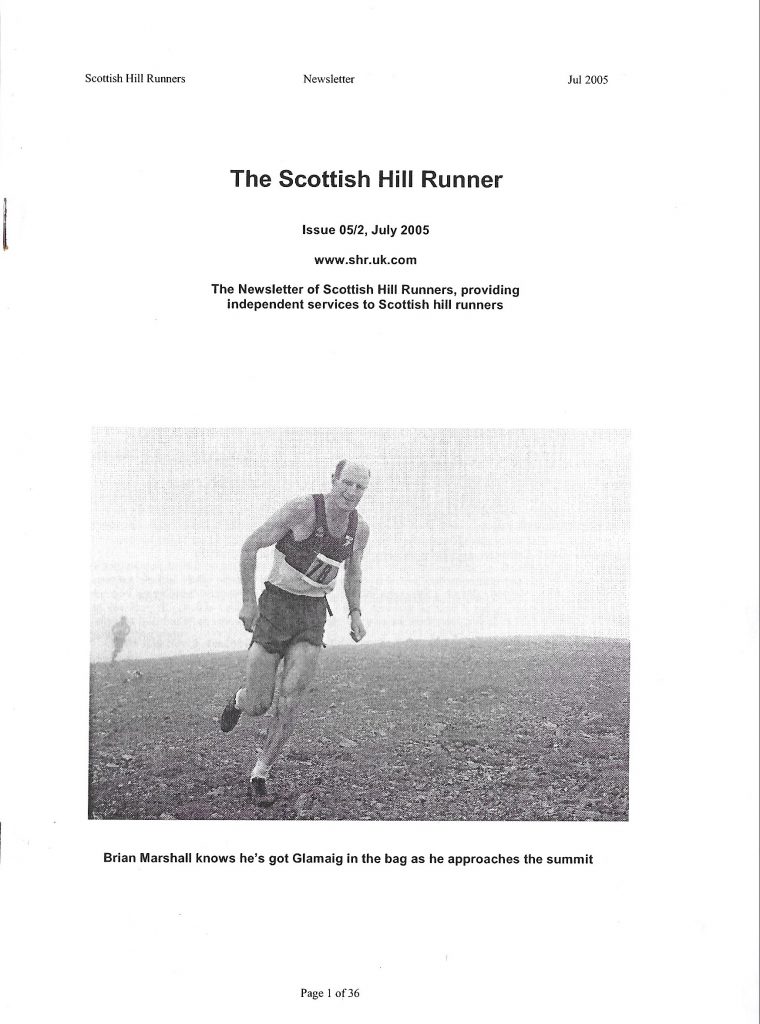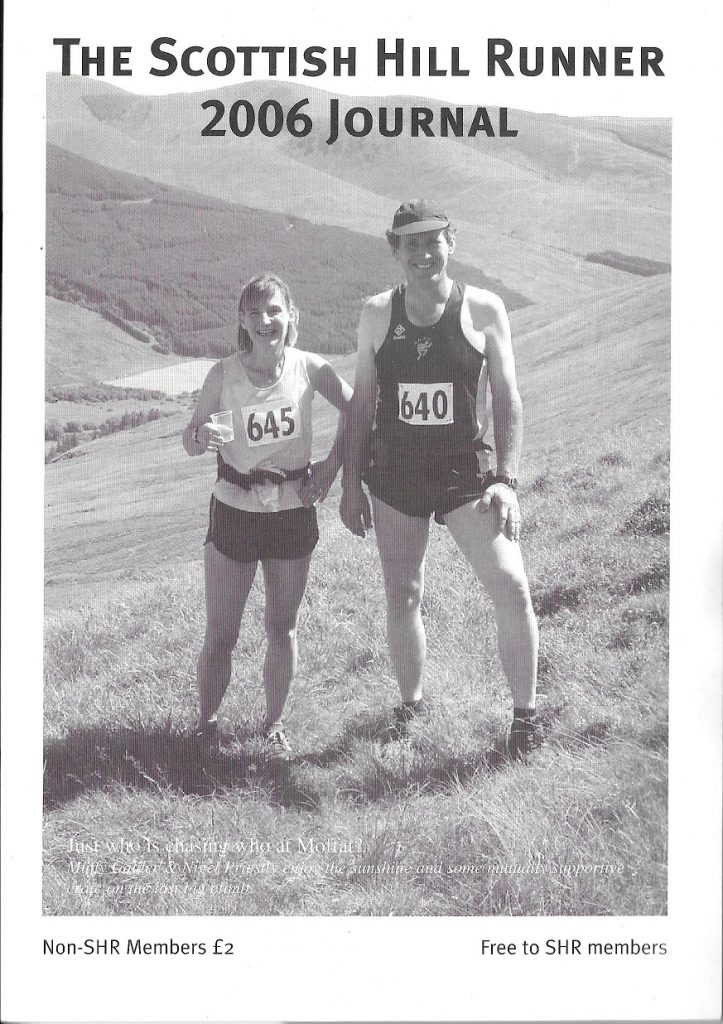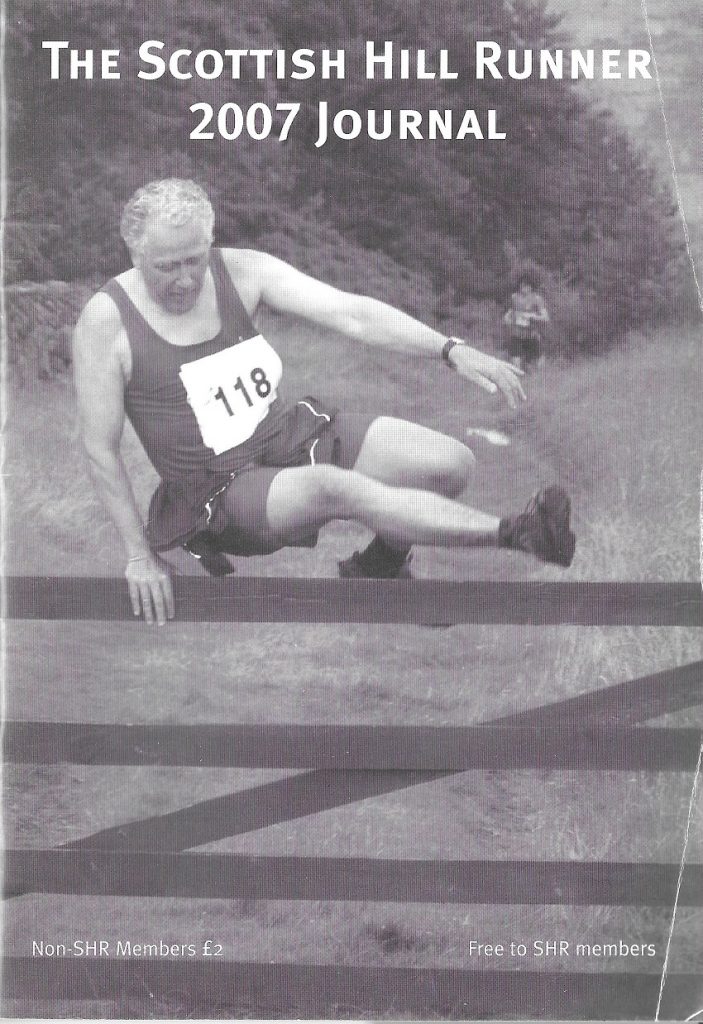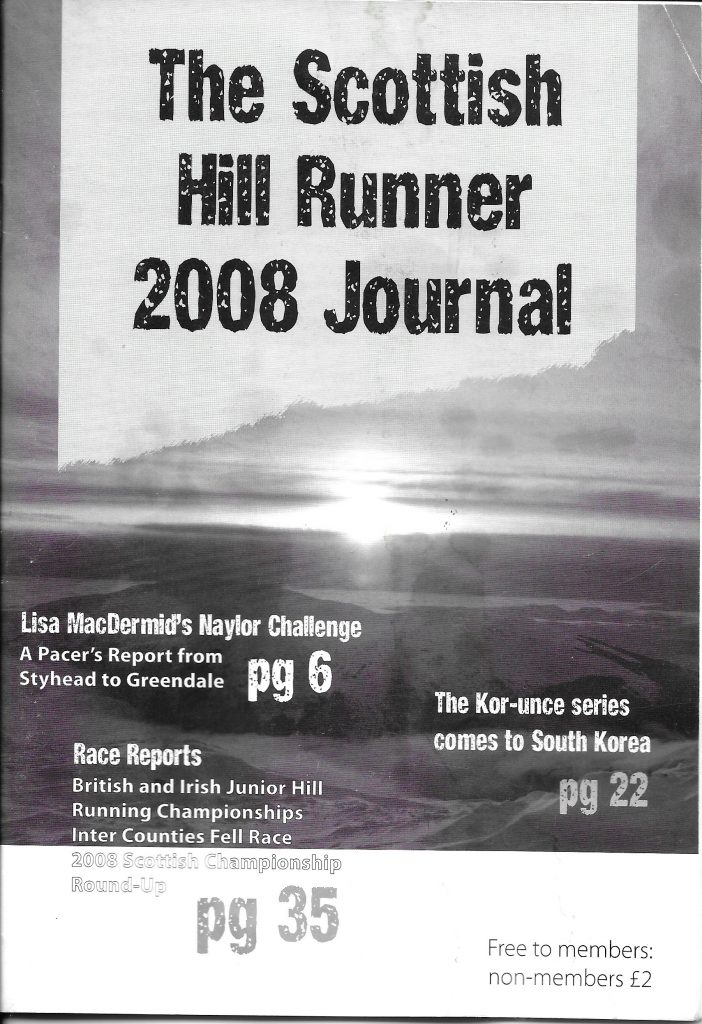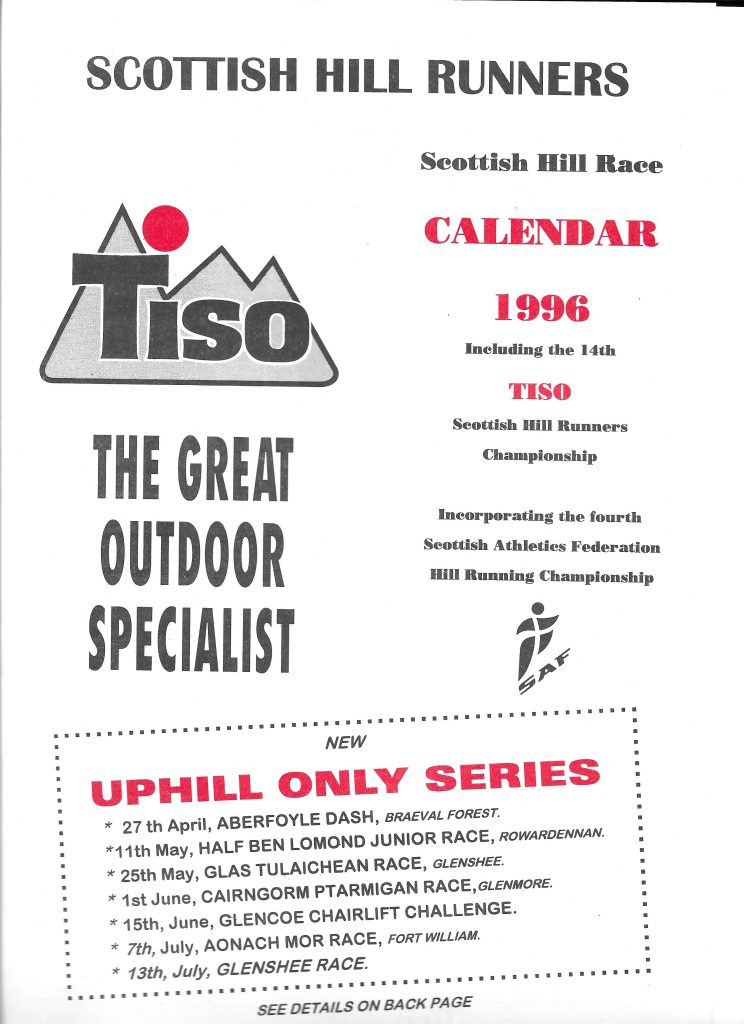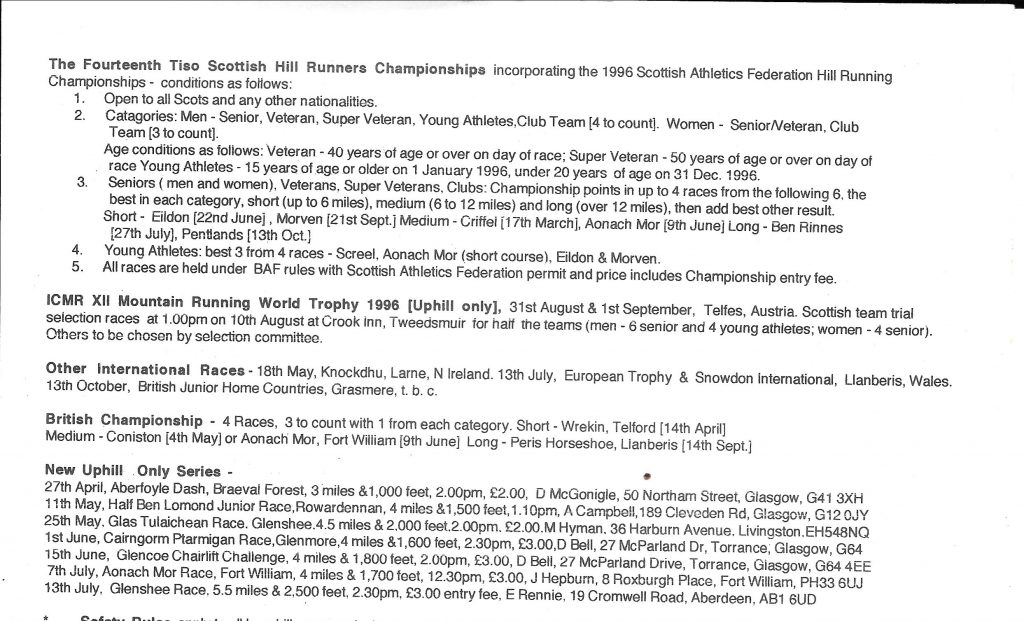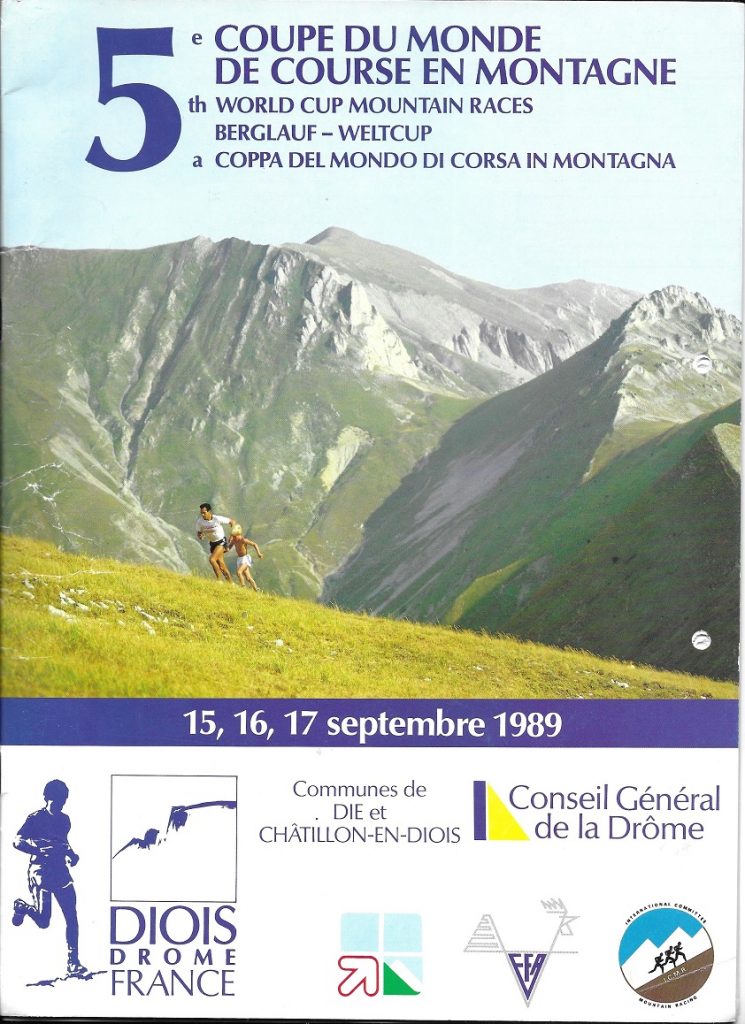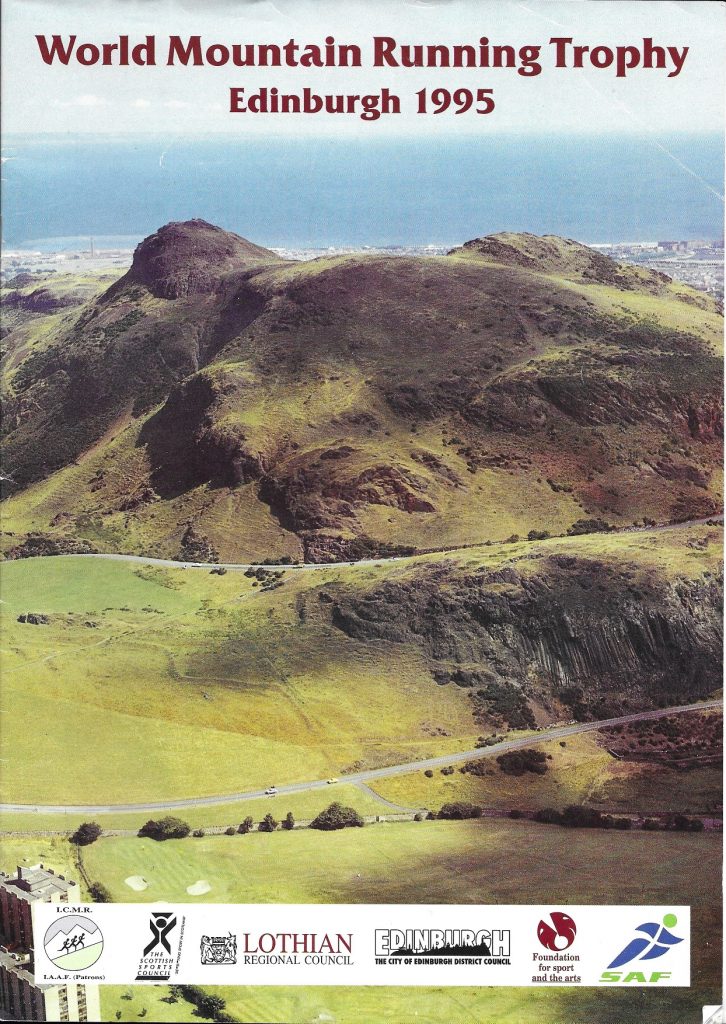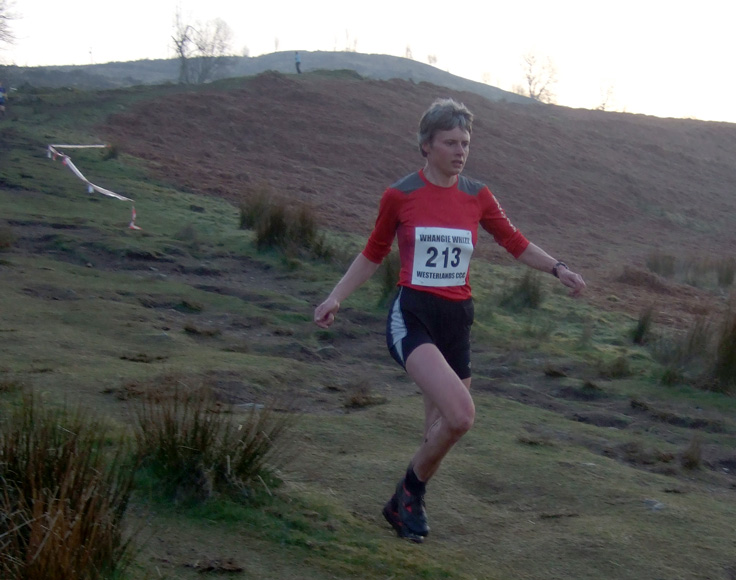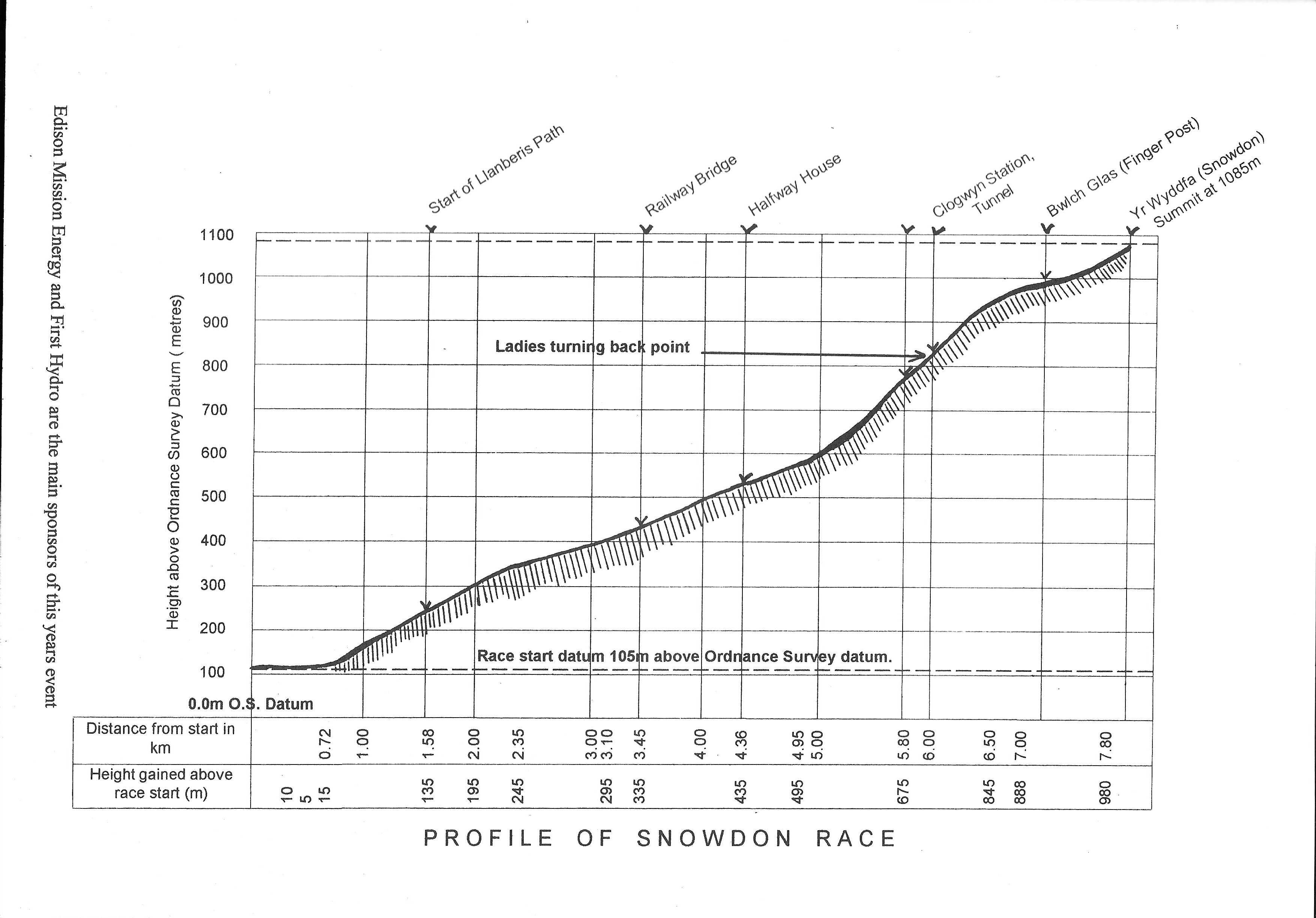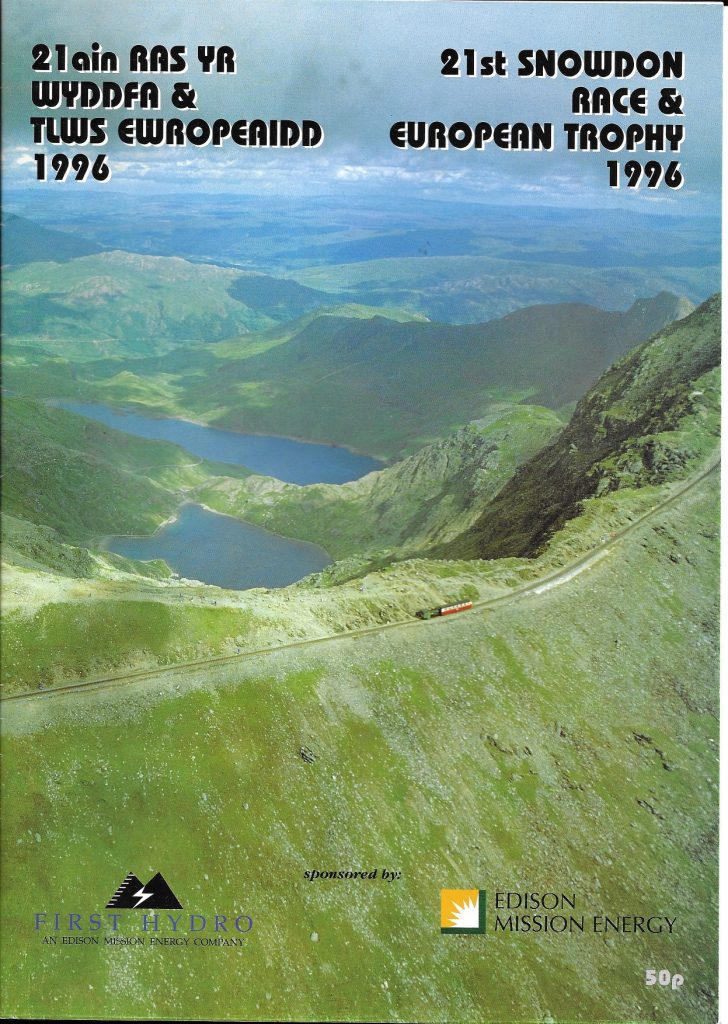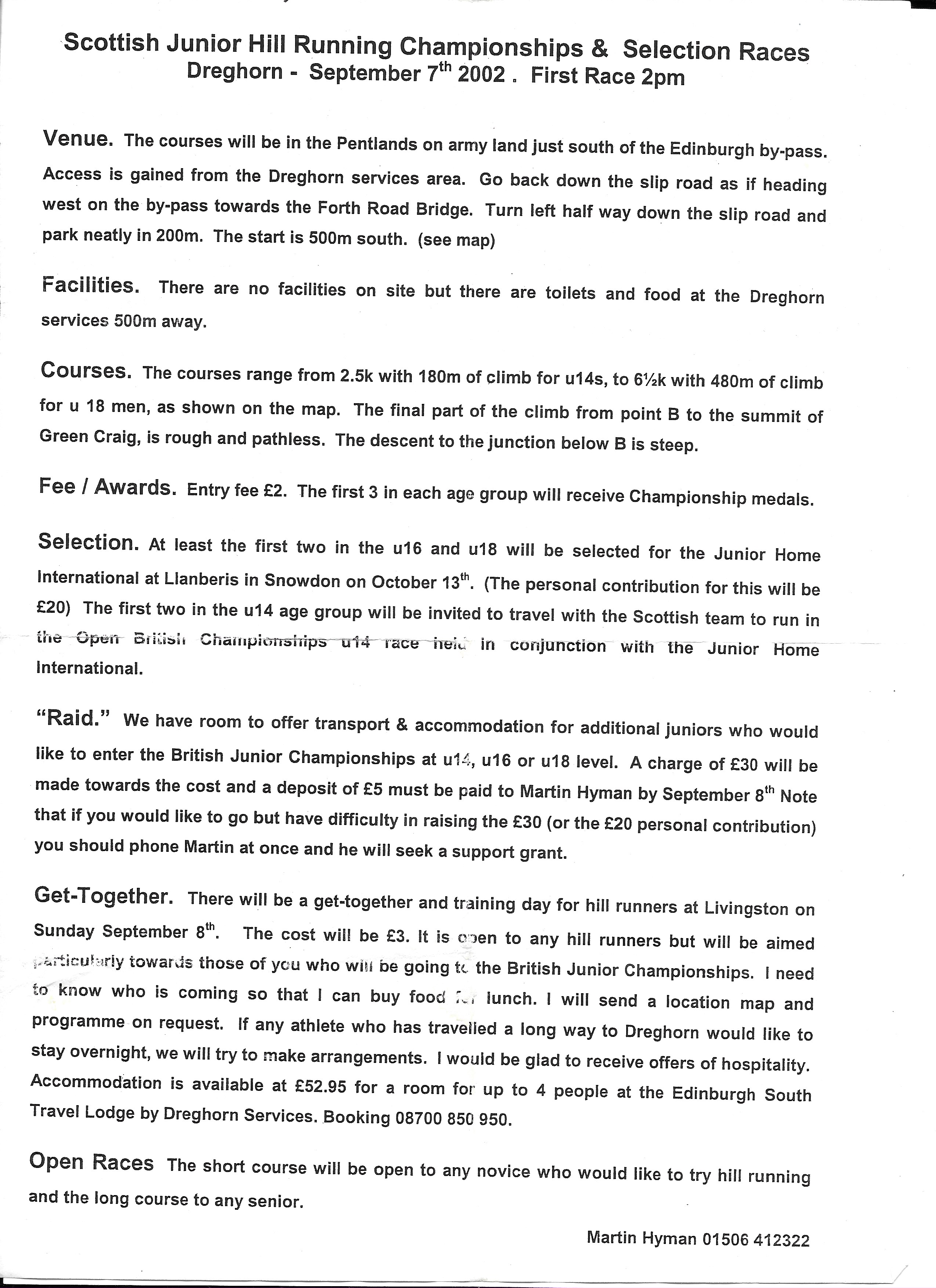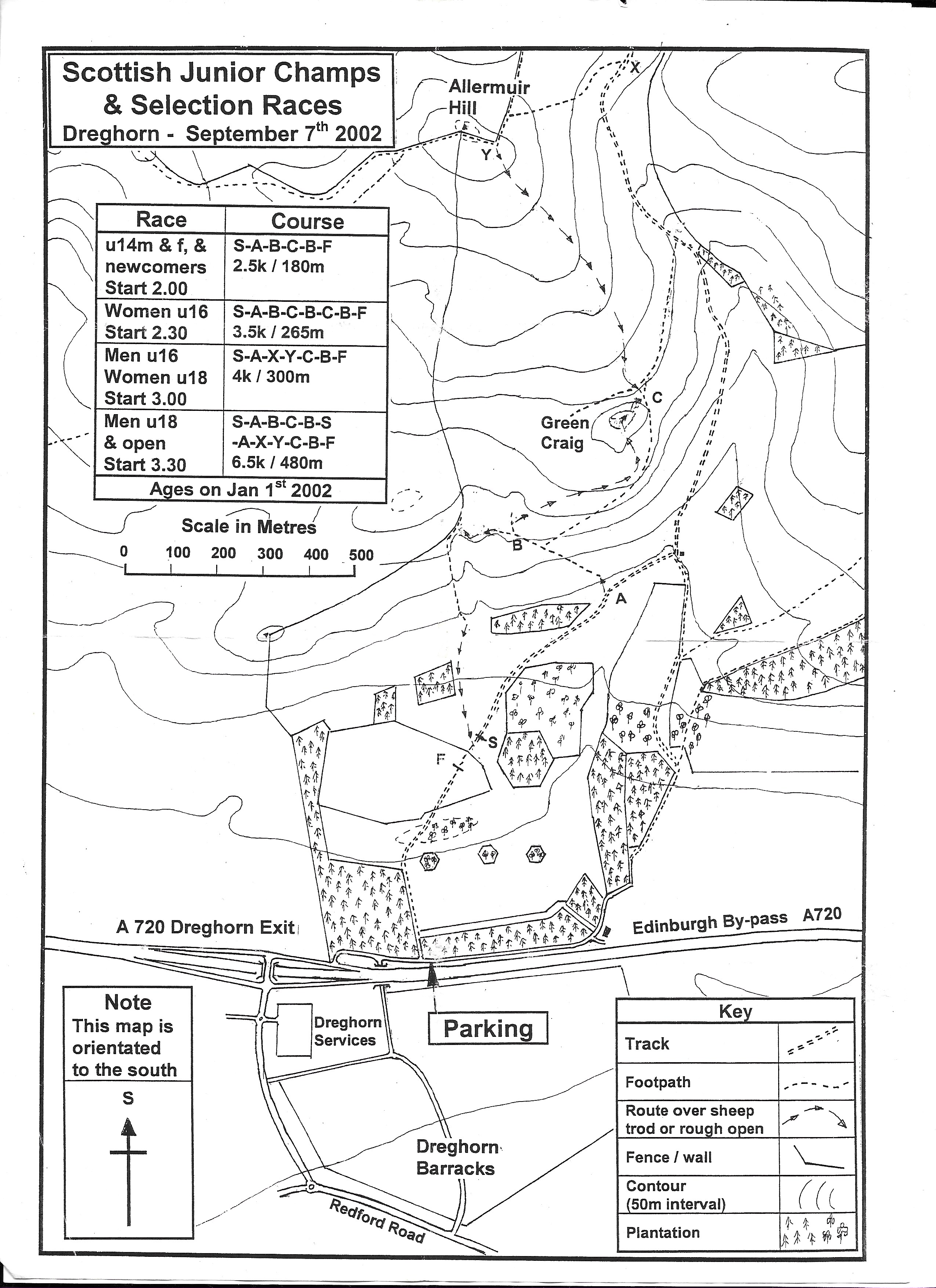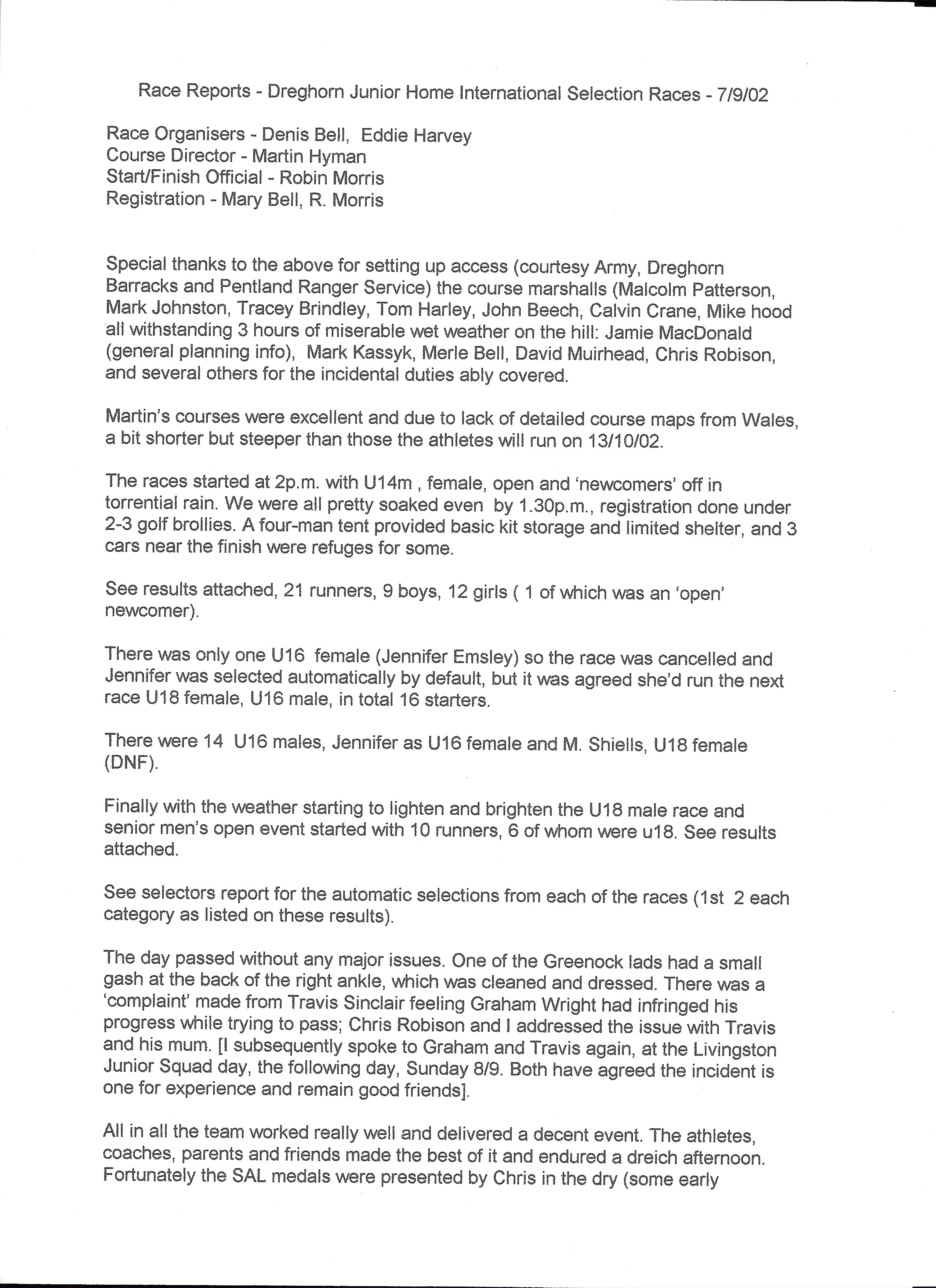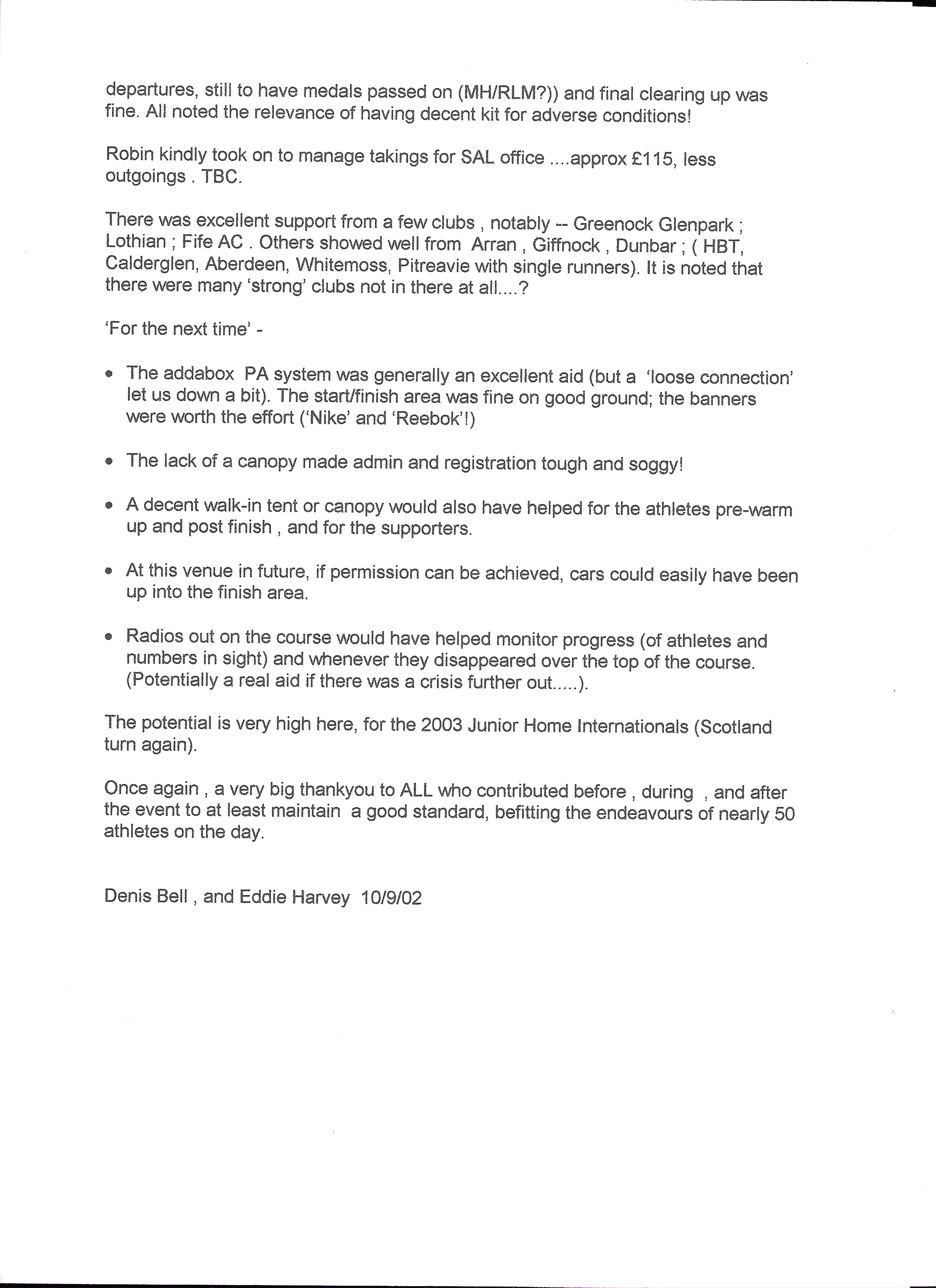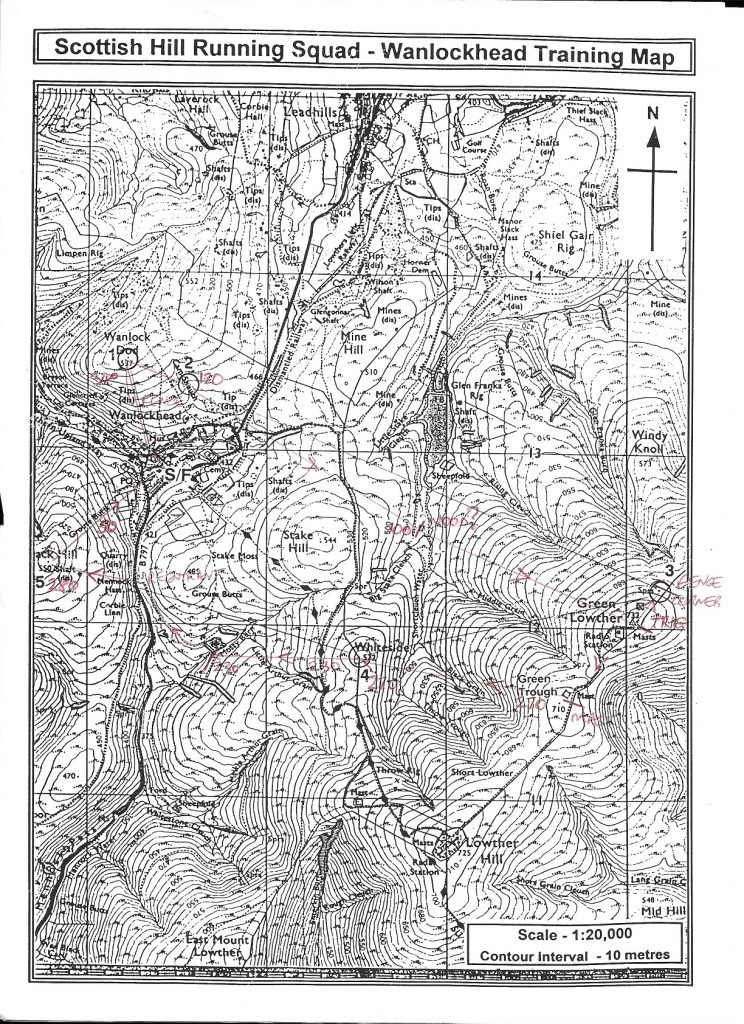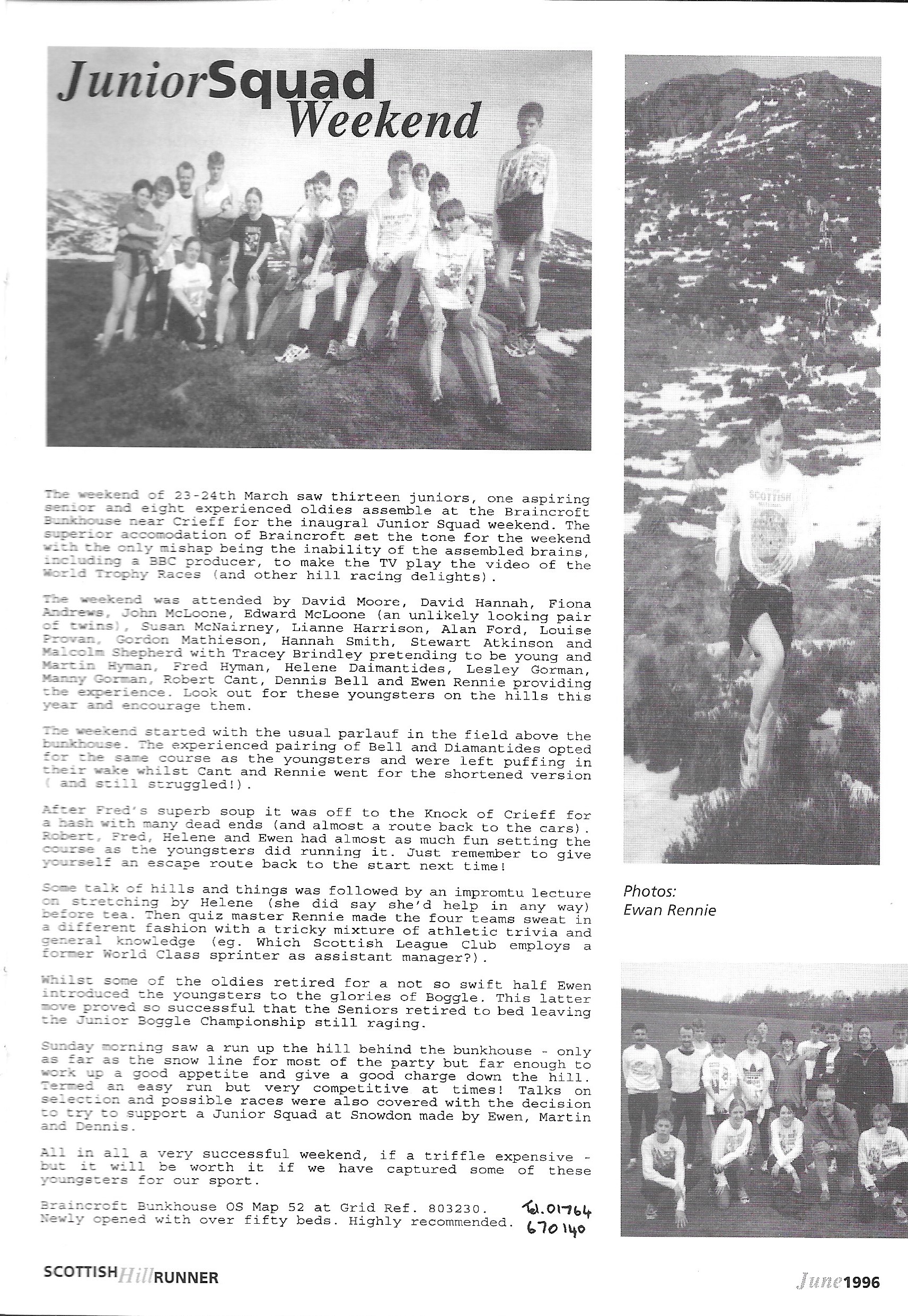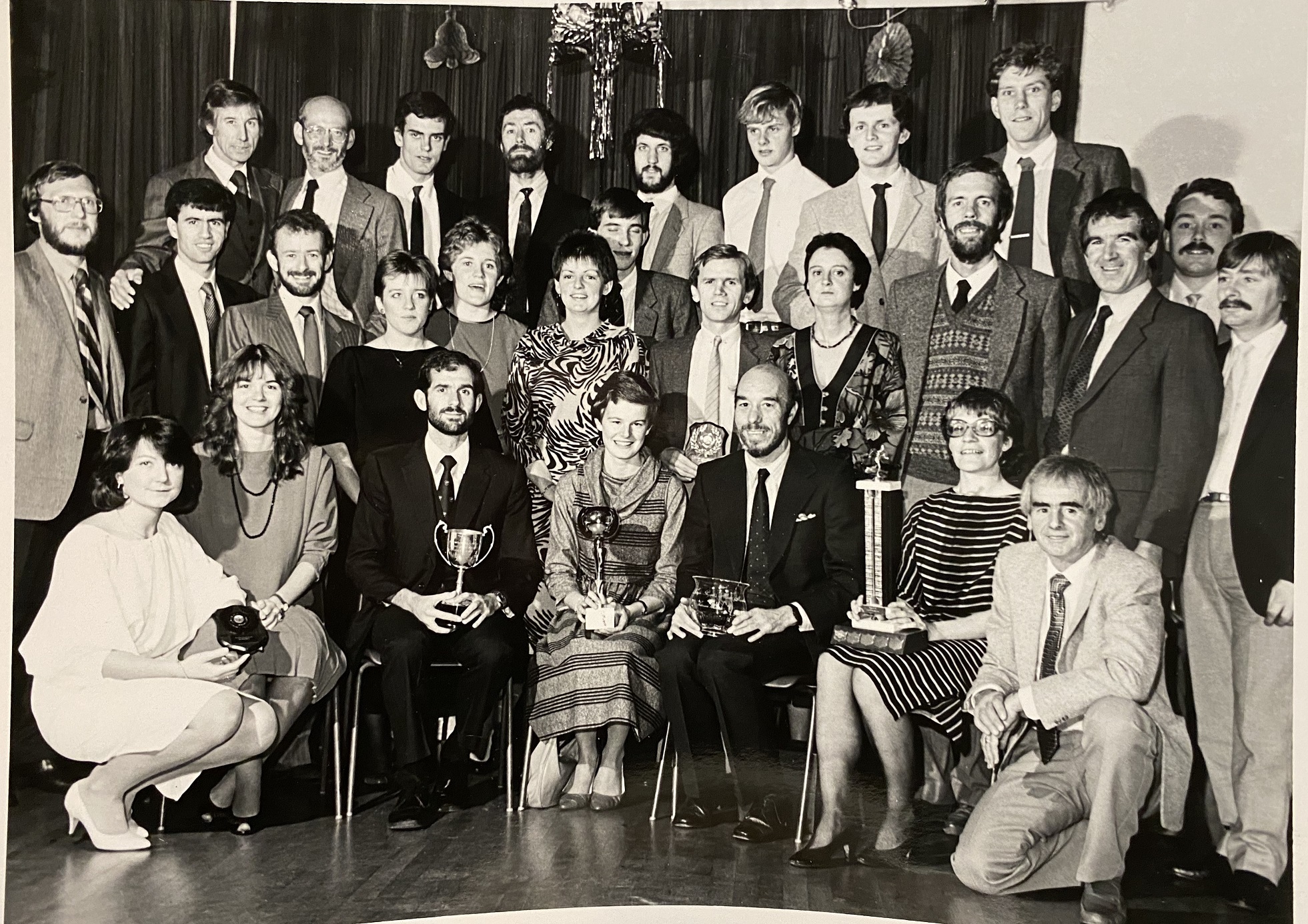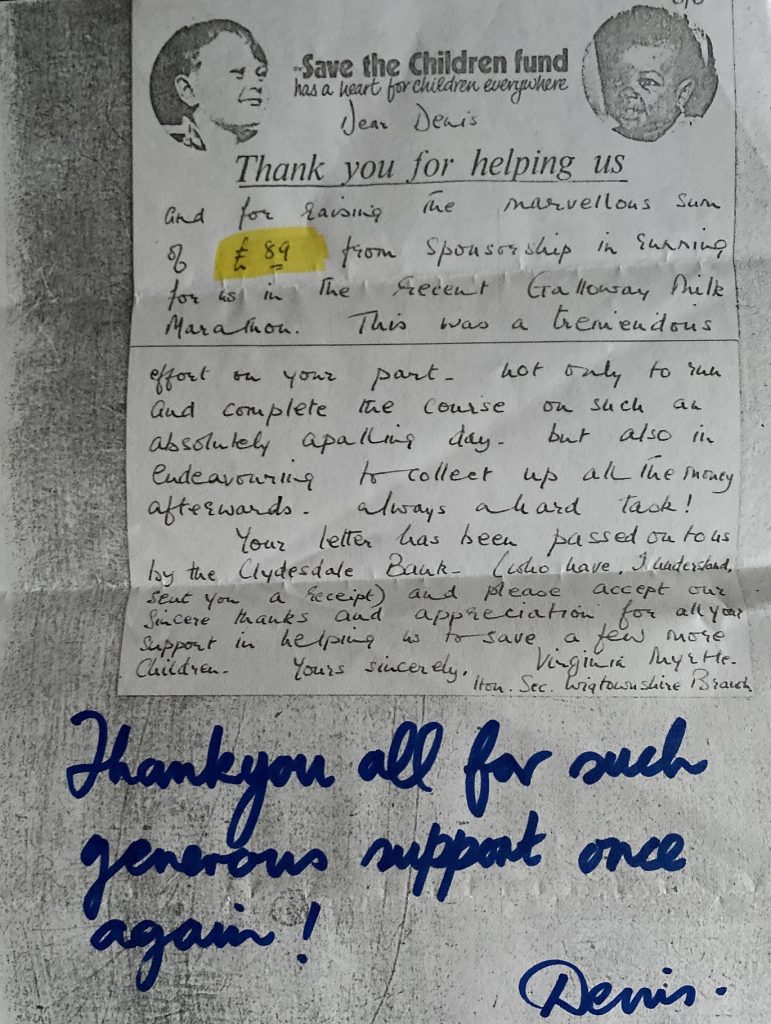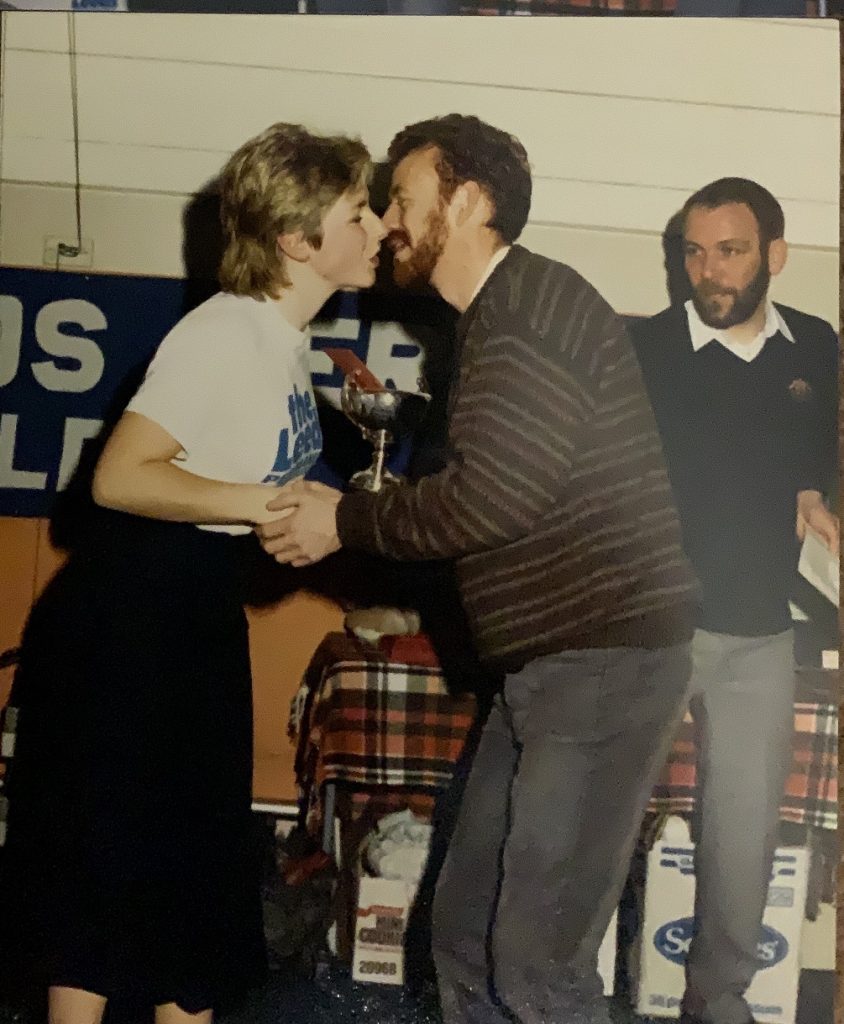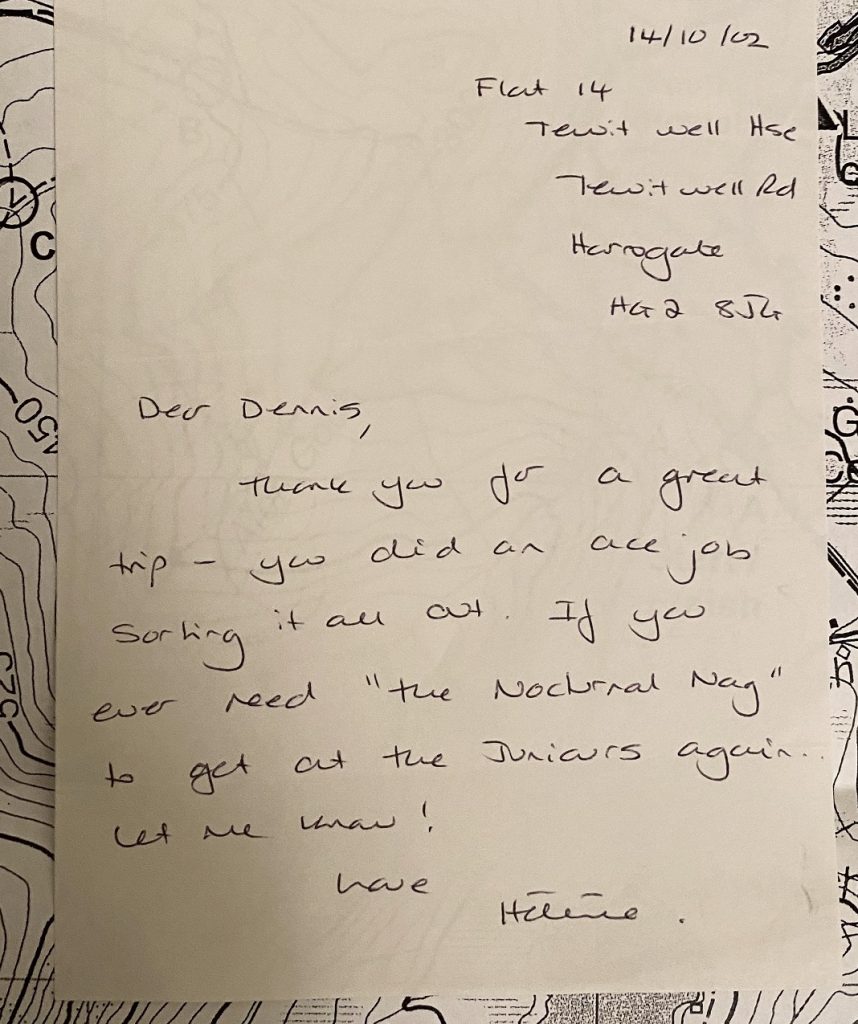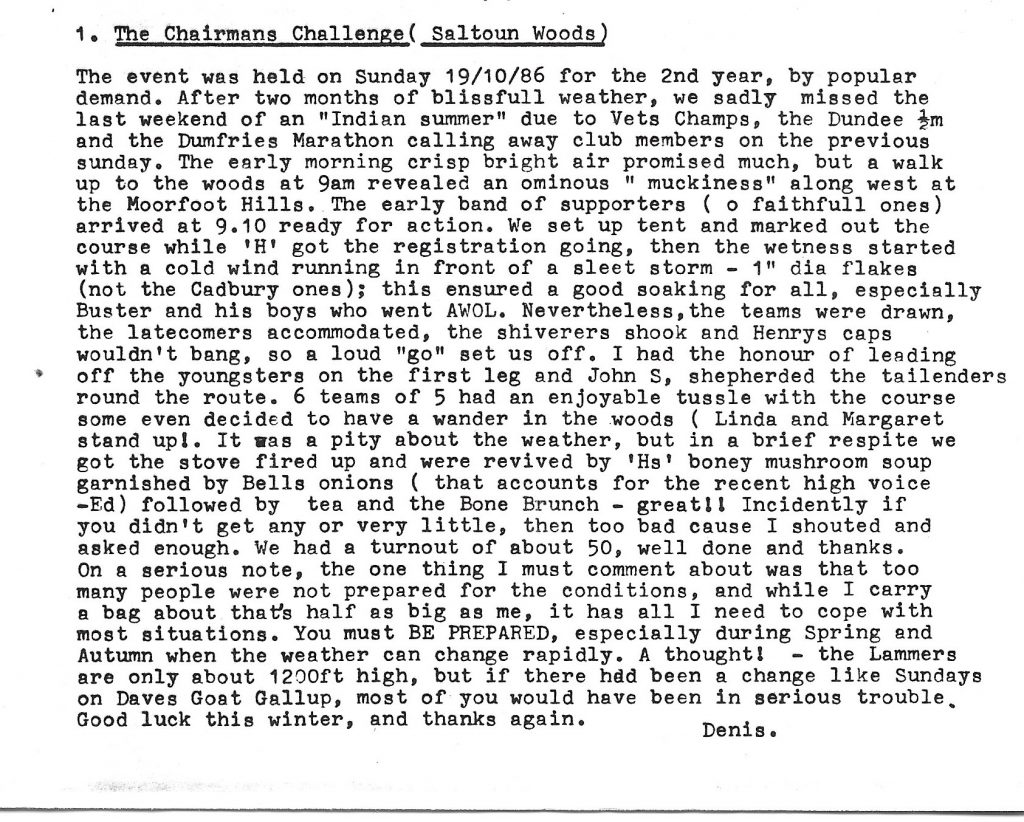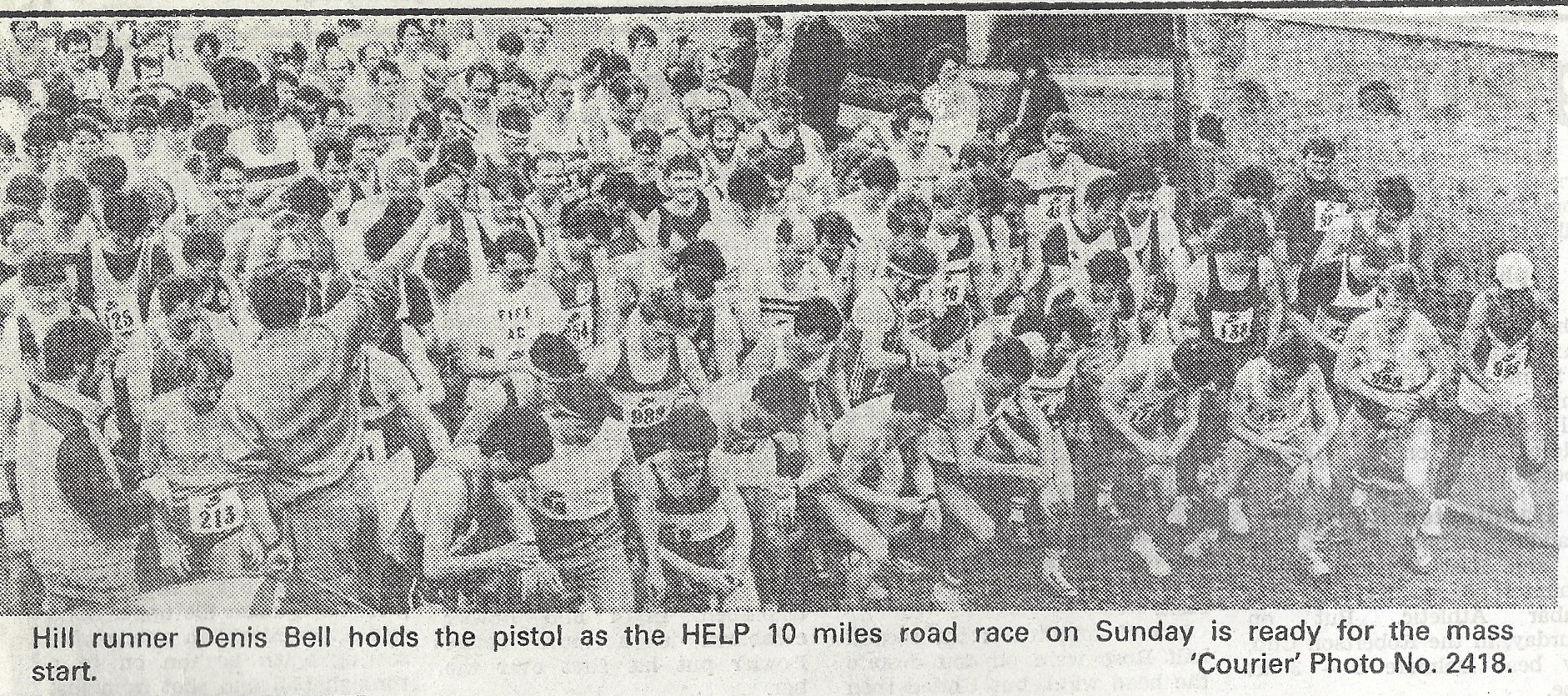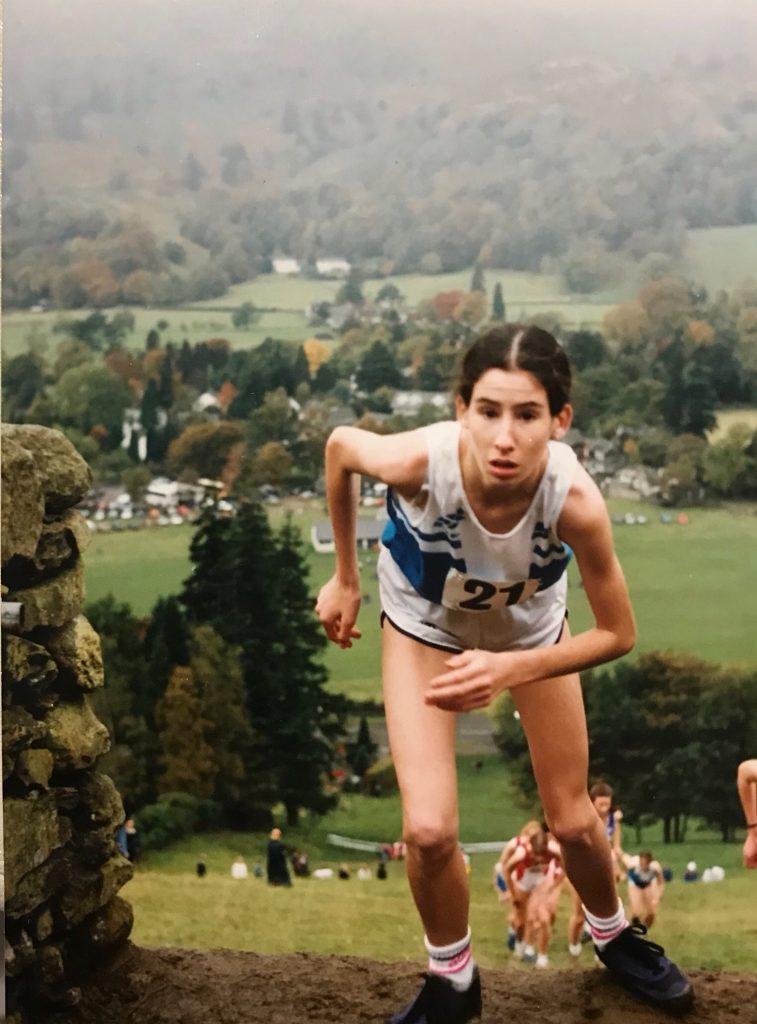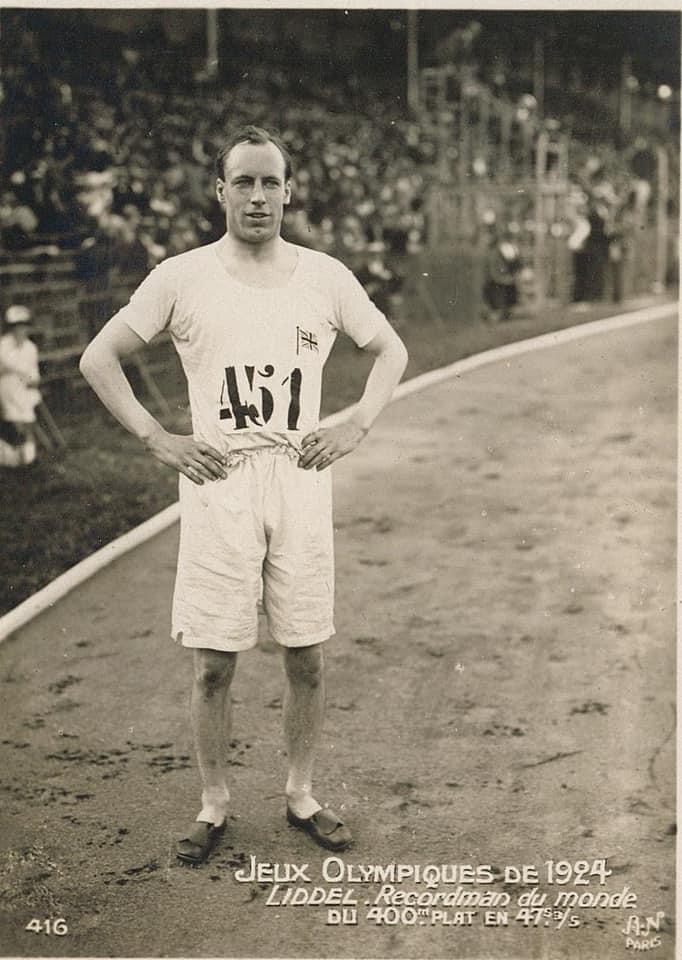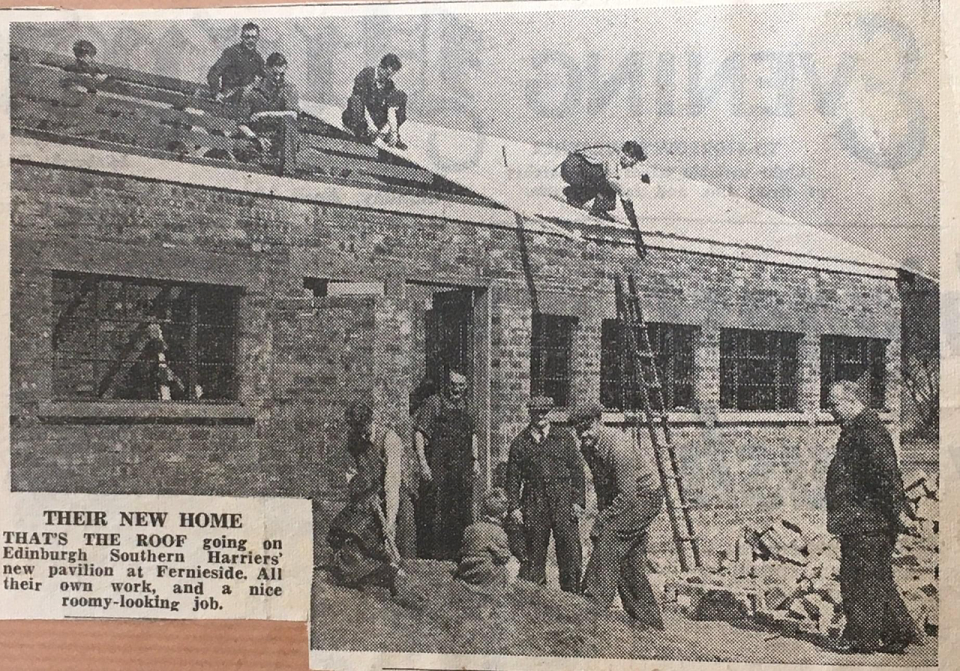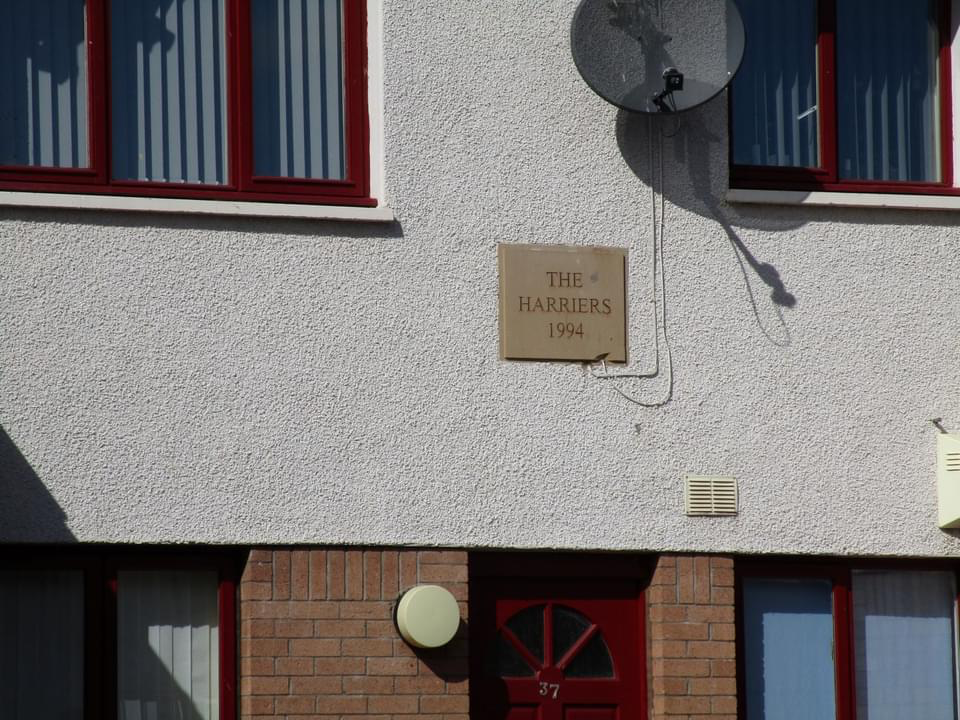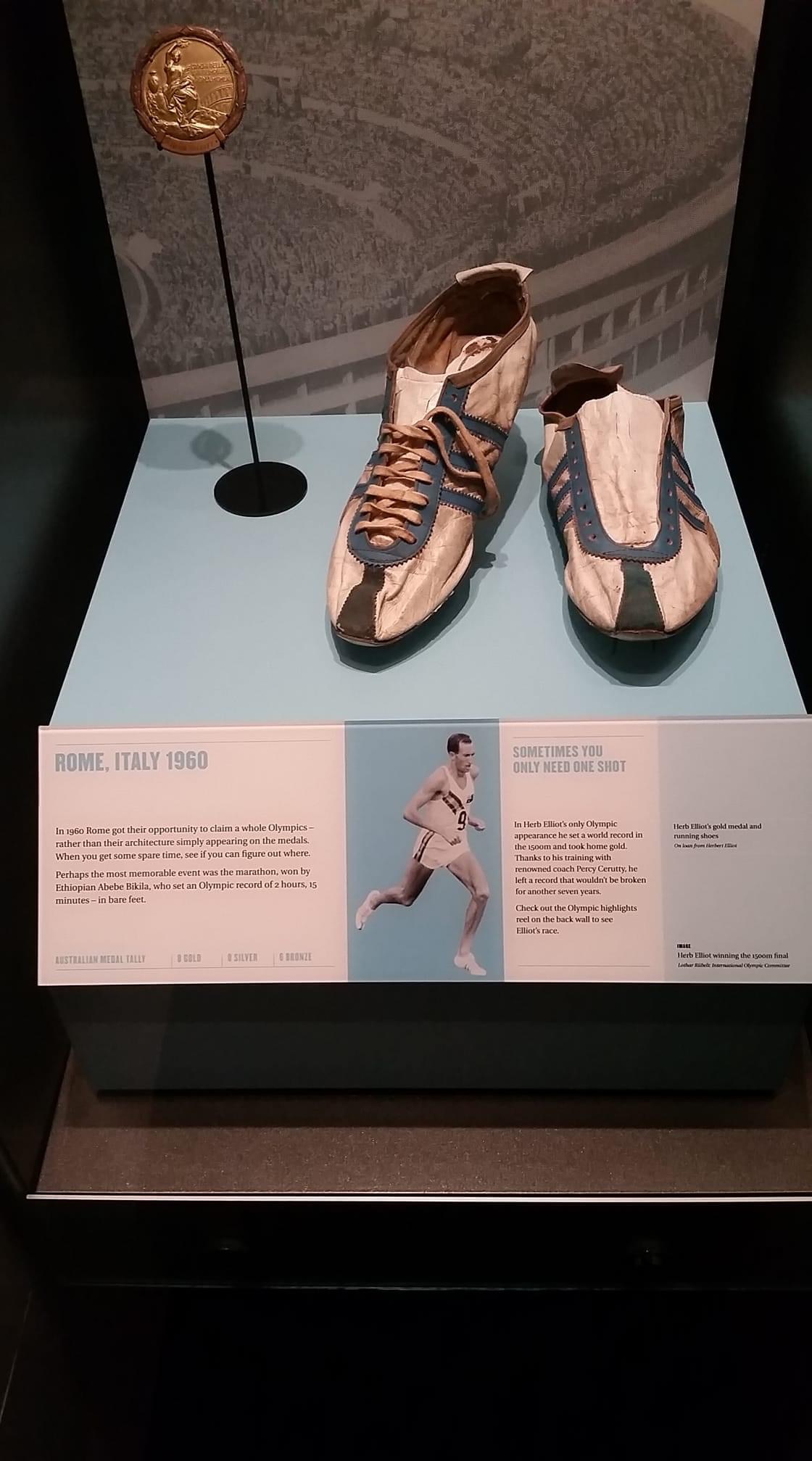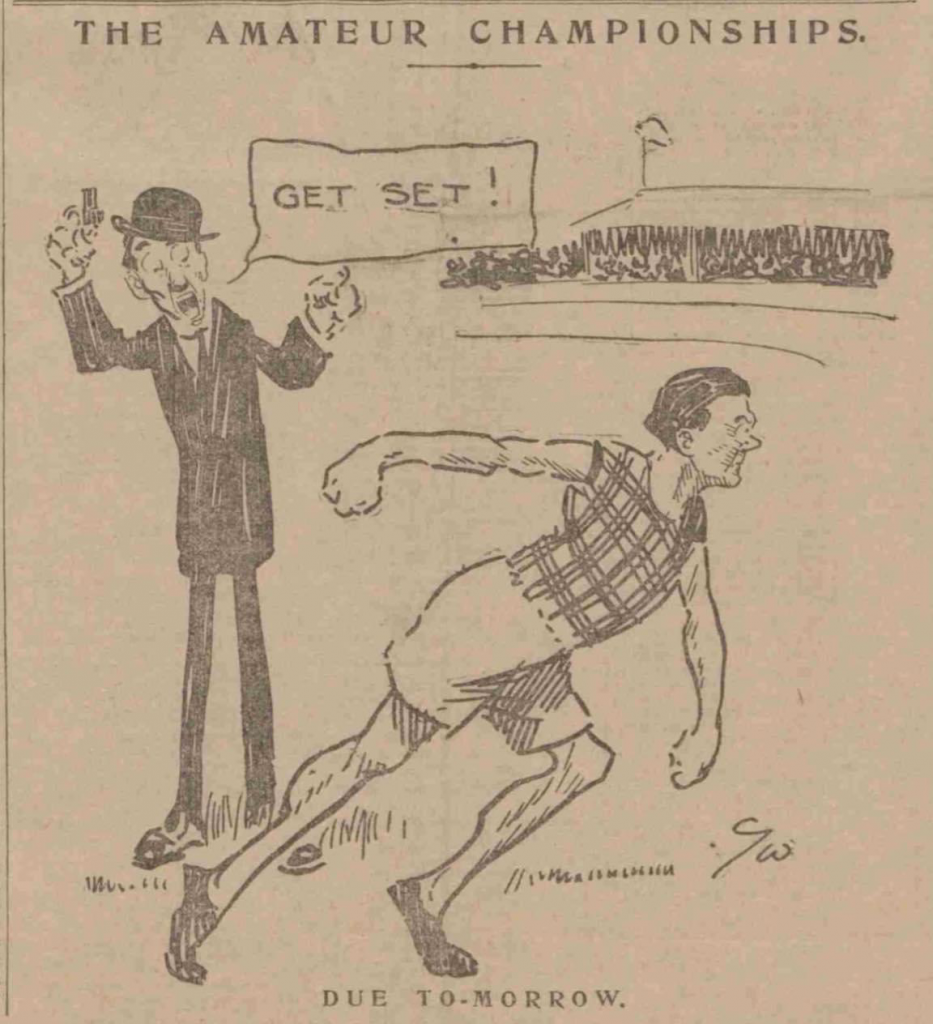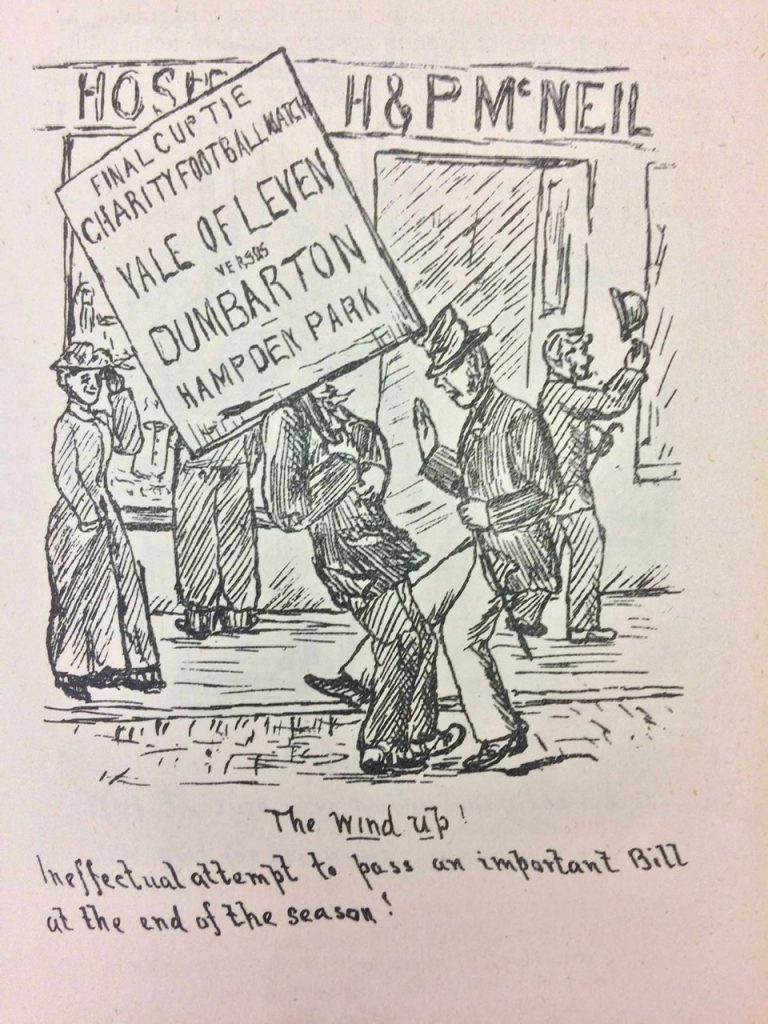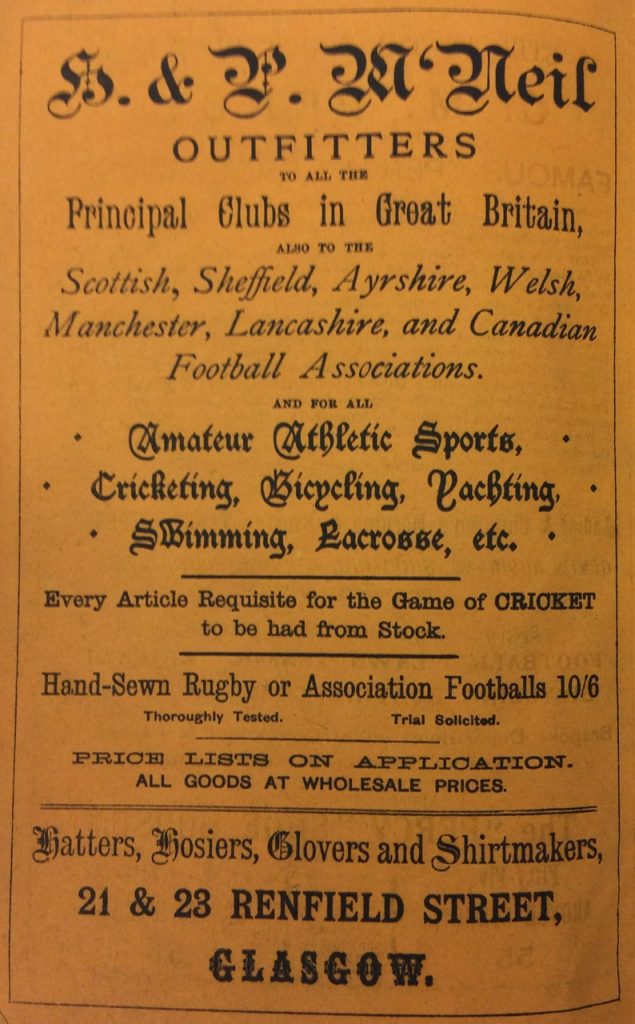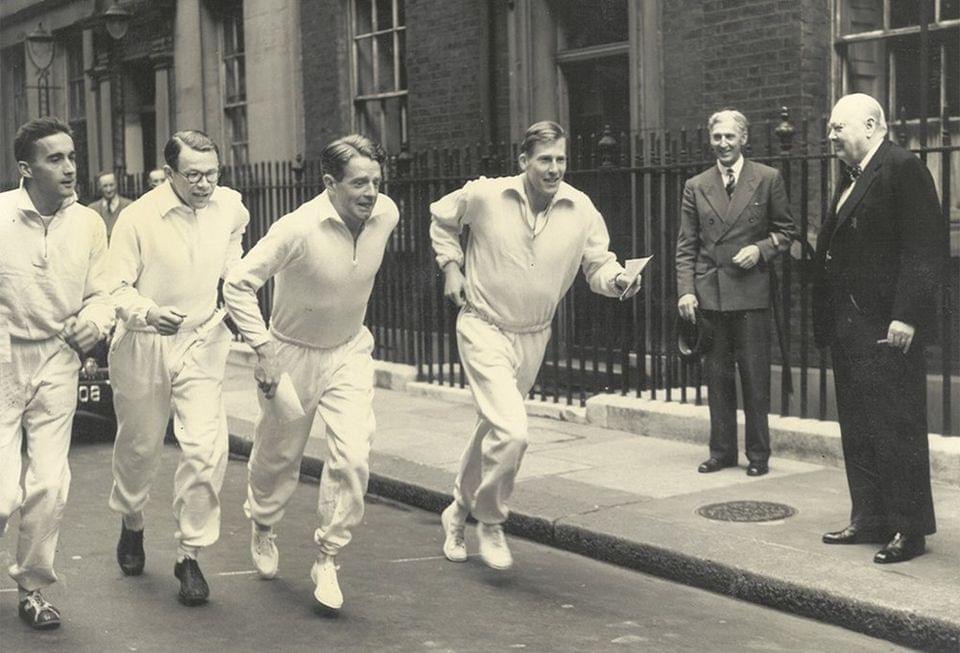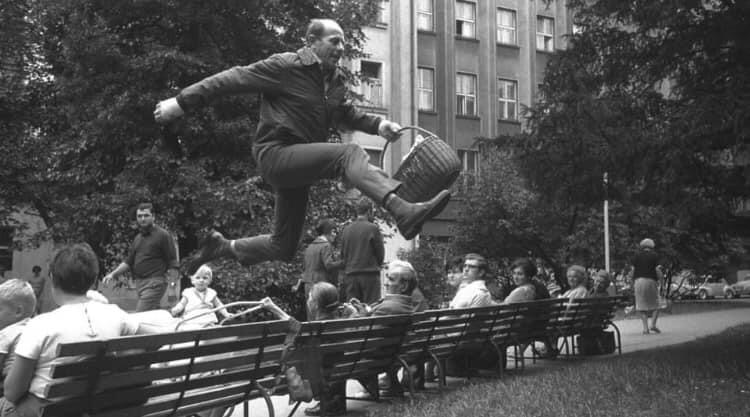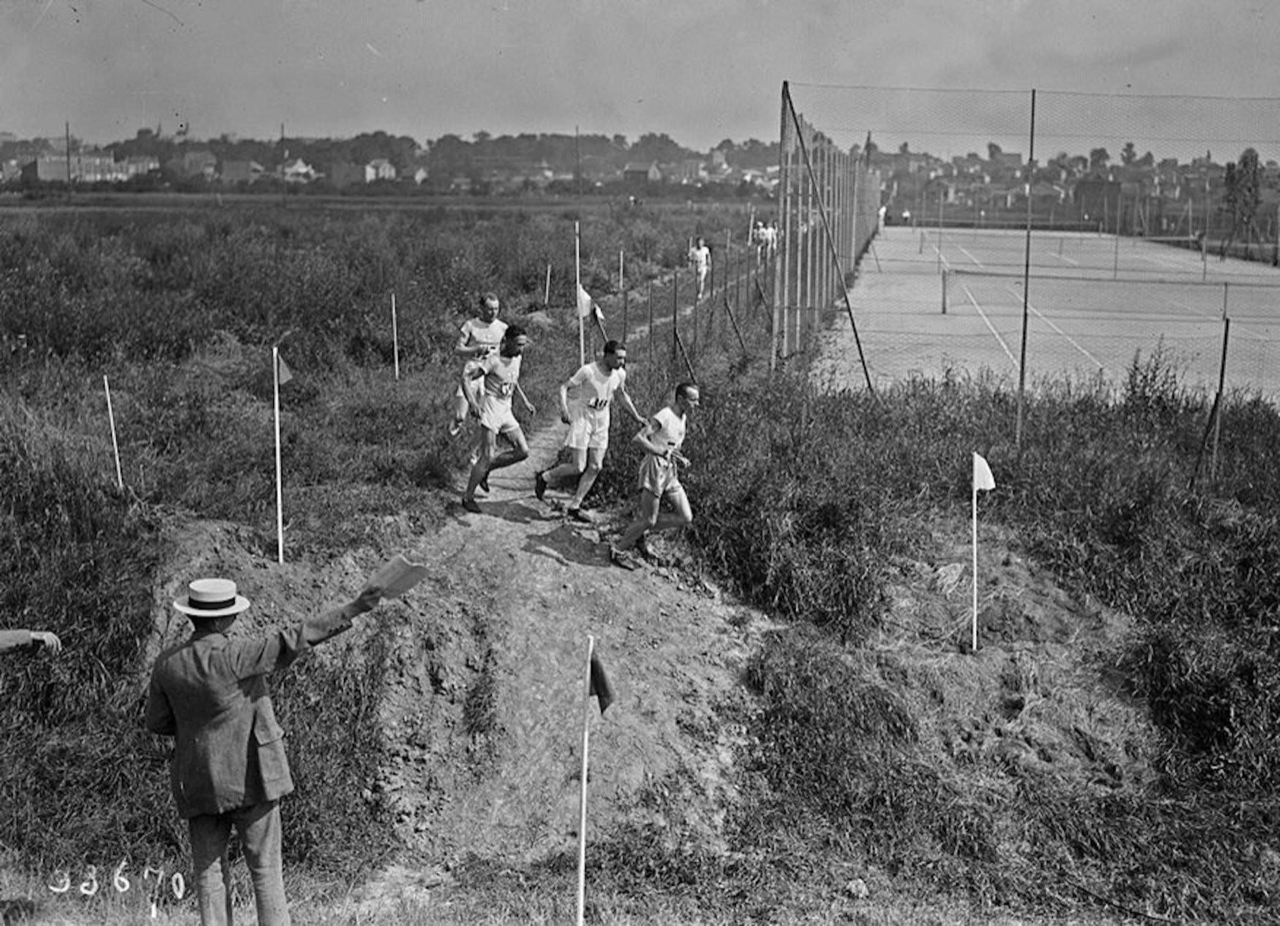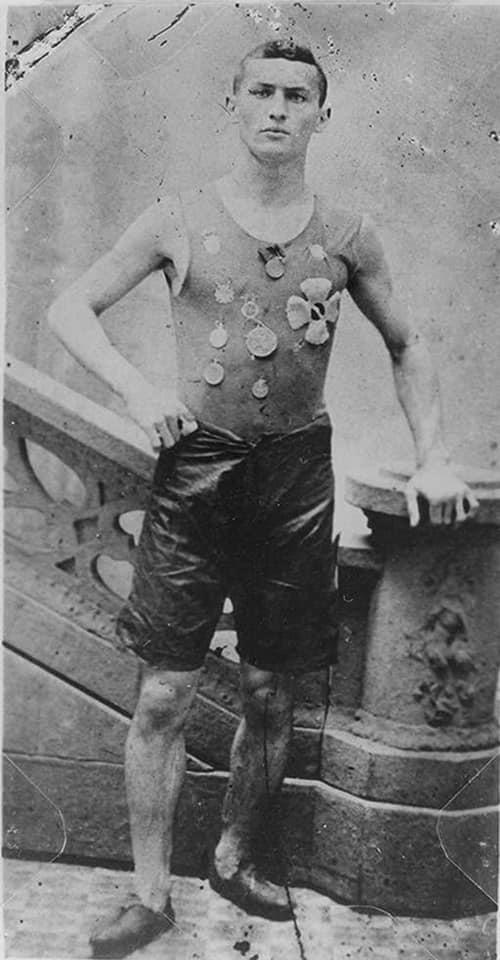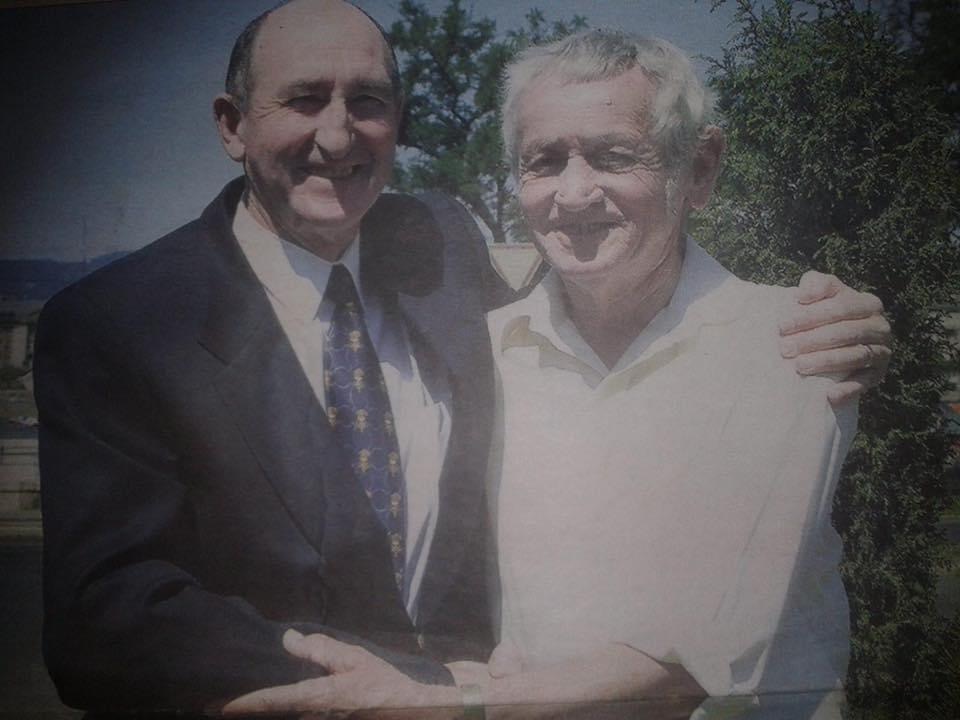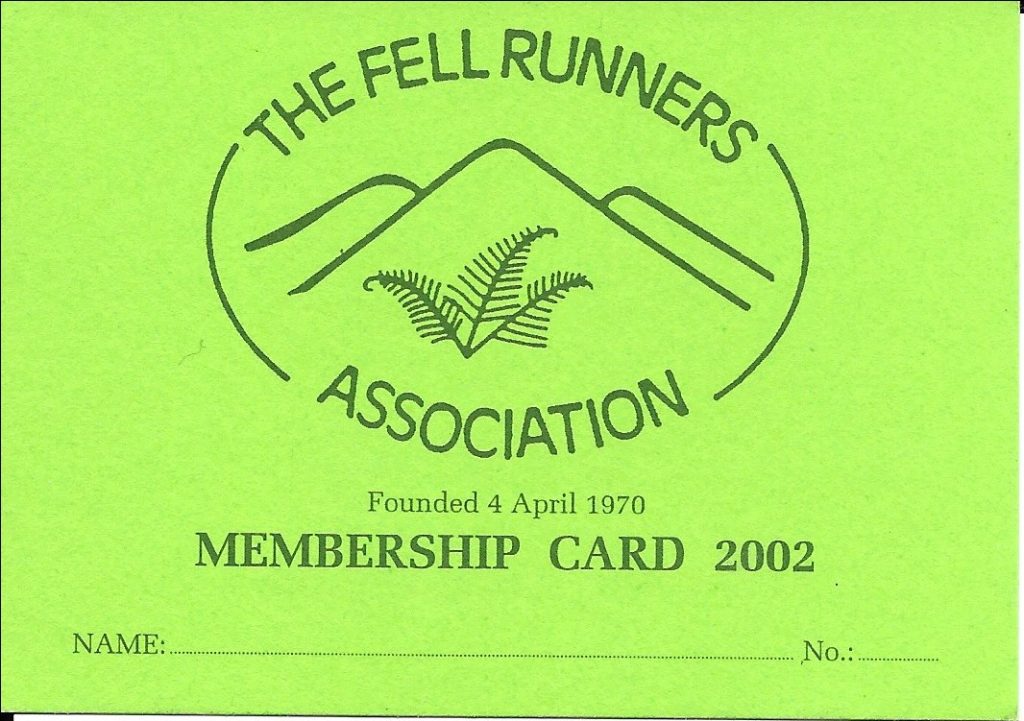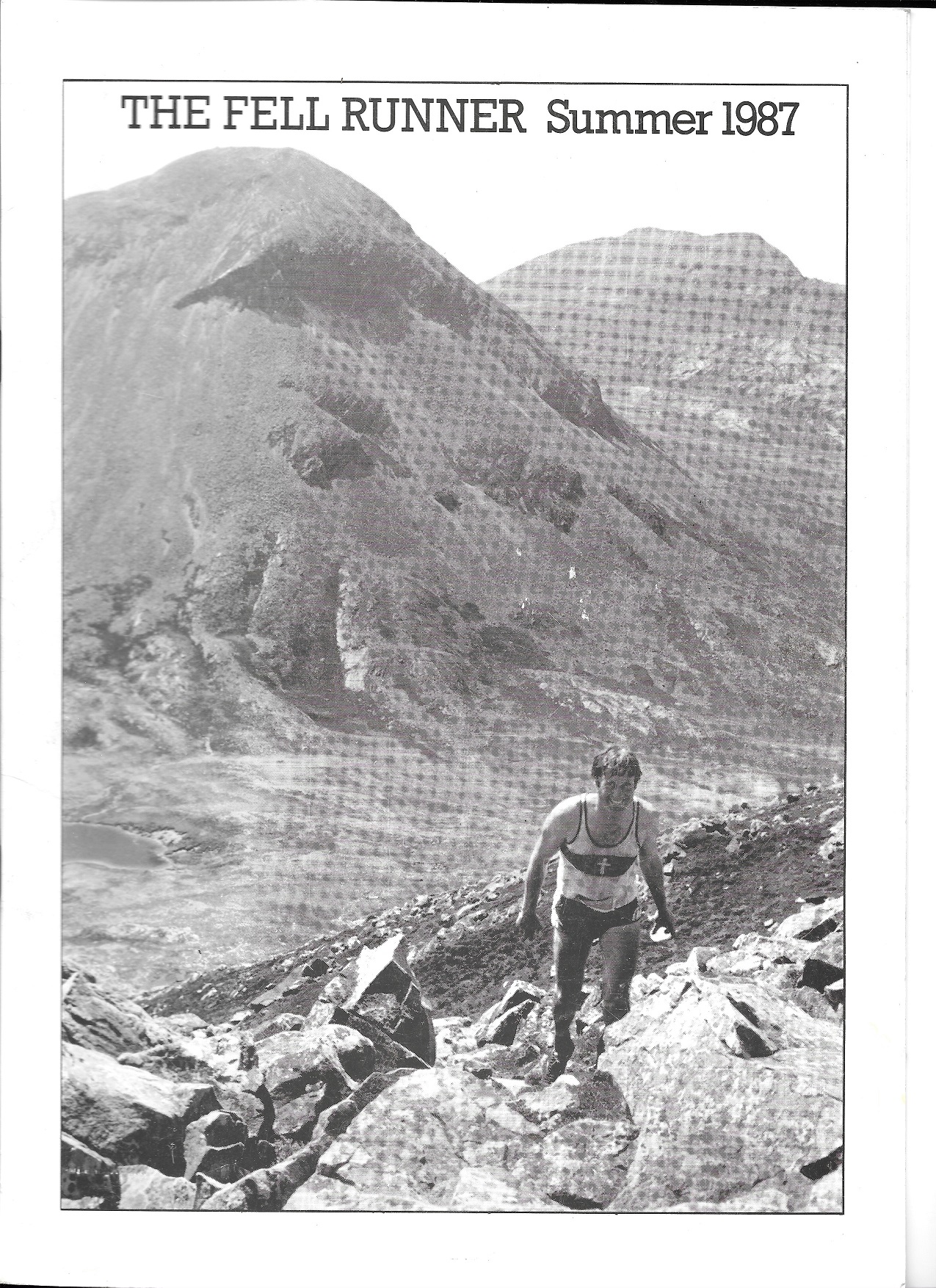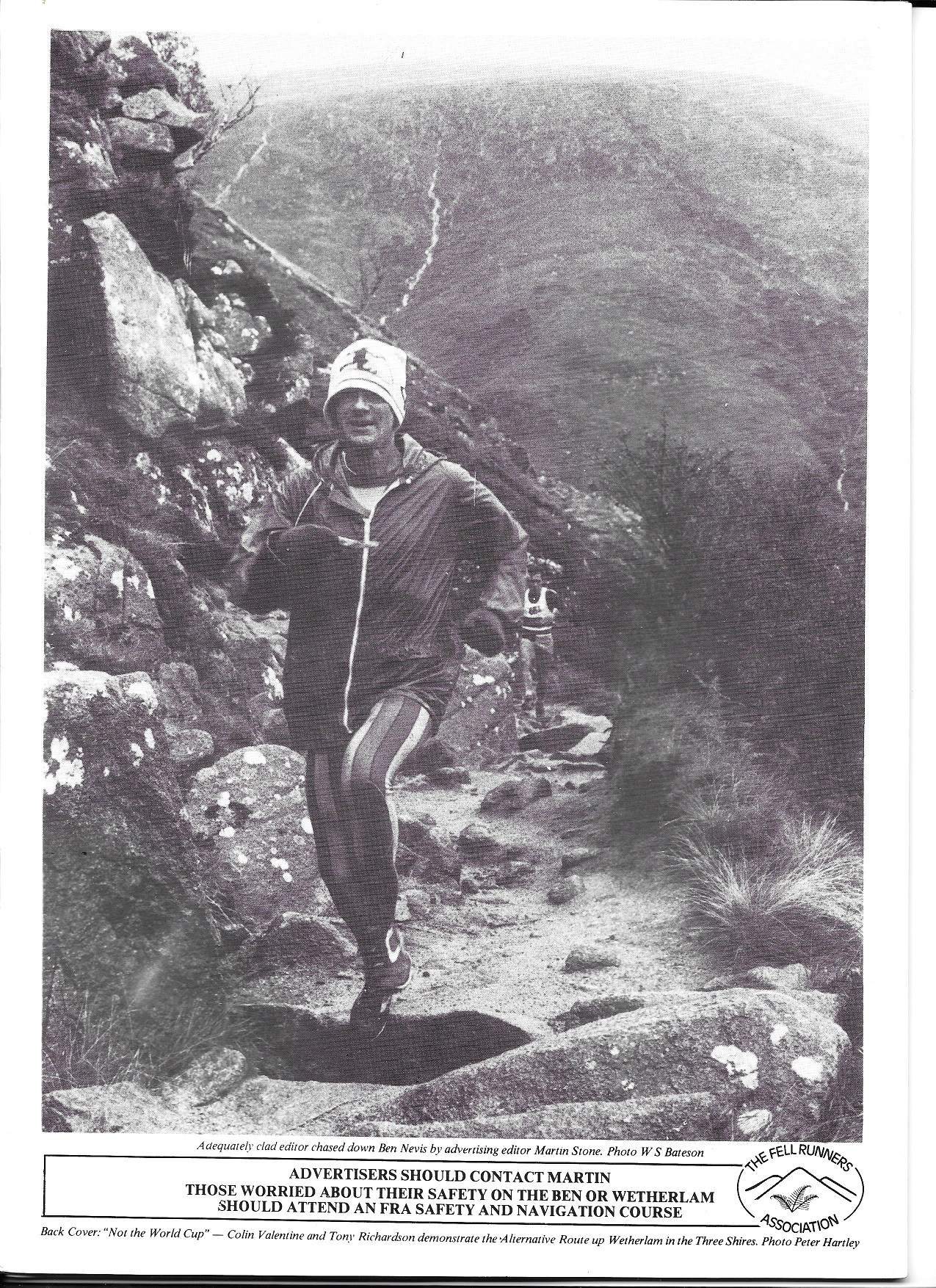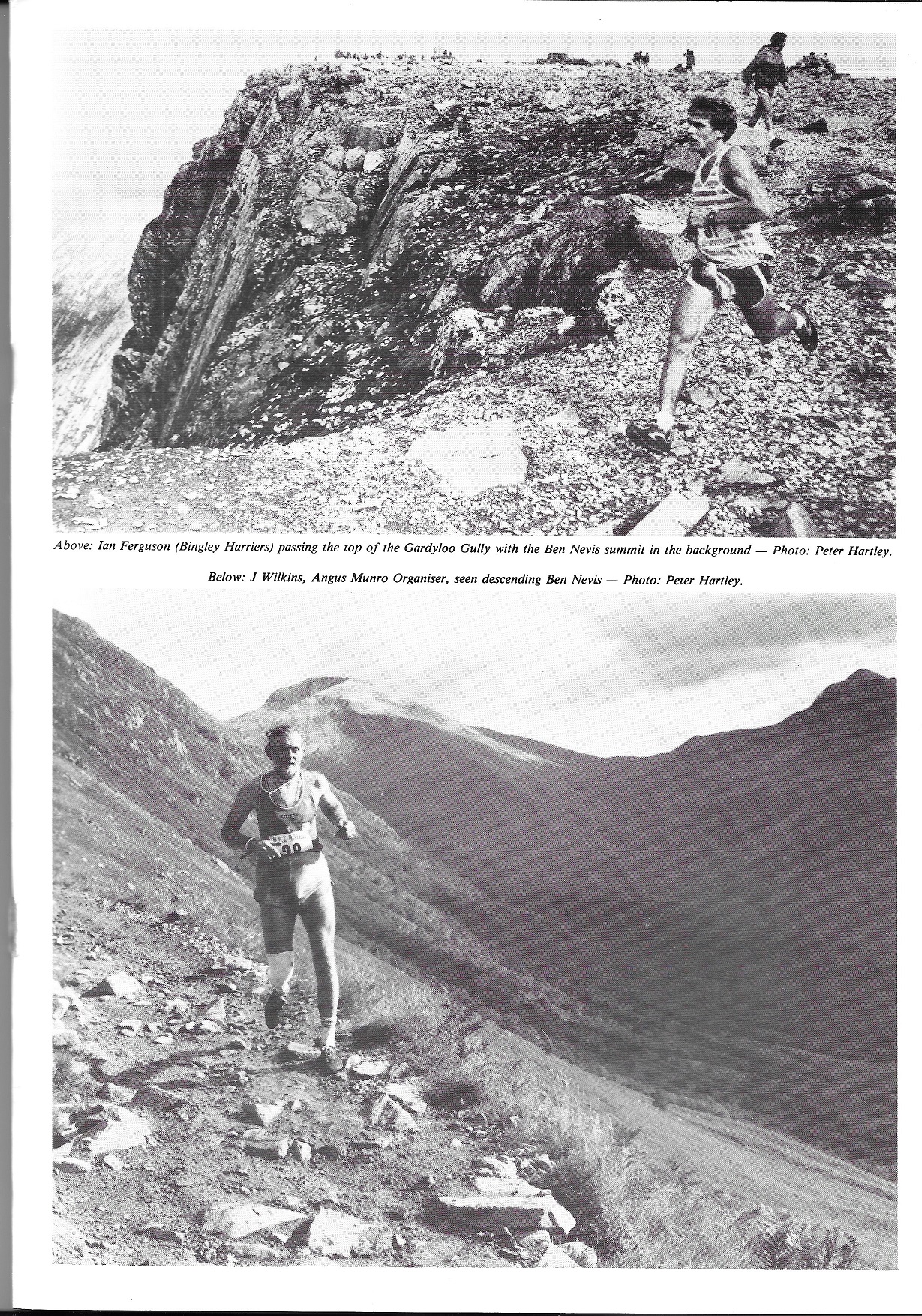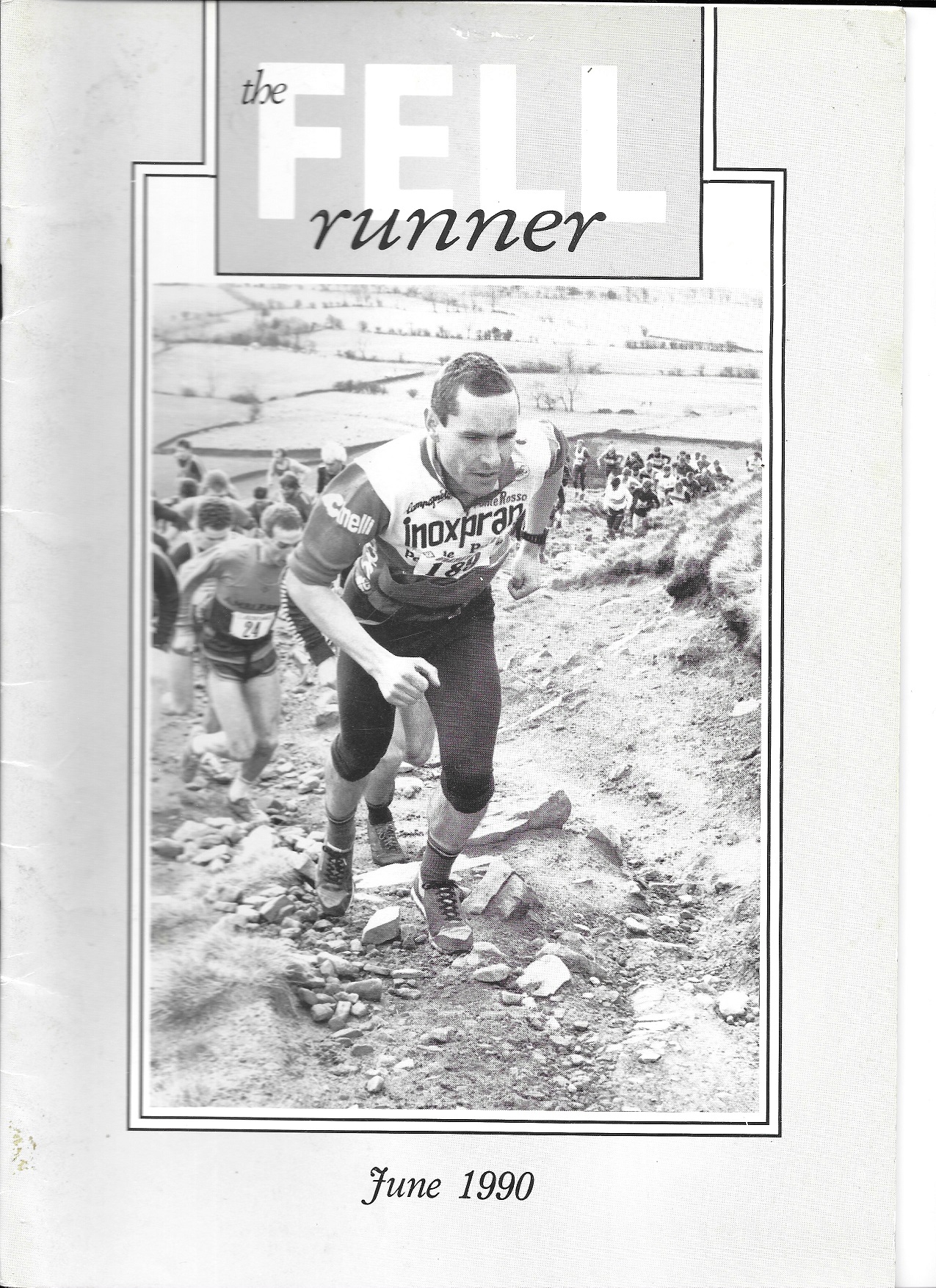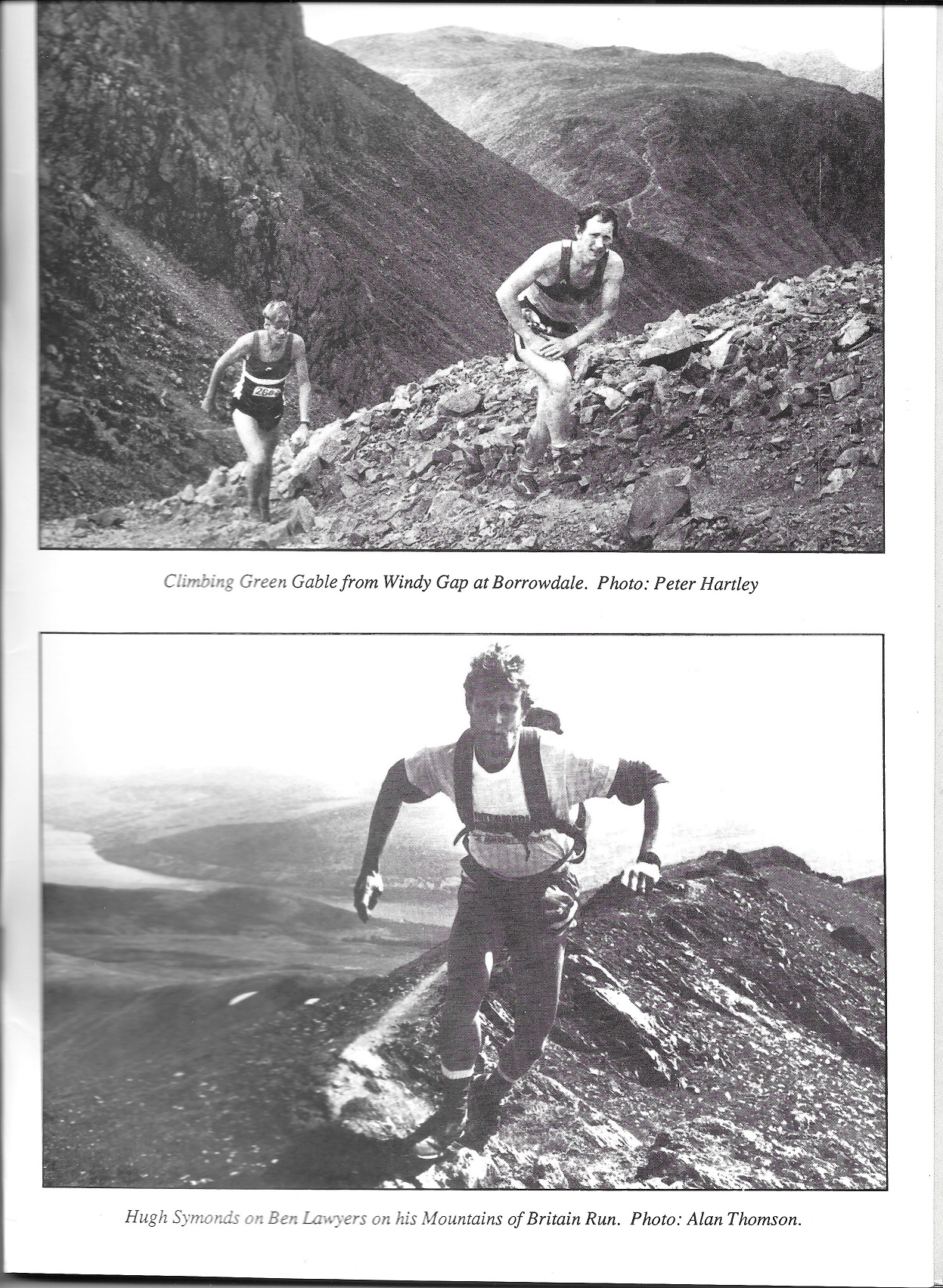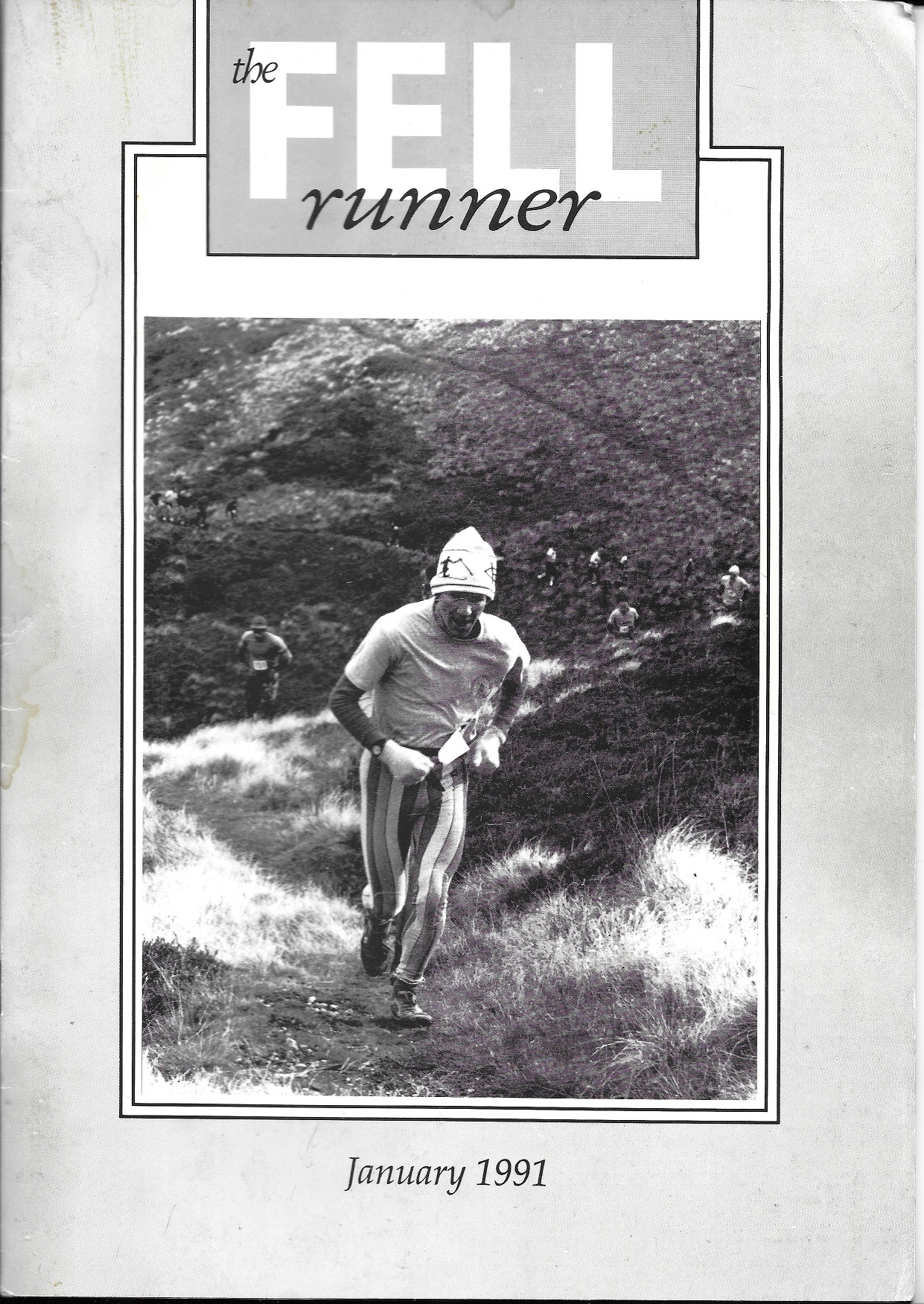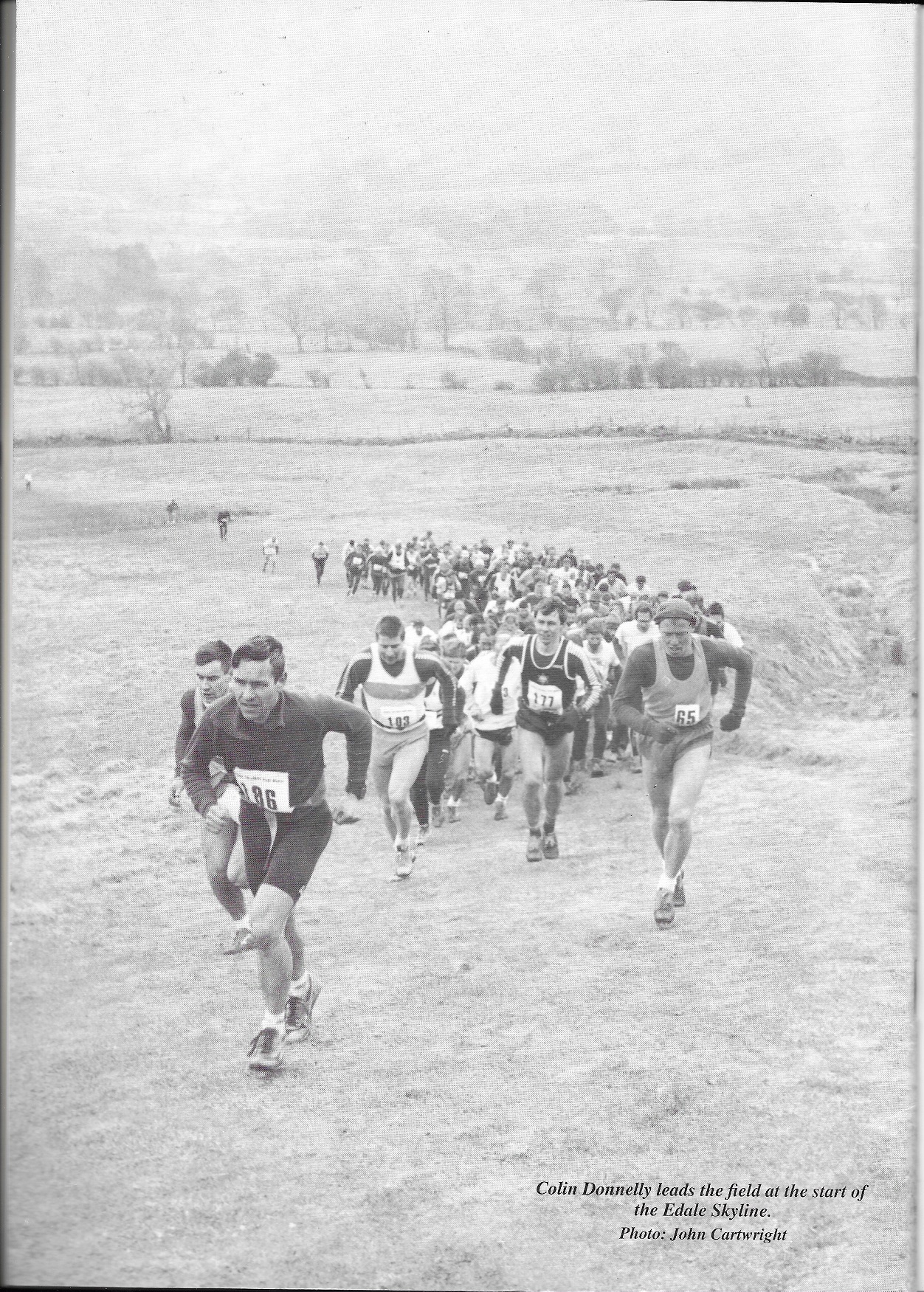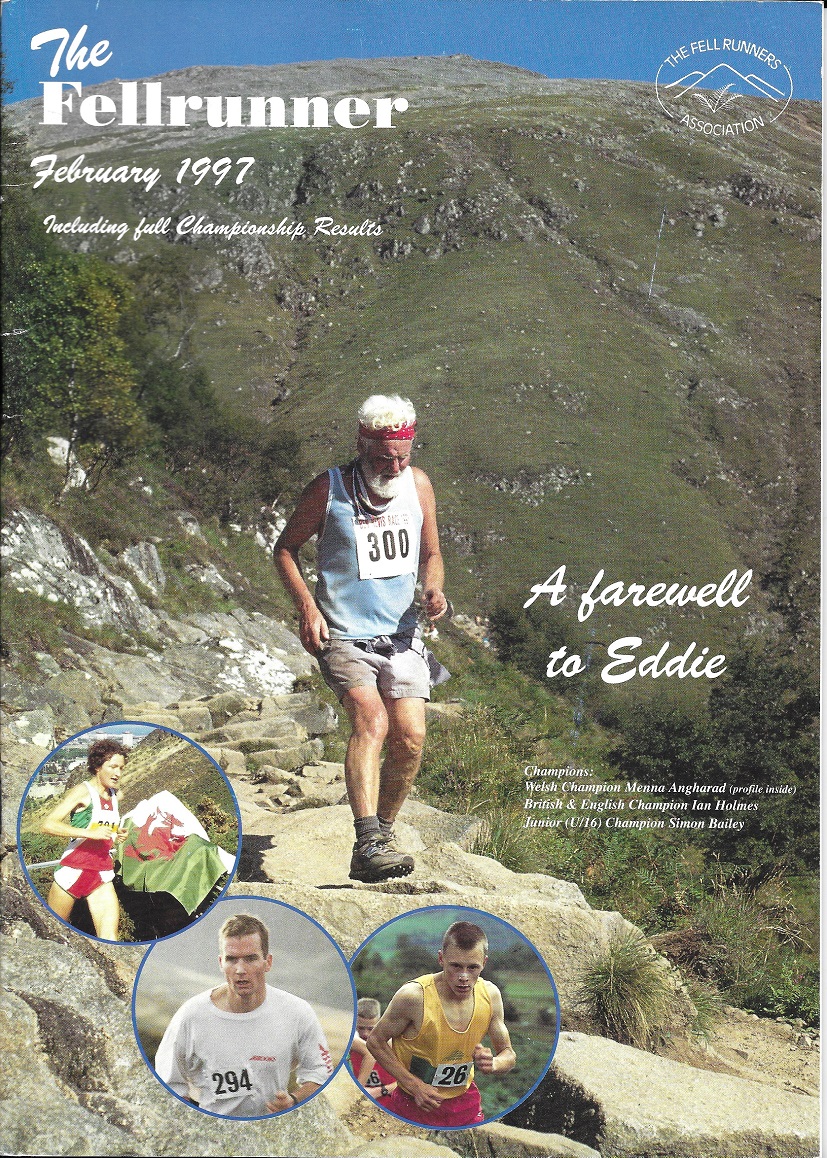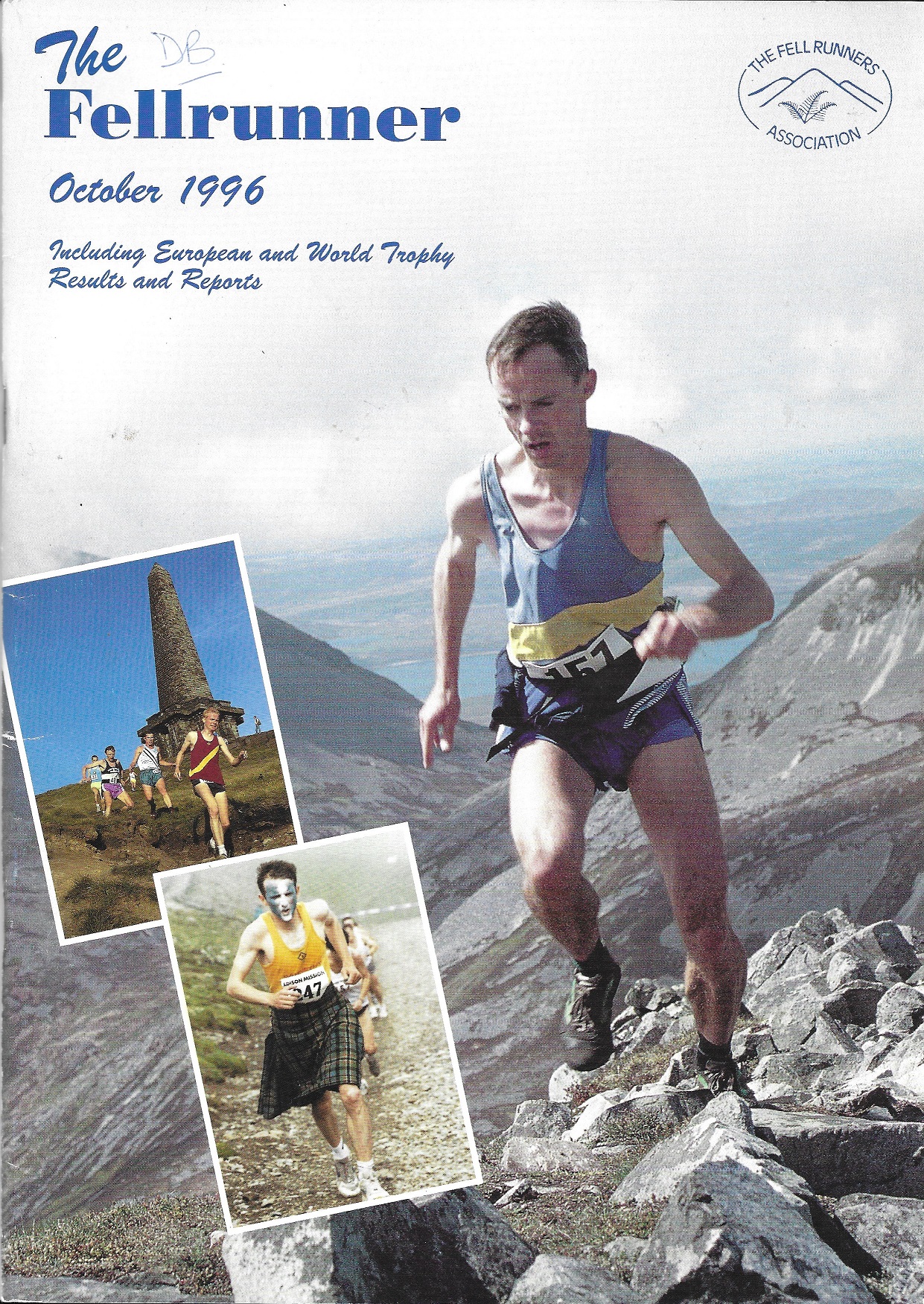Category: Uncategorized
Cosmic Hillbashers
Clubs names tend to follow a pattern XXX Harriers, or XXX Athletic Club, or for the more adventurous, XXX Striders. There are some who are a bit different though and of these Cosmic Hillbashers stands out. What was the club all about? Before we go on to Fraser Clyne’s article on them, we reproduce their own description of their aims.
Ewen Rennie, who contributed all this material about the club, was a founder member and the first Cosmics coach.
Cosmic Hillbashers – a brief History
In the late 1980’s/early 1990’s many traditional athletic clubs haemorrhaged members to specialist and/or more local clubs. Aberdeen AAC lost members to the off-shoots of Cosmic Hillbashers and Metro Aberdeen Running Club and their respective disciplines.
Cosmic Hillbashers was founded in August 1993 and rapidly attracted members from AAAC and the local orienteering club (Grampian Orienteers) as well as unaffiliated runners. With the oil industry in good heart, they recruited useful international runners but saw a rapid overturn of members. (See below) The Cosmic ethos was built around running off-road and enjoyment. This ethos cemented the early membership with social activities and overnight club trips involving a race being well supported.
Nonetheless the point of a running club is running and races. Inheriting EL-Brim-Ick Dash and Cairn William from members moving from AAAC, they quickly added Clachnaben and Morvern to their portfolio with Scolty also transferred to them from an aging organiser. Mither Tap and the Krunce Series became other Cosmic innovations.
Success at Championship and other classic races were also goals and 1999 was Cosmics’ year. The Carnethy Hill Race is the traditional classic start to the hill running season and the Cosmic men posted their intentions by taking the first prize with Bernt Njornsgarrd pushing Gavin Bland to a new course record in taking second place. Dan Whitehead and Greg Barbour also made the top ten with Thomas Bracegirdle rounding off the team in 15th.
There was more to follow with The British Fell and Hill Running Championships coming to Alva. With John Duncan running a stormer on the first leg, Cosmics eventually finished third and first Scottish Team. Not to be outdone, the Ladies finished second! The fact that Cosmics supplied three of the four Ladies for the Scottish Team at Knockdhu the previous year was indicative of what was to come.
Meanwhile Tracey Brindley and Sonia Armitage were part of the Scottish Team which took the Bronze Medal at the 1999 World Mountain Running Championship
Since then Cosmics have not been so prominent at the sharp end of races but, in Veteran/Masters categories, Sonia Armitage and Veronique Oldham were regular winners with Veronique still managing to do her stuff in the SuperVets. Other Cosmic internationalists include Catherine Mangham, Clare Millar (Whitehead) and Dan Whitehead.
Nowadays Cosmics’ strength seems to be in endurance events with Mike Raffan and Alan Cormack leading the way.
Jason Williamson and Colin Larmour displaying the different colours of Cosmic attire.
Jon Duncan (a World Championship Gold Medallist at Orienteering) running away from the field at Cairngorm
Cosmic quines showing off the Cosmic Logo
Demonstration of Cosmic social side: forming guard-of-honour for Laura as she finishes her first and last hill race (Glamaig). (Her fiance, Steve Rivers, persuaded her to come on the away weekend and then to do the race as you get a pint and plate of food for finishing).
Cosmics endurance runners par excellence – Mike Raffan and Alan Cormack
THE HILL!! By Mike Raffan
As you will no doubt have read in the last blog after UTMB (Ultra-trail du Mont Blanc) I lost any reason to train, so I planned to sign up to The Hill. Only problem was I couldn’t sign up as I didn’t know when I was travelling to Boston for Annette’s sister’s wedding. After confirming dates, I was able to sign up to The Hill with 2 weeks to go. With lack of time for specific training this meant I was relying on UTMB fitness.
The Hill, for those that don’t know, is 1.45 ish miles up a hill, dib your dibber at the top turn around and go back to the bottom of the hill (pub/checkpoint), repeat 55 times for a total 160 miles. If you stop for more than 30 mins, you’re out. If you get to a point where the race crew don’t think you can complete the distance within the time, you are out. The race is in December so the weather has the potential to be really bad. The race starts at 8 pm in the dark, it gets light at around 8am in the morning and then dark again around 4 pm, repeat for a second night. Last year was the first running of the race and Jon Steele was the only person to finish in 47 hours 31 min.
Duggan drove me down to the race so he could shout abuse and most importantly drive home again. The rules are you are not allowed any outside support; this includes buying anything from the pub. We arrived at the bar with plenty of time and the only person that I knew was Sean Malay from the double Cateran earlier in the year. This also meant nobody knew who I was either. I heard Mark Cockbain the race director mentioning to someone that he was the favourite to win the race. I don’t know who it was.
With the race being in the dark for 10 hours, at the start I didn’t feel the boredom that everyone predicted, instead you just get the tunnel vision from the head torch. You start at the side of a busy road for about 200m then turn off to the right. It was around freezing so everything was icy. After another 200m, you’re on to land rover tracks for the rest of the hill. A gradual incline, and then you get to the hole in the wall and the bit I described to myself as the real start of the hill. Down for a few hundred metres and then the proper hill starts. It’s still not that steep, since Mark wants the whole thing to be runnable. The first lap I had no idea where we were going, so I stuck with the group until we got off the road – but after that the pace felt too slow. I had my Sunnto on just clock mode so I was just running as I felt. I got to the top and turned back down. I counted in my head when I passed the next runner, 30 seconds. First lap just under 24min, I was told I was going too fast by the race crew but I just laughed at them.
I got told later the social media chat was was along the lines of 1st lap “Don’t know who this Raffan guy is but he’s going too fast”. Lap 3 “He’s still going, it’s freezing outside and he is wearing shorts! He must have northern spirit”, “No, he’s Scottish”. Lap 5 “He is still wearing shorts and he has a beard. He is hardcore!” By this time, it was well below freezing and my beard was getting icicles forming in it. When I grew my beard for the whole year last year, one thing I wanted to do was get a snow beard but didn’t, so now job done! For the rest of the night and day it was steadily gaining a few minutes at a time on the guys behind me. When you dibbed in there was a screen at the checkpoint and if you could think straight you can work out how far behind the next person was. Two laps was a comfortable lead.
It was a full moon and the sky was clear which meant that you could see enough without a head torch; I think this actually helped me keep the pace up. Throughout the race I went into the pub 3 times to get some more layers on, since I slowed when I started to get a bit colder. I managed 100 miles in about 19 and a half hours. This was going to plan, as I knew the weather was not going to be as nice on the second night. After every second rep I stopped to have some food. I started with my own chia charge bars and some other things I had in my supplies box like dried fruit. In the morning I started to get some food from the race crew, usually porridge. I would ask for it on one lap and they would have it ready for the next time I was there. I wasn’t worried about it being hot – I just needed to pack the calories in. I added my own custard to the mix just for extra calories. On the laps that I didn’t pick up real food, I grabbed a gel from the race supplies. They were sponsored by Gu gels which I have never had before, turns out they are now my favourite gels. I have no idea what flavours they were (I liked them all) but it was the consistency that I found really easy to eat while running. Mark told me to take some home at the end of the race, but guess what? I forgot.
The race was 160 miles. This was far too much to get your head around when you are running, just thinking about how far you have left to go is not nice, even laps were too much. I ended up breaking down into how many double marathons to go, or sometimes marathons. It somehow seems like a smaller number. Like the distance, the lure of the warm pub was there to make you want to stop. I tried to stay out of the pub as much as possible. I think I was in there 3 times to get extra layers or new batteries for my torch.
Most times when I stopped, I started to get cold. I would put my buff on at the start of the lap and my thin gloves. By the end of the road section my buff would come off as I was hot again and at the top of the hill the gloves would come off for the trip down.
During the day the wind gets up and the freezing fog comes in. Every time on the down lap the wind was just at the wrong angle so that I couldn’t protect my face. Down the right ride of my face was feeling cold. Every so often I had to rub my right eye just to warm it up. After a few laps I could see a milky blur in my eye. Bugger, the wind must have scratched my contact lens. Oh well, nothing I could do about it as I didn’t have any spares with me.
At about 5 am on the second night the batteries started to run out on my torch. Luckily, I had put some spares in my pocket, but what I didn’t think about was that I had to get the batteries the correct way round. They ran out just before the hole in the wall. I hid down out of the wind and tried to use one of the glow sticks that was placed to mark the route to see what I was doing. This was not a fun experience, especially when I was falling asleep while running. I didn’t think this was possible before but now I was running along and suddenly waking up when I would kick a stone further down the course. I had been holding my head torch in my hand to try to waken me up a bit. Not long after I changed the batteries it seemed like the sun came up again very soon. It may have just have been the concentrating but I was awake again. This was enough to get me to the end. The lead, that I had forced in the first few laps, I was able to keep right to the finish.
Mark the race director joined every runner for the last lap!
Heart & soul effort from Mike Raffan
Ultra enthusiast Mike Raffan, whose running CV includes the UTMB and the West Highland Way race, has just achieved what is possibly his most satisfying competitive achievement. The Aberdeenshire man took first place in the Isolation Ultra, organised by Cockbain Events, recording a distance of 180.2 miles, on a 50 metre course within the confines of his back garden.
What makes Mike’s performance even more remarkable is that he completed the epic run towards the end of the April-long window after setting out a 106 mile marker earlier in the month. AND he had undergone open heart surgery earlier in the year.
The IT specialist at the University of Aberdeen had the benefit of a scenic, if tight, course, with views across the North Sea from the garden of his family home near Collieston. He was also supported by wife Annette and young daughter Flora.
But Mike didn’t have a classic preparation for this serious ultra challenge as he had undergone surgery to correct an anomalous right coronary artery on 25 February. This followed concerns Mike had last year when he noticed that he was finding it hard to breathe while running uphill. This difficulty became more pronounced and Mike sought medical advice.
He describes the diagnosis: “I was born with my right artery growing out of the wrong place.” The upshot was an operation at Glasgow Golden Jubilee Hospital.
Mike told runABC Scotland online: “I was out of hospital after just three days. The nurses on the ward were not sure about discharging me so early as they had never let anyone out in less than four days – the preference is seven. However, I passed all their fitness tests and the surgeon said it was ok for me to go.”
After just 10 days, Mike went for a slow two-mile run with his wife Annette keeping an eye on him.
“Every time I went out, I felt I had to hold my chest. The rehab physiotherapist told me this was due to the impact and that my chest bones had not fused together properly, so I started doing a lot of cycling instead to get to get my fitness back.”
Mike had only started running properly again when he decided to make the Isolation Ultra attempt. He said: “I relied on muscle memory and stubbornness to get me through the challenge. The run was slow. Stopping so often to turn around was like doing a bleep test for 27 hours.”
Event conditions required a maximum loop of 100 metres at your home and a non-stop (not staged) run with a 1 hour maximum rest stop.
Event organiser Mark Cockbain was effusive about Mike Raffan’s double ultra effort: “Only a few weeks after heart surgery, he came back for a second attempt smashing out 180.2 miles to become the Isolation Ultra ‘Cooler King’.”
A major inspiration for the ‘convalescing’ Raffan’s superhuman effort was to thank the medical team at the Golden Jubilee Hospital and he has already raised over £2,000.
The Tunnel Ultra by Alan Cormack
I have participated in events organised by Mark Cockbain previously and when he announced the Tunnel Ultra in 2018, I was instantly intrigued. The concept of the Tunnel Ultra, is 100 laps of Combe Down Tunnel near Bath with 55 hours to complete.
I had attempted the Viking Way in January during which I was timed out. My immediate thought when being driven to the finish line in Oakham, was that I did not want to compete in The Tunnel. I seriously considered pulling out. Once I had something to eat and a good night’s sleep, I was glad that I hadn’t said anything to Mark and didn’t really give it much thought until a fortnight before the race.
It was when we received the Race Brief telling us about the lack of parking near the start that I seriously started thinking about the race. What I wanted to do was to arrive in plenty of time, be well rested and be as relaxed as possible before the race start. I immediately contacted the local hotel about being able to park in the car park and after being told of the cost, I decided to look elsewhere. I found a farm shop half a mile from the start who were more than willing to allow me to park my car and camp.
I arrived the day before the race, walked down to the tunnel entrance and ran down through the tunnel into Bath for a swim and a shower. I then understood when running through the tunnel, about the strange music and lights.
On the day of the race, I had a good night’s sleep and walked down through some muddy fields to the start line where I recognised quite a few of my fellow runners. Due to the location of the race, all the runners had to be self-sufficient. Some runners had taken chairs and plastic storage boxes. All I took was an extra pair of trainers, some extra clothing and a carrier bag of food. I felt very lightweight!
At registration, we were all given a dibber to be worn around our wrist so we could “dib” in at the end of each lap. After a group photo and a quick race brief, we set off in bunches of five at 5 second intervals.
As this was a railway tunnel, my GPS watch wasn’t going to be of much use. I had no idea how to pace myself so I set out and started running at what I felt was a reasonable pace. I did get a comment from another competitor that they felt I had gone off too fast so I made a conscious effort to slow my pace down. I had a long way to go and I didn’t want to fatigue myself too early.
Another drawback of the uselessness of our GPS watches was that it was difficult to know how far we had actually gone and it was easy to lose track of how many laps we had done. There was a whiteboard which was updated occasionally with the lap count. During both nights, this wasn’t updated due to Race Director Mark, staying in a luxurious hotel while we were running up and down a railway tunnel!
It was reassuring to know that I was keeping well within the cut-off which was 100 miles in 27.5 hours. I was so paranoid about forgetting to dib in at the end of each lap, that on some occasions I was double dibbing and this confused me and Richard Weremiuk who was in charge of the tracking system.
Mark had kindly provided a checkpoint which was 100ft outside of the tunnel, this was a luxury small gazebo with the finest leftover Pot Noodles and Cup-a-Soups from The Hill On Tour Ultra. We felt very spoiled indeed and Mark is clearly going soft. Many thanks to Karen Webber, Dave Fawkner and Byron Crook who were superstars, keeping the kettle on the boil and masterful at keeping the Pot Noodles constantly on the go.
Time was just immeasurable in the tunnel and it was hard to tell the time or even tell what day it was. At some point during the race, runners were starting to take rest periods and have a sleep, covering themselves with foil blankets and Karen Webber’s Dry Robe was also a very popular blanket. During a rare period when it wasn’t being used, I grabbed it, put it on and lay down for 2 minutes on the path to shut my eyes only for Karen to give me a kick to tell me to get going again. She was very firm.
During the night the lights went out and mercifully, the weird music was also switched off. During the evening, we had to use our head torches and it was actually easier to see as the tunnel lights were very dull.
On the 2nd night, the number of runners started thinning out so when I was starting a lap, I suddenly realised that the number of runners had diminished and I was wondering where everyone had gone. Come Sunday afternoon, I was surprised how few of us were actually left and it became a very lonely race apart from the general public running and cycling through.
By the Sunday evening, we were down to four of us: Bryan Clary, Bobby Irvine, Lena Conlin and me. It was really surprising and disappointing that Bobby and Lena pulled out after such a heroic effort of getting so close and I really hope they come back and complete The Tunnel Ultra race as they are more than capable.
That just left Bryan and myself who was 6 laps ahead of me and he asked to run with me so I ran with him until he became the first finisher. I had my last 6 laps to do on my own with the Tunnel to myself. This was when I started hallucinating which was a very strange experience. I was so delighted to be on my final lap and I have never been so happy to finish a race, ever.
Once I had finished, Mark said that he had never wanted someone to finish a race more, which meant a lot to me.
I want to say thanks to Mark, Richard, Karen, Dave and the other runners for all of their chat, encouragement and support. A special thanks to Byron who was an absolute superstar, who kindly drove me back to my tent at the farm as I couldn’t face walking over muddy fields at 11pm.
I started running 14 years ago age 38, my first race was a 10k, it just about broke me! I enjoyed a few marathons then I stepped up to the D33, a local Ultra in Aberdeen before trying a 55 mile ultra and I continued to push the distance. I have done over 70 ultras now and it has given me so much, physically and mentally. (Alan finished second in The Spine last year – Winter Pennine Way Race).
Scottish Hill Runner Covers: 2002 – 2008
Strictly speaking there are only SHR Covers from 2002 – 2005 but the Scottish Hill Runner Journals are included as far as 2008. By now what had been a roneo’d or gestetnered magazine had become a professionally produced magazine with the annual Journal a really glossy production ( to note huge efforts by John Hepburn (see link) working to format all inputs from ‘all over’ and get print layouts for Nevis Print whom he worked for at the time… There was serious commitment by various people like Mark Rigby, Nick MacDonald, Keith Burns, Mark Johnston, and many others to generate impressive journals [as was the illustrious Fell Runner, by the English FRA, for many years preceding..
Uphill Only Races
There was something new in the hill running calendar for 1996: important enough to get its own box on the front of the Tiso calendar: an uphill only series of 7 races.
The Tiso calendar of the 1996 hill racing season had a box at the foot of the front cover advertising a new development: an uphill only series was promoted quite prominently at the foot of the page. The selection of races was interesting in its own right but the question is how, after over many decades of hill racing, it had come to be. But first you will note that the list included a half Ben Lomond Junior Race as well as six races for Seniors. In the list of six there was a newcomer in the form of the Glencoe Chairlift Race which was a brand new arrival on the circuit, and about which, more later. It may have been the first time that a series of uphill races as such appeared on the fixture list but the genesis had been longer, it had been discussed and the decision to encourage uphill only had already been taken.
There was maybe a wee hint in this extract from the back page of the brochure as to why it started in 1996.
ICMR XII Mountain Running World Trophy 1966 (Uphill Only) is the phrase that should maybe be noted here.
To begin our look at the ‘new’ series, we asked Denis Bell, international hill runner, selector and team manager about it, starting with the broader European scene. He tells us that: Europeans used to do most of their running ‘uphill only’ (aided by the fact that it was ‘considered safer’ and probably because they have so many mountain top services like chalets and cable cars, etc.) I do think though that the Italians probably had a decent race series of our UK traditional style ‘up and down’, I say this because on all race types and terrains they coped ‘brilliantly’ and with the rough (‘dangerous’) downhills. The first European Championships were in 1995.
As a general rule, though, France, Italy and Spain all race up-and-down and also uphill only races. It’s mainly German speaking nations that stick to uphill only – Austrians, Swiss, Germans. 2019 was the Trail World Championship in Portugal where 50 nations took part with up to 12 athletes per nation. Around 600 entered. From 2021 World Athletics (IAAF that was) are having a 4 day festival combining mountain and trail running.Sierre Zinal is part of the Solomon’s Golden Trail Series which probably explains why some people think it’s a trail race..’
Odd years are ‘short’ approx 50km, even years ‘long’ approx 80km
Junior International Selection 2002
The teams did well in the international, of that there is no doubt whatsoever. Team selectors at whatever level often (usually?) get it in the neck for some inappropriate selection or omission. Not this time. It is appropriate to have a look at how the team was chosen. First we have the race details and the course maps.
Having been informed of the venue, arrangements and trails, the races went off well as the report below shows.
Training Days
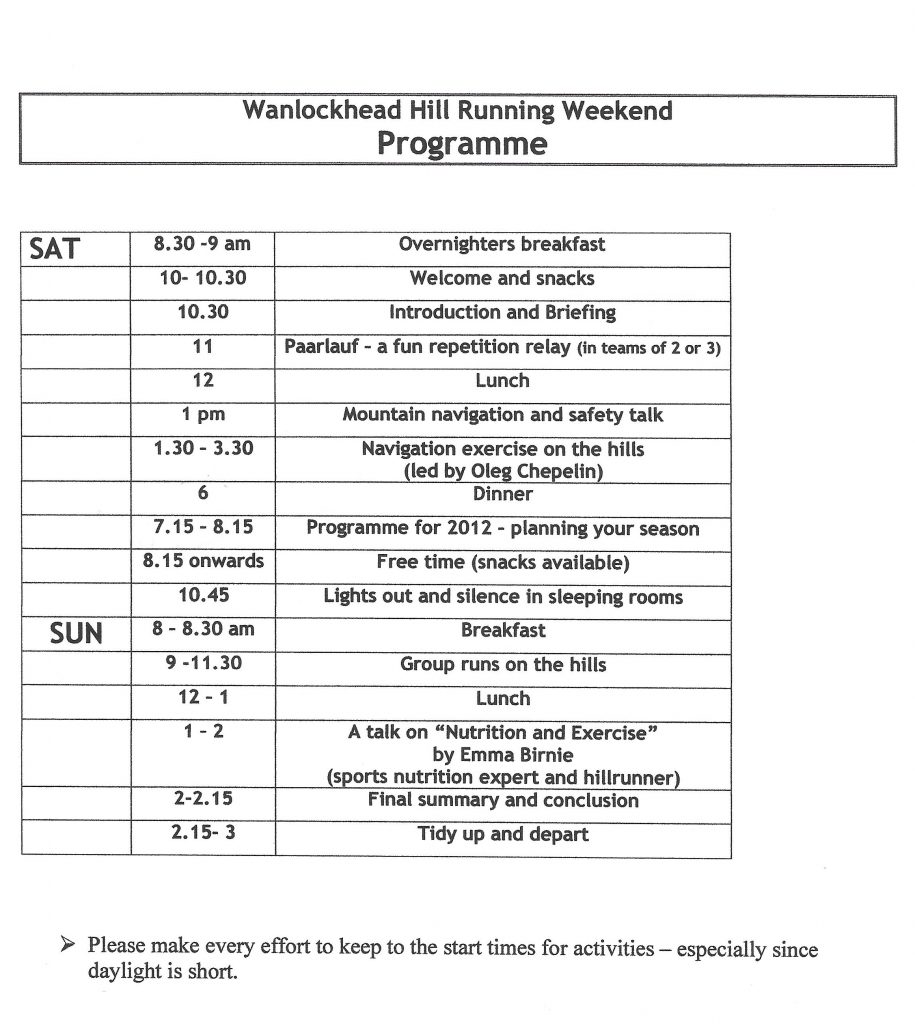 Attached to this information sheet was a list of participants with their details which included their name, phone number, where they were from, whether and how much they had paid and notes which included their age if they were juniors. At this camp, there were 16 juniors and 26 seniors; 15 females and 27 males. There were seven staff members. These were Malcolm Patterson who was a run leader; Mags Turnbull head caterer, Edel Mooney helper and coach, Oleg Chepelin who was an orienteering coach, Jill Horsburgh Caterer, Denis Bell Coach and Martin Hyman who was noted as ‘Wise Old Man’. The weekends were always successful but while talking about Squad Weekends, the Juniors were not left out: how could they be when they had been doing so well on the international scene in the early 90’s? Staying with 1996, there was a very good one at the Comrie Croft Bunkhouse, between Comrie and Crieff. The review below is from the ‘Scottish Hill; Runner’ of June 1996.
Attached to this information sheet was a list of participants with their details which included their name, phone number, where they were from, whether and how much they had paid and notes which included their age if they were juniors. At this camp, there were 16 juniors and 26 seniors; 15 females and 27 males. There were seven staff members. These were Malcolm Patterson who was a run leader; Mags Turnbull head caterer, Edel Mooney helper and coach, Oleg Chepelin who was an orienteering coach, Jill Horsburgh Caterer, Denis Bell Coach and Martin Hyman who was noted as ‘Wise Old Man’. The weekends were always successful but while talking about Squad Weekends, the Juniors were not left out: how could they be when they had been doing so well on the international scene in the early 90’s? Staying with 1996, there was a very good one at the Comrie Croft Bunkhouse, between Comrie and Crieff. The review below is from the ‘Scottish Hill; Runner’ of June 1996.Denis Bell: Official & Administrator
A HELP prize giving with Guest of Honour Yvonne Murray
Almost everyone involved in athletics in any serious way takes on other tasks away from the training track and the racing programme. There is almost always an overlap with club committees and even at times with District Committees, and in exceptional cases goes further yet and into national and international involvement. Haddington East Lothian Pacemakers (HELP) was formed by a group of runners in 1983 as a result of people watching the first London Marathon in 1981. Founding member, Henry Muchamore is the man the old brigade have a lot to thank for. Henry was the main driving force, pushing the club forward in establishing a very well respected, competitive club. The peak years of the club were from about the mid 80’s to late 90’s. It had athletes winning road, hill and cross-country races. One of the club’s early aims was to raise money for charities and they raised a lot when they did a ‘Run the World Relay’ round the boundary of the town, they raised money from all sorts of local sources. Tens of thousands of pounds were raised by the club.
Of the charity work, Denis himself says “I managed personal charity contributions too…my co-workers at Brunton’s Musselburgh were so generous on at least 2 occasions, and I think I got another two ‘personally collected’ amounts from families and friends etc. For doing my marathons especially….our HELP acronym was most certainly rooted so generously in trying to support and help charitable causes.” Denis’s charity efforts did not stop there however. and among the more notable were the following:
- He also did an abseil from Glasgow University Tower when working with Keystone Valves for the Macmillan Cancer Fund.
- He did the Corryairack Challenged from Fort Augustus to Kincraig for the Badaguish Respite Centre, near Coylumbridge. This was a duathlon running 17 miles to Garbh Bridge and then cycling a further 10 miles to Kincraig.
- Denis was also part of a 10 man team with a support group of three ‘whusketeers’ that did the JOGLE (John o’Groats to Lands End) on their cycles just 7 years ago in eight and a half days to raise funds for Stem Cell research.
Henry was the club’s first Chairman, and when Denis and some other talented runners joined the club they added even more enthusiasm. It is always important when setting up a new club to draw up a Constitution right at the beginning and Denis played a big part in that. A real livewire within the club, he was said to be involved in everything: for instance, the club had a magazine called ‘The Chaser’ and Denis wrote reports on several issues including reports on hill running. When Henry stepped down as Chairman, he tells me that Denis took over. In about 1986 the club organised the ‘Haddington 5’ Miles in June. It subsequently organised the half marathon in June which in turn was followed by the ‘Haddington 10’ miles for August. Henry Muchamore tells us that Denis was very important in setting these races up, maybe especially the 10 miles, and filled many posts in the organisation. He was the club’s first Scottish international when he represented the country in hill running doing the Snowdonia Mountain Race and was made a life member. The photograph below shows Denis receiving a trophy (for something!) at a HELP Presentation.
Having started as a club committee member, he had held just about every office – from Chairman to Club Captain – and discovered that he enjoyed the experience, and it was natural that he should continue to be involved when he moved to Torrance. The involvement continued at National level.
Denis was fairly quickly recruited to the Scottish Hill Runners Association committee and was active on a variety of fronts. In the mid 90’s the governing body for the hill runners was one of the seven that came together under the Scottish Athletics Federation banner. He says: “I was active in SHRA committee work and the transition from Scottish Hill Runners Association [aligned to Fell Runners Association] to Hill Running Commission, under direct Scottish Athletic Federation]” This was a serious exercise as the whole structure of the sport in the country was being radically altered. Apart from that, I also did some informal coaching (hunting out Juniors from schools cross-country etc) and facilitating ‘Squad development'(really towards the elites, but in practice superbly supported by ‘rank and file’) under the tutelage of Martin Hyman.. It all developed from there and just grew. Others pitched in from our ‘friendly sport’ , and took ownership ,led and made things happen, in my opinion, very democratically and inclusively.”
In brief Denis
- Worked as team manager/ assistant.
- Worked in race organisation.
- Carried on with administration (committee) work,
- He also tried to ensure a continued focus on uphill-only running races (WMRT format ‘bi-annual’) and
- kept working to support juniors entering the sport. ” Inaugural Juniors Home Championships were at Grasmere, Lake District, won by our Emma Gorman (Milngavie, straight from Cross-Country at school) and John Brooks (Lochaber). It was a superb set of results too at the later Welsh event in Llanberis.. (we possibly got our ‘best ever’ Scottish athletics team at a single event.”).
Emma’s picture is below – a real study in concentration and determination as well as a very good image of the height and nature of the course at Grasmere. Denis commented on the race at Llanberis the following year: rightly so, it was a superb performance by the Scots. In the Under 18 Boys race, Iain Donnan by half a minute from England’s Andy Ellis with the other Scots being John Newsom 4th and Graham Bee 6th totalling 11 points to England’s 15 and Ireland’s 23. The Under 18 Girls were led home by Sarah Blake who defeated England’s Katie Ingram by 19 seconds with the other two runners being Marbeth Shiell in 5th, Bryony Curtis 6th giving a team total of 12 points to England’s 14 and Ireland’s 19. In the Under 16 Boys race, The three counting Scots were Scott Fraser 5th, Andrew McCall 6th and David Butcher 7th – all three within 30 seconds of each other. The team wa second with 18 points, two behind England and six ahead of Ireland. Three teams, two firsts and one second! In the remaining race – Under 16 Girls – Jennifer Emsley was unlucky to be just out of the medals in fourth but there was no team there to back her up. The selectors had done their work well – for a look at the selection race organisation and report just follow this link.
The Fellrunner magazine of February 2003 reported on the race as follows:
“All the home countries plus Ireland made great efforts this year to field full teams for the junior home international which was held on the more gradual grassy slopes of Moel Eilio. This coupled with a relatively flat start and finish was a much faster course than usual allowing those runners with a degree of speed to compete on more even terms with the more out and out fell junior. In the team awards, England shared the team honours with Scotland, with Ireland taking a well deserved third in front of hosts Wales. The competition up front was very competitive with Richard Newton of England winning with the biggest margin of the day. Other notable wins were those of Karrie Hawitt of England who had the company of the new junior England Fell sensation, 13 year old Daniele Walker, all the way to the turn. Scotland had two gold stars in Iain Donnan and Sarah Blake who impressed greatly with their front running and, in particular, Iain’s tremendous descending ability. In the Welsh team, Rhodri Buffet had a super run in winning the U/16 bronze medal, as did Colm Turner for Ireland in the U/18 race Eoghan Gill in the U16 Boys race had the best performance from the N Ireland team.”
Denis had been a joint team managher with Helen Diamantides who sent his this note attached to some other correspondence after the event.
He continues, “In Committee work, I was also keen to try and give general runners something to aim for rather than most things being for the Elite athletes, so designed a format for ‘Alternative Hill Racing Champioships’, in 1996, Effectively turning the ‘points scored HRC format (21 points for 1st downwards making it easier for stats compilations for the Championships.)’ on it’s head…so that highest results got the fewest points and overall ‘lowest amassed points win’….this accounted for a good few people who went to many events through the year getting credits that were not elitist but results for commitments to ‘many races’.
Meantime, whilst still in Haddington, I was busy in committee work there and held the Chair position. I also helped out at our road race series, racing some; and did a quirky lovely event called The Chairman’s Challenge. Multi-age team relays around Saltoun Woods, with a BBQ afterwards!! Great fun, serious (seniors trying to get ‘best timed legs!) but not so serious with wee kids ‘n’ wives involved too!
From ‘Chasers’, Christmas Newsletter, 1986
I was very generously made Honorary Life Member, and was the club’s ‘first international athlete’ ( having been selected to run Snowdonia (when it was an early-doors true international high calibrate race) ).
We moved to Torrance with family (work, redundancy related) when at the tail end of my senior-vet period, and needed the Campsies and Lennoxtown Forest to train on. I only had a couple of years competing as a vet –
After the racing, I then started a wee passion to do big ‘runs’ (ridge routes..) with great colleague Peter Marshall, and ultimately as solos.
By this time, still active in admin, management and trying to encourage our sport development, I had lost interest in competing (it had been about 12 years very active racing, plus all the overload of the other stuff as well as a busy life) and ended up training for fitness and trying to balance a career (still 45-50 hours per week), growing family, married life and being a ‘citizen’!!!!”
But Denis was still as active as ever. For instance
*as part of his interest in education and the next generation of hill runners, he was involved in a Come and Try day, organised by Christine Menhennet in Clydebank. Just click on the this link for an account of it.
*Then there were the squad weekends at Wanlockhead, Comrie, Lochearnhead, Glencoe, Dalbeattie, and more, which, although aimed at the top level of athletes, were open to all who wanted to come and learn.
*The SAF coaching committee wanted to set up a new type of coach education to replace that which had been in place since the days of Frank Dick and the SAAA in the 1970’s and Denis’s expertise was wanted on that too.
*As part of his involvement with the SAF and its coaching structure, he was one of the selectors for the World Mountain Championships at Berchtesgaden in Germany in September, 1994 along with Jim Darby (national coach) and Alistair Lorimer.
Emma Gorman at Grasmere
Denis was, as suggested at the start of his profile as a runner, very energetic in all that he undertook. He trained hard and then combined the training with starting a career as an administrator at HELP where he is still fondly remembered and highly respected as a hard working and loyal club member. He went on to run successfully on the hills in championships as Senior and Veteran, and in some international races, and managed to combine that with work on the SHRA Committee. Finally there was his participation in a number of serious initiatives dealing with the development of the sport and its athletes and his duti8es as an international team manager. As they said at the end of the movie about ‘Gregory’s Girl’ – “What a Guy!”
Hugh’s Gems 7
We’ve got so many great pictures, great examples of athletics middle and long distance memorabilia, from Hugh Barrow that we have to start a new collection. This is the start of collection 7. Great pic of Eric Liddell which came from Frederic Humbert.
The Edinburgh Southern Harriers Clubhouse at Fernieside being built
The plaque placed on the housing built where the clubhouse stood
Pirie, Brasher, Chataway, Bannister, Churchill: Festival of Britain time!
Zatopek finds a new event
1924 Olympic Cross-Country
Hugh says: Another brilliant post by the equally brilliant Mike Fanelli , who continues to unearth wonderful facts
HOUDINI THE HARRIER
As a youngster, Harry Houdini was a great cross country runner.
Initially he competed for the Allerton Club and then (as pictured here) NYC’s Pastime Athletic Club.
At age 18, he set the record for the loop race aound Central Park.
Around the same time, he defeated Sidney Thomas, an English champion, in a twenty-mile race. Thomas would later set world records for ten-, fifteen-, and twenty-miles.
Many year’s later, I’d quite often run past his former San Francisco home…a great big vertical brick mansion in Sea Cliff, SF’s toniest neighborhood
.It wouldn’t be a Hugh Barrow collection without … Herb Elliott.
The Fell Runner: Some Covers
The ‘Fell Runner’ magazine (sometimes called ‘The Fellrunner’) is a marvellous publication. It is published by the Fell Runners Association and is a well produced magazine and a fund of information on the world of all who love to run on the hills of Britain – and indeed further afield. There are detailed results of pretty all hill races in the country, articles of interest fo all interested in the sport, profiles of individual runners (not all of them champions) , training hints, addresses of accommodation all over the British Isles for those looking for somewhere to stay when running in some of the more remote areas – it also has photographs. Superb photographs (‘superb’ was chosen deliberately) taken at great vantage points to show the nature of any particular race, to show the height that the athletes have climbed, the view down to the finish or even the feelings of the runner as displayed by his face or body posture. The magazine is a ‘must have’ for the fell runner. Some of the photographs will be shown here – mainly those of Scottish runners or races – from the period from Spring 1987.
The Bens of Jura, 1987 (Photo by P. Hartley)
From inside back cover, December, 1988
Colin Donnelly at Edale (Photo by Peter Hartley)
September 1990
John Blair-Fish, Winner of the Pentland Skyline (Photo: Brian Covell)
Back Cover: June 1994
Main picture. Dermot McGonigle on Ben Shiantaich ; October 1996
.
